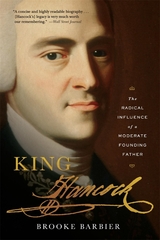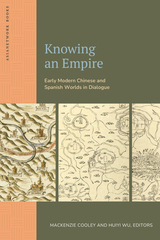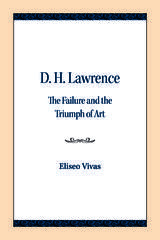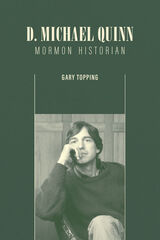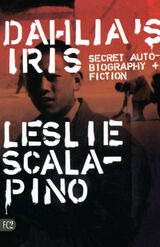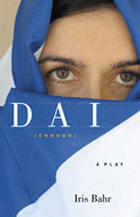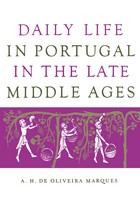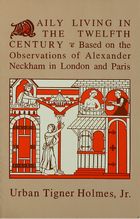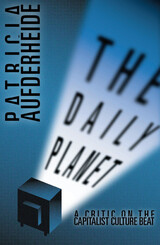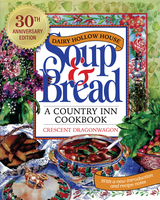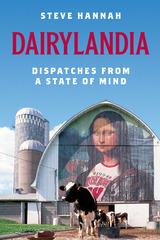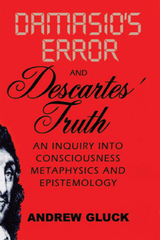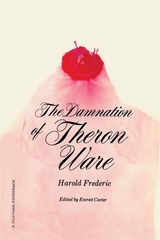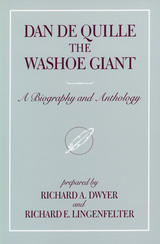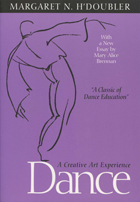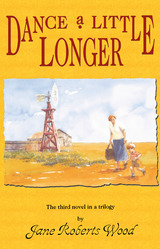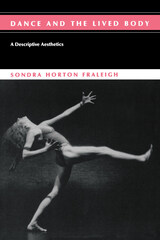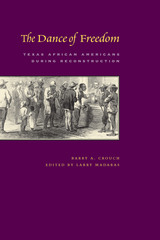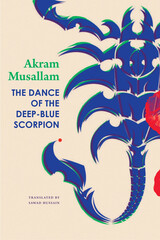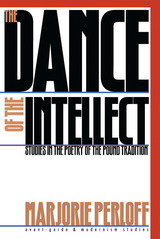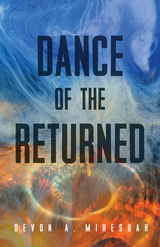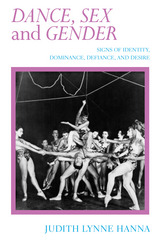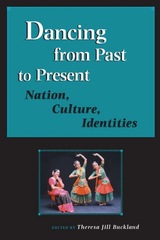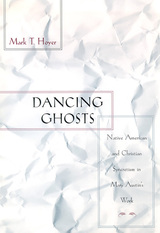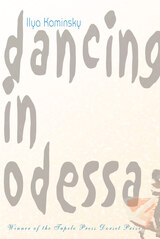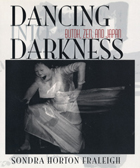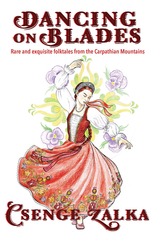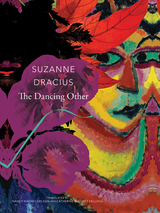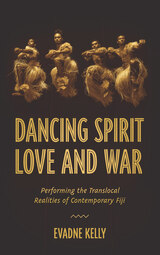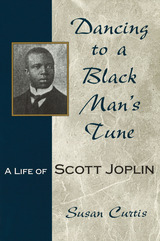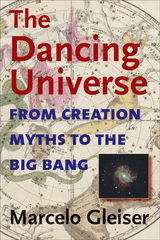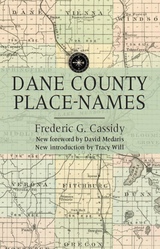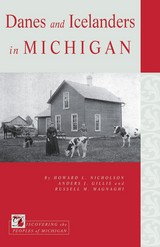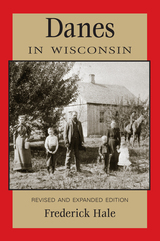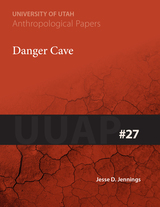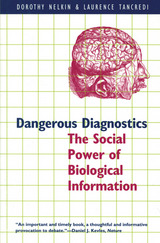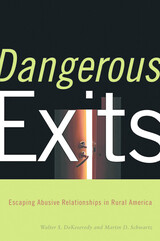 D and B Ice Cream
Thomas W. Miller
Research Publishers, 2006 D and B Ice Cream (a case study); published in 2007; 18 pages.
Sales forecasting is a critical component of business planning, a first step in the budgeting process. Methods that provide accurate forecasts can be of great help to management. Business decisions guided by accurate forecasts are better than decisions guided by guesswork, personal biases, or hunches.
The D and B Ice Cream case study describes a small company and the decisions that it must make about its store locations. What will sales be in the coming year? Should the owners drop poorly performing franchise locations? Should they open stores in new locations?
The case provides cross-sectional demographic and meteorological data for fifteen existing restaurants and two prospective restaurants. These may be useful in site selection. There are also time-series sales data for the fifteen existing restaurants across a period of five years. The time-series data may be useful in sales forecasting.
D. H. Lawrence: An Unprofessional Study
Anaïs Nin
Ohio University Press, 1964 In 1932, two years after D. H. Lawrence’s death, a young woman wrote a book about him and presented it to a Paris publisher. She recorded the event in her diary: “It will not be published and out by tomorrow, which is what a writer would like when the book is hot out of the oven, when it is alive within oneself. He gave it to his assistant to revise.” The woman was Anaïs Nin. Nin examined Lawrence’s poetry, novels, essays, and travel writing. She analyzed and explained the more important philosophical concepts contained in his writings, particularly the themes of love, death, and religion, as well as his attention to primitivism and to women. But what Anaïs Nin brought to the explication of Lawrence’s writing was an understanding of the fusion of imaginative, intuitive, and intellectual elements from which he drew his characters, themes, imagery and symbolism.
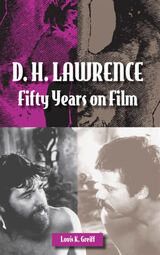 D. H. Lawrence: Fifty Years on Film
Louis K. Greiff
Southern Illinois University Press, 2001 Between 1949 and 1999, the life and works of D. H. Lawrence inspired ten feature films: nine based on works of fiction and one based on biography. In D. H. Lawrence: Fifty Years on Film, Louis K. Greiff examines these films as adaptations, as cultural or historical documents, and as independent works of art. Significantly, the films were not spread evenly throughout the decades but appeared in three clusters. The first group, or the “black and white,” appeared between 1949 and 1960. With the exception of Marc Allegret’s L’Amant de Lady Chatterley (1955), all celebrate the British common man as a midcentury hero and promote an unmistakable yet never strident postwar ethos that is Marxist in spirit. The second cluster occurred during the late 1960s and early 1970s. These films show Lawrence’s values as similar to the cultural values of the time—nonconformity, neobohemianism, sexual rebellion, war protest, and the celebration of youth. In his discussion of the third group Greiff explains why, in an un-Lawrentian decade like the 1980s, there was a revival of Lawrence’s works on film. Greiff also deals with the contributions made by directors Ken Russell and Christopher Miles, both of whom directed Lawrence films of the latter two clusters. He shows how Russell and, to a lesser extent, Miles were responsible for bringing mass audiences in touch with the works of Lawrence. Greiff’s final and most important goal is to interpret and evaluate the Lawrence films. He looks first at the film as a visual representation of its text, then as an original act of creation and object of art.
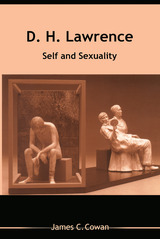 D H LAWRENCE: SELF AND SEXUALITY
James C. Cowan
Ohio State University Press, 2003 D. H. Lawrence: Self and Sexuality is a psychoanalytic study of D. H. Lawrence’s life and writings. James Cowan relies most notably the methods of Heinz Kohut, psychoanalytic “self psychology,” and employs as well the object relation theories of D. W. Winnicott and others. This work also examines sexual issues in Lawrence’s work from a literary and critical perspective, employing authoritative medical and psychoanalytic sources in human sexuality. Lawrence’s work, which was early read in traditional Freudian terms, has only recently been considered from other psychoanalytic perspectives. In this self psychological study, Cowan provides a new and path-breaking analysis of Lawrence. Turning to several problematic issues of sexuality in Lawrence, the author first discusses a number of Lawrence’s sexual fallacies, and personal and cultural issues. Cowan also considers contrasting idealized and negative presentations of Mellors and Sir Clifford Chatterley in Lady Chatterley’s Lover, and the theme of the “loss of desire” sequence of poems in Pansies.
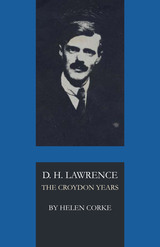 D. H. Lawrence: The Croydon Years
By Helen Corke, introduction by Warren Roberts
University of Texas Press, 1965 Croydon, England, was the setting of the famous three-way friendship of D. H. Lawrence, Jessie Chambers, and Helen Corke, all of whom made literary records of their association, and all of whom appeared as characters in Lawrence novels. Perhaps the most objective of these records were Helen Corke’s, which became difficult to acquire. Their scarcity and their continuing usefulness were the stimulus for publication of this volume, which contains in four statements Helen Corke’s “major comment on Lawrence the man and Lawrence the artist.” The “Portrait of D. H. Lawrence, 1909–1910,” a section from Corke’s unpublished autobiography, gives the reader glimpses into the earliest stages of the Lawrence-Corke friendship, when Lawrence worked to bring meaning back into Corke’s life after she had suffered a tragic loss. The “Portrait” tells of conversations before a log fire, German lessons, the reading of poetry, and sessions over Lawrence’s manuscript “Nethermere,” which the publishers renamed The White Peacock. In “Portrait,” Corke tells of working with Lawrence on revising the proofs of this book, of Lawrence’s encouragement of her own literary efforts, of their wandering together in the Kentish hill country, and of her first meeting with Jessie Chambers. “Lawrence’s ‘Princess’” continues the narrative of the triple friendship, carrying it to its sad ending, but with the focus on Jessie Chambers. Perceptively and sympathetically written, it throws a clarifying light on the psychology of Lawrence and presents with literary charm another human being—Jessie, the Miriam of Sons and Lovers. In combined narrative-critique method, Corke, in the essay “Concerning The White Peacock,” relates Lawrence’s problems in writing this novel and gives an analysis of its literary quality. Lawrence and Apocalypse is cast in the form of a “deferred conversation” in which Lawrence and Corke discuss his philosophical ideas as presented in his Apocalypse. Although the book was written to present Lawrence’s ideas, its significance reposes equally in Corke’s reaction to his thought. As a succinct statement of Lawrence’s teachings about the nature of humanity, it has unique value.
D. H. Lawrence: The Failure and the Triumph of Art
Eliseo Vivas
Northwestern University Press, 1960 In D. H. Lawrence, Eliseo Vivas examines the aesthetic triumphs and failures of Lawrence’s major works through a literary device that he coins “the constitutive symbol.” Understanding how Lawrence uses the constitutive symbol provides new insight into his world views. Vivas covers a wide range of Lawrence's work, including Aaron’s Rod, Kangaroo, The Plumed Serpent, Lady Chatterley’s Lover, Sons and Lovers, The Rainbow, and Women in Love. Vivas was one of the first scholars to use psychological criticism to read Lawrence’s works; Vivas's and his particularly fresh reading of Lawrence’s novels continue to make this a significant literary-critical study.
D. Michael Quinn: Mormon Historian
Gary Topping
Signature Books, 2022 D. Michael Quinn (1944–2021) was one of Mormonism’s greatest historians, though his books have profound relevance to Utah and western history as well. After completing his doctorate in history at Yale University in three years, he taught at Brigham Young University from 1976 to 1988. His treatment of difficult themes in Mormon history drew controversy, which led to resignation from his academic position and to his eventual excommunication from the Church of Jesus Christ of Latter-day Saints. His large, elaborately documented books, such as his three volumes on the Mormon hierarchy and his Early Mormonism and the Magic World View, set a new standard for Mormon historical scholarship.
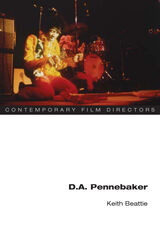 D.A. Pennebaker
Keith Beattie
University of Illinois Press, 2011 This volume is the first book-length study of the extensive career and prolific works of D.A. Pennebaker, one of the pioneers of direct cinema, a documentary form that emphasizes observation and a straightforward portrayal of events. With a career spanning decades, Pennebaker's many projects have included avant-garde experiments (Daybreak Express), ground-breaking television documentaries (Primary), celebrity films (Dont Look Back), concert films (Monterey Pop), and innovative fusions of documentary and fiction (Maidstone). Exploring the concept of "performing the real," Keith Beattie interprets Pennebaker's films as performances in which the act of filming is in itself a performative transgression of the norms of purely observational documentary. He examines the ways in which Pennebaker's presentation of unscripted everyday performances is informed by connections between documentary filmmaking and other experimental movements such as the New American Cinema. Through his collaborations with such various artists as Richard Leacock, Shirley Clarke, Norman Mailer, and Jean-Luc Godard, Pennebaker has continually reworked and redefined the forms of documentary filmmaking. This book also includes a recent interview with the director and a full filmography.
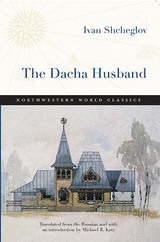 The Dacha Husband: A Novel
Ivan Shcheglov
Northwestern University Press, 2009 In addition to offering fresh editions of well-known works, Northwestern World Classics will also reintroduce to a new generation "lost classics," such as Ivan Shcheglov’s 1896 The Dacha Husband (Dachnyi muzh). Despite being considered the most interesting writer of the late 1800s by no less a writer than his onetime collaborator Anton Chekhov, Ivan Shcheglov is largely forgotten in the West. In the able hands of Michael Katz, acclaimed translator of Dostoevsky, Turgenev, and Tolstoy, Shcheglov’s strikingly modern style and biting satire come alive for today’s readers.
The Dacha Husband (a term created by Shcheglov) satirizes a type of man who came to prominence in the later part of the nineteenth century in Russia; he was typically upper middle class, was married to a materialistic woman, and commuted to work in St. Petersburg during the summer while his wife and children vacationed at the family’s dacha in Pavlovsk.
Among the novel’s highlights is a "Convention of Dacha Husbands," in which a "small group of insulted and injured husbands gathered together, in secret from their wives, . . . for a general discussion of contemporary marital misfortunes and a search for some means to protect their human rights." The convention is unexpectedly interrupted by the wives, who arrive to retrieve their rebellious spouses. A coda informs the reader that at least one of the proposals offered during the meeting survived: the construction of a "shelter for the care of deserted husbands."
 The Dad Rock That Made Me a Woman
Niko Stratis
University of Texas Press, 2025 A memoir-in-essays on transness, dad rock, and the music that saves us. When Wilco’s 2007 album Sky Blue Sky was infamously criticized as “dad rock,” Niko Stratis was a twenty-five-year-old closeted trans woman working in her dad’s glass shop in the Yukon Territory. As she sought escape from her hypermasculine environment, Stratis found an unlikely lifeline amid dad rock’s emotionally open and honest music. Listening to dad rock, Stratis could access worlds beyond her own and imagine a path forward. In taut, searing essays rendered in propulsive and unguarded prose, Stratis delves into the emotional core of bands like Wilco and The National, telling her story through the dad rock that accompanied her along the way. She found footing in Michael Stipe’s allusions to queer longing, Radiohead’s embrace of unknowability, and Bruce Springsteen’s very trans desire to “change my clothes my hair my face”—and she found in artists like Neko Case and Sharon Van Etten that the label transcends gender. A love letter to the music that saves us and a tribute to dads like Stratis’s own who embody the tenderness at the genre’s heart, The Dad Rock That Made Me a Woman rejoices in music unafraid to bare its soul.
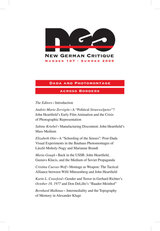 Dada and Photomontage across Borders, Volume 36
David Bathrick, Andreas Huyssen, and Anson Rabinbach, eds.
Duke University Press This special issue of New German Critique explores the art of Dada and photomontage in transnational contexts. Dadaism, an art movement cultivated during World War I, questioned traditional aesthetics and eventually led to the formation of surrealism. Focusing on Dada’s achievements in building a network of artists in Europe and America, this issue examines photomontage as an integral part of the movement, as well as its relationship to mass media, photography, propaganda, constructivism, and left-wing politics in the Soviet Union and western Europe during the 1920s and 1930s. The central figure of the issue is John Heartfield, a Dadaist who influenced much of the art world in Europe after World War I. The collection investigates Heartfield’s lesser-known early work with cinema in the service of the German High Command. Believing that photographic cinema was akin to war propaganda, Heartfield rejected live-action war footage in favor of American cinematic animation to promote an honest discussion about the horror and realities of war. One essay explores Heartfield’s photomontages while turning to film theory as a way of interpreting the politics of his work, demonstrating how his photomontages retain the organic and traditional nature of photography even as they produce cognitive dissonance and satire. Another essay on Heartfield’s role in Soviet discussions of the 1930s offers fascinating insights based on new archival research. The issue also looks at the relationship between Heartfield and the illustrated German magazine Arbeiter-Illustrierte-Zeitung and how that magazine influenced photomontage across Europe.
 The Dada Cyborg: Visions of the New Human in Weimar Berlin
Matthew Biro
University of Minnesota Press, 2009 Finding the cyborg in early twentieth-century German art In an era when technology, biology, and culture are becoming ever more closely connected, The Dada Cyborg explains how the cyborg as we know it today actually developed between 1918 and 1933 when German artists gave visual form to their utopian hopes and fantasies in a fearful response to World War I. In what could be termed a prehistory of the posthuman, Matthew Biro shows the ways in which new forms of human existence were imagined in Germany between the two world wars through depictions of cyborgs. Examining the work of Hannah Höch, Raoul Hausmann, George Grosz, John Heartfield, Otto Dix, and Rudolf Schlichter, he reveals an innovative interpretation of the cyborg as a representative of hybrid identity, as well as a locus of new modes of awareness created by the impact of technology on human perception. Tracing the prevalence of cyborgs in German avant-garde art, Biro demonstrates how vision, hearing, touch, and embodiment were beginning to be reconceived during the Weimar Republic. Biro’s unique and interdisciplinary analysis offers a substantially new account of the Berlin Dada movement, one that integrates the group’s poetic, theoretical, and performative practices with its famous visual strategies of photomontage, assemblage, and mixed-media painting to reveal radical images of a “new human.”
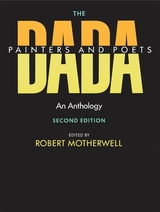 The Dada Painters and Poets: An Anthology, Second Edition
Robert Motherwell
Harvard University Press, 1989 The Dada Painters and Poets offers the authentic answer to the question “What is Dada?” This incomparable collection of essays, manifestos, and illustrations was prepared by Robert Motherwell with the collaboration of some of the major Dada figures: Marcel Duchamp, Jean Arp, and Max Ernst among others. Here in their own words and art, the principals of the movement create a composite picture of Dada—its convictions, antics, and spirit.
First published in 1951, this treasure trove remains, as Jack D. Flam states in his foreword to the second edition, “the most comprehensive and important anthology of Dada writings in any language, and a fascinating and very readable book.” It contains every major text on the Dada movement, including retrospective studies, personal memoirs, and prime examples. The illustrations range from photos of participants, in characteristic Dadaist attitudes, to facsimiles of their productions.
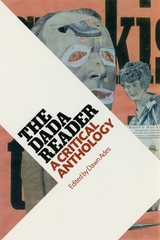 The DADA Reader: A Critical Anthology
Edited by Dawn Ades
University of Chicago Press, 2006 The revolutionary Dada movement, though short-lived, produced a vast amount of creative work in both art and literature during the years that followed World War I. Rejecting all social and artistic conventions, Dadaists went to the extremes of provocative behavior, creating “anti-art” pieces that ridiculed and questioned the very nature of creative endeavor. To understand their movement’s heady mix of anarchy and nihilism—combined with a lethal dash of humor—it’s essential to engage with the artists’ most important writings and manifestos. And that is is precisely where this reader comes in.
Bringing together key Dada texts, many of them translated into English for the first time, this volume immerses readers in some of the most famous (and infamous) periodicals of the time, from Hugo Ball’s Cabaret Voltaire and Francis Picabia’s 391 to Marcel Duchamp’s The Blind Man and Kurt Schwitters’s Merz. Published in Europe and the United States between 1916 and 1932, these journals constituted the movement’s lifeblood, communicating the desires and aspirations of the artists involved. In addition to providing the first representative selection of these texts, The Dada Reader also includes excerpts from many lesser-known American and Eastern European journals.
Compiled with both students and general readers in mind, this volume is necessary reading for anyone interested in one of the most dynamic and influential movements of the twentieth century.
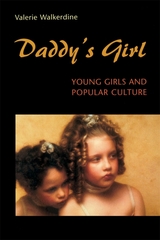 Daddy's Girl: Young Girls and Popular Culture
Valerie Walkerdine
Harvard University Press, 1997 When she's itty bitty and blond, wearing ribbons and curls and an aura of money, she's adorable and vulnerable, the tiny, innocent heart of our culture. But when the little girl comes from the working class, she's something else. Just what, and why so little is said about it, are the questions Valerie Walkerdine asks in Daddy's Girl, a book about how we see young girls, how they see themselves, and how popular culture mediates the view.
Walkerdine's study looks at little girls on television and in the movies, in advertisements and popular songs. In figures from Annie to Shirley Temple in any number of her plucky poor girl roles, she shows us little orphans saddled with the task of representing the self-sufficient working class on the one hand and the loveable object of middle class charity on the other. The real working class girl, whose fantasies feed on a strange mix of these images and the rest of what popular culture offers, with all its glamorized sex and violence, is also the object of Walkerdine's attention. Reflecting on her own working class roots and taking us into the homes and the confidence of working class girls today as they watch television and movies and listen to popular songs, she gives us a sense, at once troubling and poignant, of the portrayal and manipulation of little girls as a canny part of the production of civilized femininity.
At the center of this work is the issue of how girl children are taught to think of themselves and how their depiction puts them in their place. This concern leads Walkerdine to questions about television and parental control, about Freud's seduction theory and the origins of fantasy, about the political and erotic meaning of the ubiquitous gaze our culture trains on the little girl, and about academics' approach to the subject.
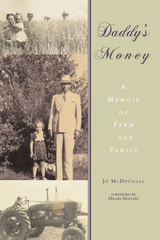 Daddy’s Money: A Memoir of Farm and Family
Jo McDougall
University of Arkansas Press, 2011 Jo McDougall brings a poet's sensibility to memoir. Recounting five generations of Delta rice farmers, through family archives and oral histories, she traces how the clan made their way into the fabric of America, beginning with her Belgian-immigrant grandfather, a pioneer rice farmer on the Arkansas Delta at the turn of the twentieth century. As John Grisham has for a 1950s Arkansas cotton farm, McDougall illuminates an Arkansas rice farm in the 1930s and 1940s. The Garot family's acreage near DeWitt and the town itself provide the stage for McDougall's wry, compelling, and layered account of the day-to-day of rice growing on the farm that her father inherited. In that setting she discovers a rich "universe of words" in the Great Depression, comes of age during World War II, and finds her way alongside "that whole quirky, compelling cast of characters" that comprised her kin. In this conflicted, ironic, southern-but-universal account of betrayal, heartbreak, loss, and joy, "the vagaries and the grace" of the land join forces with the power of money as family bonds are both forged and dissolved. Deeply felt, unsentimental, and often humorous,Daddy's Money presents McDougall's life and the lives of her relatives in the way that all our lives are eventually framed-as stories. "When all else is lost," the author maintains, "the stories remain."
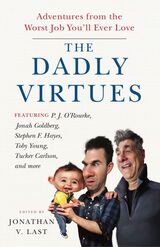 The Dadly Virtues: Adventures from the Worst Job You'll Ever Love
Jonathan V. Last
Templeton Press, 2015 From the all-star cast who brought you The Seven Deadly Virtues comes a book with a look at the good life… or the crazy-stressful-overwhelmed life… of a father.
The Dadly Virtues is a tongue-in-cheek collection of encouragement and guidance for any stage of fatherhood, from pacifying babies to prepping for senior prom, from cutting the cord to getting the first, “Best Grandpa” t-shirt. P.J. O’Rourke sets the stage with the chapter, “What Do Men Get from Fatherhood? Besides What They Put In …” and then is followed by:
•Matthew Continetti’s, “Newborn Terror: The Moment You Realize that ‘Bundle of Joy’ Is a Euphemism for Something Very Different.”
•Stephen F. Hayes’ “Siblings: The Best Gift You’ll Ever Give Your Kids.”
•Jonah Goldberg’s “Get Your Kid a Dog: The Moral Case for Pets.”
•Tucker Carlson’s “In Praise of Adventure: How to Fill a Child’s Life with Excitement and Danger (without Getting Them Killed).”
•Michael Graham’s, “Dating: Enjoy the Movie and Please Keep the Impregnation to a Minimum.”
•Christopher Caldwell’s “College: It’s Not as Bad as You Think; It’s Worse.”
•Andrew Ferguson’s “Emerging Adults and Empty Nesters: Just When You Had Fatherhood All Figured Out.”
•Toby Young’s “The Dark Side: Bad Parenting and the Things We Think, but Do Not Say.”
•Joseph Epstein’s “Thanks, Grandpa: Grandfatherhood and the Spirit of the Age.”
•And more.
Father-to-be, two-time-dad, or granddad, each essay will make you laugh and, at the same time, reinforce your commitment to the virtuous—the dadly—life.
 Dads, Kids, and Fitness: A Father's Guide to Family Health
Marsiglio, William
Rutgers University Press, 2016 Now more than ever, American dads act as hands-on caregivers who are devoted to keeping themselves and their families healthy. Yet, men are also disproportionately likely to neglect their own health care, diets, and exercise routines—bad habits that they risk passing on to their children. In Dads, Kids, and Fitness, William Marsiglio challenges dads to become more health-conscious in how they live and raise their children. His conclusions are drawn not only from his revealing interviews with a diverse sample of dads and pediatric healthcare professionals, but also from his own unique personal experiences—as a teenage father who, thirty-one years later, became a later-life dad to a second son. Marsiglio’s research highlights the value of treating dads as central players in what he calls the social health matrix, which can serve both healthy children and those with special needs. He also outlines how schools, healthcare facilities, religious groups, and other organizations can help dads make a positive imprint on their families’ health, fitness, and well-being. Anchored in compelling life stories of joy, tragedy, and resilience, Dads, Kids, and Fitness extends and deepens public conversation about health at a pivotal historical moment. Its progressive message breathes new life into discussions about fathering, manhood, and health.
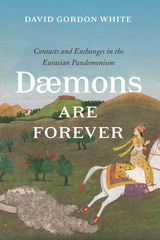 Daemons Are Forever: Contacts and Exchanges in the Eurasian Pandemonium
David Gordon White
University of Chicago Press, 2021 A richly illustrated tapestry of interwoven studies spanning some six thousand years of history, Dæmons Are Forever is at once a record of archaic contacts and transactions between humans and protean spirit beings—dæmons—and an account of exchanges, among human populations, of the science of spirit beings: dæmonology. Since the time of the Indo-European migrations, and especially following the opening of the Silk Road, a common dæmonological vernacular has been shared among populations ranging from East and South Asia to Northern Europe. In this virtuoso work of historical sleuthing, David Gordon White recovers the trajectories of both the “inner demons” cohabiting the bodies of their human hosts and the “outer dæmons” that those same humans recognized each time they encountered them in their enchanted haunts: sylvan pools, sites of geothermal eruptions, and dark forest groves. Along the way, he invites his readers to reconsider the potential and promise of the historical method in religious studies, suggesting that a “connected histories” approach to Eurasian dæmonology may serve as a model for restoring history to its proper place at the heart of the discipline of the history of religions.
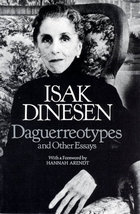 Daguerreotypes and Other Essays
Isak Dinesen
University of Chicago Press, 1979 "Isak Dinesen . . . had an original approach to life that permeated all her work. She loved storytelling, with the result that most of her essays are quasi-narratives, which proceed not from major to minor premise but from one anecdote to another as the way of making concrete whatever idea she is considering. Her work is a delight and at times a marvel."—The New Yorker
"Through these daguerreotypes we begin to understand other periods, the renunciations of World War I, the purpose of houses and mansions, of ritual ceremonials, such as tatooing. We are given a fresh and vivid view of the women's movement . . . which urges that what our 'small society' needs beyond human beings who have demonstrated what they can do, is people who are. 'Indeed, our own time,' she wrote in 1953, 'can be said to need a revision from doing to being.' She demonstrated it in her own work and craft, with courage and with dignity. This collection is as real as a gallery of old daguerreotypes, moving and unfaded. The work, as Hannah Arendt says, of a wise woman."—Robert Kirsch, Los Angeles Times
"These essays . . . have the flavor of good conversation: humorous, easy, personal but not oppressive, the distillation of reading, thought, and experience. Their subjects are of surprisingly current interest. We need make no concessions to the past, need not set our watches back to 'historical.' Isak Dinesen was not a faddish thinker. . . . 'In history it is always the human element that has a chance for eternal life,' Dinesen remarks, and she gives these essays their chance."—Penelope Mesic, Chicago
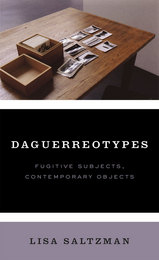 Daguerreotypes: Fugitive Subjects, Contemporary Objects
Lisa Saltzman
University of Chicago Press, 2015 In the digital age, photography confronts its future under the competing signs of ubiquity and obsolescence. While technology has allowed amateurs and experts alike to create high-quality photographs in the blink of an eye, new electronic formats have severed the original photochemical link between image and subject. At the same time, recent cinematic photography has stretched the concept of photography and raised questions about its truth value as a documentary medium. Despite this situation, photography remains a stubbornly substantive form of evidence: referenced by artists, filmmakers, and writers as a powerful emblem of truth, photography has found its home in other media at precisely the moment of its own material demise.
By examining this idea of photography as articulated in literature, film, and the graphic novel, Daguerreotypes demonstrates how photography secures identity for figures with an otherwise unstable sense of self. Lisa Saltzman argues that in many modern works, the photograph asserts itself as a guarantor of identity, whether genuine or fabricated. From Roland Barthes’s Camera Lucida to Ridley Scott’s Blade Runner, W. G. Sebald’s Austerlitz to Alison Bechdel’s Fun Home—we find traces of photography’s “fugitive subjects” throughout contemporary culture. Ultimately, Daguerreotypes reveals how the photograph, at once personal memento and material witness, has inspired a range of modern artistic and critical practices.
Dahlia's Iris: Secret Autobiography and Fiction
Leslie Scalapino
University of Alabama Press, 2003 Detectives are investigating the death of Dahlia Winter's husband and also looking into the mysterious deaths of young boys who are imported for labor in a future-time San Francisco. Citing the plots of Invasion of the Body Snatchers, Terminator 2, and Blade Runner as proof that our sense of inner and outer is tied to rebellion and slavery, the novel appears at first to be a detail of these films all at once, like a colonization of them from the inside. But almost immediately the plot assumes its own life. Based on a conception of the Tibetan written form called Secret Autobiography--which is not the chronological events or actions of a life, but an individual's seeing outside any frames--the novel makes a time-space in which sensation, actions, and thought-memory are occurring alongside our present-day space.
 Dahomean Narrative: A Cross-Cultural Analysis
Melville J. Herskovits and Frances S. Herskovits
Northwestern University Press, 1998 This new edition brings back into print one of the classics in scholarly analysis and translation, written by one of the luminaries of American cultural anthropology. Melville Herskovits and his wife and collaborator Frances spent over twenty years studying the social networks, religion, music, and oral traditions of the peoples of West Africa and their descendants in the New World. Dahomey, the site of their major African work, is in the country now known as Benin.
Published as a companion piece to Northwestern University Press's West African Folktales, Dahomean Narrative provides the basic texts of material collected in the field, and shows how they were collected, analyzed, and theorized in the anthropological and folklore disciplinary traditions of Herskovits's day. The result is a wide-ranging collection, culled from an entire narrative tradition, that remains unique among anthropological publications.
DAI (enough): A Play
Iris Bahr
Northwestern University Press, 2009 Set in a Tel Aviv café in the moments before a suicide bomber enters, Iris Bahr’s 2008 Lucille Lortel Award–winning DAI (enough) courageously speaks to tragic current events. Bahr plays eleven different characters who span the ideological and class spectrum of Israeli society, including a Zionist kibbutznik, an evangelical from America funding an Armageddon fantasy, a West Bank settler, a snooty expat living in Long Island, and a Palestinian professor trying to keep her son from taking the path of extremism. Thanks to the emotional depth and honesty with which Bahr endows these characters and their individual stories, a complex portrait of the Israeli-Palestinian conflict emerges. Alternately very funny and tragic, DAI (enough) is a brave attempt to humanize the headlines.
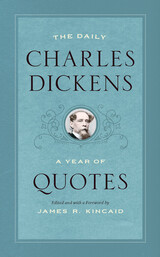 The Daily Charles Dickens: A Year of Quotes
Charles Dickens
University of Chicago Press, 2018 A charming memento of the Victorian era’s literary colossus, The Daily Charles Dickens is a literary almanac for the ages. Tenderly and irreverently anthologized by Dickens scholar James R. Kincaid, this collection mines the British author’s beloved novels and Christmas stories as well as his lesser-known sketches and letters for “an around-the-calendar set of jolts, soothings, blandishments, and soarings.”
A bedside companion to dip into year round, this book introduces each month with a longer seasonal quote, while concise bits of wisdom and whimsy mark each day. Hopping gleefully from Esther Summerson’s abandonment by her mother in Bleak House to a meditation on the difficult posture of letter-writing in The Pickwick Papers, this anthology displays the wide range of Dickens’s stylistic virtuosity—his humor and his deep tragic sense, his ear for repetition, and his genius at all sorts of voices. Even the devotee will find between these pages a mix of old friends and strangers—from Oliver Twist and Ebenezer Scrooge to the likes of Lord Coodle, Sir Thomas Doodle, Mrs. Todgers, and Edwin Drood—as well as a delightful assortment of the some of the novelist’s most famous, peculiar, witty, and incisive passages, tailored to fit the season. To give one particularly apt example: David Copperfield blunders, in a letter of apology to Agnes Wickfield, “I began one note, in a six-syllable line, ‘Oh, do not remember’—but that associated itself with the fifth of November, and became an absurdity.”
Never Pecksniffian or Gradgrindish, this daily dose of Dickens crystallizes the novelist’s agile humor and his reformist zeal alike. This is a book to accompany you through the best of times and the worst of times.
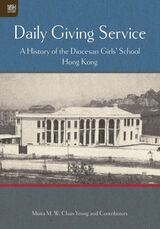 Daily Giving Service: A History of the Diocesan Girls’ School
Moira M. W. Chan-Yeung
Hong Kong University Press, 2022 A history of a Hong Kong girls’ school that illustrates the city’s dynamic development through the first-hand and archival accounts of its alumni.
The Diocesan Girls’ School is one of Hong Kong’s oldest girls’ schools, founded during British rule in 1860. As an alumna of the school’s Class of 1955, Professor Moira Chan-Yeung traces the history of her alma mater from its establishment through its development over the last 150 years in Daily Giving Service. Having grown alongside Hong Kong as it expanded from a small city to a global metropolitan center, Diocesan has become one of the most prominent girl’s schools in the city and serves a significant role in the history of education and growth in the region. With contributions from other alumni, this book recounts various aspects of school life throughout different eras, illustrating the connection between the socioeconomic development of Hong Kong and this cornerstone of regional education.
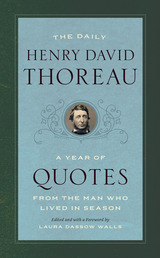 The Daily Henry David Thoreau: A Year of Quotes from the Man Who Lived in Season
Henry David Thoreau
University of Chicago Press, 2020 “Live in each season as it passes; breathe the air, drink the drink, taste the fruit, and resign yourself to the influence of each.”
Modernity rules our lives by clock and calendar, dividing the stream of time into units and coordinating every passing moment with the universal globe. Henry David Thoreau subverted both clock and calendar, using them not to regulate time’s passing but to open up and explore its presence. This little volume thus embodies, in small compass, Thoreau’s own ambition to “live in season”—to turn with the living sundial of the world, and, by attuning ourselves to nature, to heal our modern sense of discontinuity with our surroundings.
Ralph Waldo Emerson noted with awe that from flowers alone, Thoreau could tell the calendar date within two days; children remembered long into adulthood how Thoreau showed them white waterlilies awakening not by the face of a clock but at the first touch of the sun. As Thoreau wrote in Walden, “Time is but the stream I go a-fishing in. I drink at it; but while I drink I see the sandy bottom and detect how shallow it is.”
Drawn from the full range of Thoreau’s journals and published writings, and arranged according to season, The Daily Henry David Thoreau allows us to discover the endless variation and surprise to be found in the repetitions of mundane cycles. Thoreau saw in the kernel of each day an earth enchanted, one he honed into sentences tuned with an artist’s eye and a musician’s ear. Thoreau’s world lives on in his writing so that we, too, may discover, even in a fallen world, a beauty worth defending.
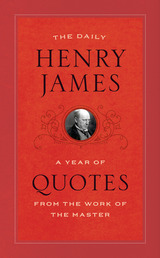 The Daily Henry James: A Year of Quotes from the Work of the Master
Henry James
University of Chicago Press, 2016 A strange and delightful memento of one of the most lasting literary voices of all time, The Daily Henry James is a little book from a great mind. First published with James’s approval in 1911 as the ultimate token of fandom—a limited edition quote-of-the-day collection titled The Henry James Year Book—this new edition is a gift across time, arriving as we mark the centenary of his death. Drawing on the Master’s novels, essays, reviews, plays, criticism, and travelogues, The Daily Henry James offers a series of impressions (for if not of impressions, of what was James fond?) to carry us through the year.
From the deepest longings of Isabel Archer to James’s insights in The Art of Fiction, longer seasonal quotes introduce each month, while concise bits of wisdom and whimsy mark each day. To take but one example: Isabel, in a quote from The Portrait of a Lady for September 30, muses, “She gave an envious thought to the happier lot of men, who are always free to plunge into the healing waters of action.” Featuring a new foreword by James biographer Michael Gorra as well as the original introductions by James and his good friend William Dean Howells, this long-forgotten perennial calendar will be an essential bibelot for James’s most ardent devotees and newest converts alike, a treasure to be cherished daily, across all seasons, for years, for ages to come.
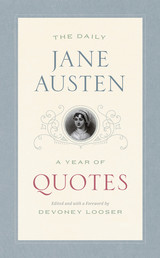 The Daily Jane Austen: A Year of Quotes
Jane Austen
University of Chicago Press, 2019 It is a truth universally acknowledged that Jane Austen is eminently, delightfully, and delectably quotable. This truth goes far beyond the first line of Pride and Prejudice, which has muscled out many other excellent sentences. So many gems of wit and wisdom from her novels deserve to be better known, from Northanger Abbey on its lovable, naive heroine—“if adventures will not befal a young lady in her own village, she must seek them abroad”—to Persuasion’s moving lines of love from its regret-filled hero: “You pierce my soul. I am half agony, half hope. Tell me not that I am too late.”
Devoney Looser, a.k.a. Stone Cold Jane Austen, has drawn 378 genuine, Austen-authored passages from across the canon, resulting in an anthology that is compulsively readable and repeatable. Whether you approach the collection on a one-a-day model or in a satisfying binge read, you will emerge wiser about Austen, if not about life. The Daily Jane Austen will amuse and inspire skeptical beginners, Janeite experts, and every reader in between by showcasing some of the greatest sentences ever crafted in the history of fiction.
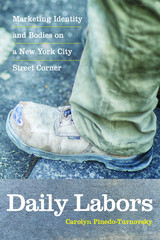 Daily Labors: Marketing Identity and Bodies on a New York City Street Corner
Carolyn Pinedo-Turnovsky
Temple University Press, 2019 On street corners throughout the country, men stand or sit together patiently while they wait for someone looking to hire un buen trabajador (a good worker). These day laborers are visible symbols of the changing nature of work—and the demographics of workers—in the United States. Carolyn Pinedo-Turnovsky spent nearly three years visiting with African American men and Latino immigrant men who looked for work as day laborers at a Brooklyn street intersection. Her fascinating ethnography, Daily Labors, considers these immigrants and citizens as active participants in their social and economic life. They not only work for wages but also labor daily to institute change, create knowledge, and contribute new meanings to shape their social world. Daily Labors reveals how ideologies about race, gender, nation, and legal status operate on the corner and the vulnerabilities, discrimination, and exploitation workers face in this labor market. Pinedo-Turnovsky shows how workers market themselves to conform to employers’ preconceptions of a “good worker” and how this performance paradoxically leads to a more precarious workplace experience. Ultimately, she sheds light on belonging, community, and what a “good day laborer” for these workers really is.
 Daily Life and Demographics in Ancient Japan
William Wayne Farris
University of Michigan Press, 2009 For centuries, scholars have wondered what daily life was like for the common people of Japan, especially for long bygone eras such as the ancient age (700–1150). Using the discipline of historical demography, William Wayne Farris shows that for most of this era, Japan’s overall population hardly grew at all, hovering around six million for almost five hundred years. The reasons for the stable population were complex. Most importantly, Japan was caught up in an East Asian pandemic that killed both aristocrat and commoner in countless numbers every generation. These epidemics of smallpox, measles, mumps, and dysentery decimated the adult population, resulting in wide-ranging social and economic turmoil. Famine recurred about once every three years, leaving large proportions of the populace malnourished or dead. Ecological degradation of central Japan led to an increased incidence of drought and soil erosion. And war led soldiers to murder innocent bystanders in droves. Under these harsh conditions, agriculture suffered from high rates of field abandonment and poor technological development. Both farming and industry shifted increasingly to labor-saving technologies. With workers at a premium, wages rose. Traders shifted from the use of money to barter. Cities disappeared. The family was an amorphous entity, with women holding high status in a labor-short economy. Broken families and an appallingly high rate of infant mortality were also part of kinship patterns. The average family lived in a cold, drafty dwelling susceptible to fire, wore clothing made of scratchy hemp, consumed meals just barely adequate in the best of times, and suffered from a lack of sanitary conditions that increased the likelihood of disease outbreak. While life was harsh for almost all people from 700 to 1150, these experiences represented investments in human capital that would bear fruit during the medieval epoch (1150–1600).
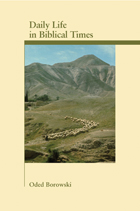 Daily Life in Biblical Times
Oded Borowski
SBL Press, 2003 While the history of Israel during the period from ca. 1200 to 586 B.C.E. has been in the forefront of biblical research, little attention has been given to questions of daily life. Where did the Israelites live? What did people do for a living? What did they eat and what affected their health? How did the family function? These and similar questions form the basis for this book.
The book introduces different aspects of daily life. It describes the natural setting and the people who occupied the land. It deals with the economy, both rural and urban, emphasizing the main sources of livelihood such as agriculture, herding, and trade. These topics are discussed in relation to the family in particular and the social structure in general. Other topics include urban society, the bureaucracy and the military. Beyond material culture, the book delves into daily and seasonal cultural, social and religious activities, art, music, and the place of writing in Israelite society.
Drawing on textual and archaeological evidence, and written with nontechnical language, the book will be especially helpful for undergraduates, seminarians, pastors, rabbis, and other interested nonspecialist readers as well as graduate students and faculty in Hebrew Bible.
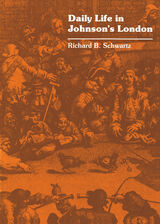 Daily Life in Johnson's London
Richard B. Schwartz
University of Wisconsin Press, 1983 "Rich in facts and anecdotes, this is the perfect introduction to 18th-century London and a wonderful companion for readers of Johnson and Boswell. . . . Schwartz starts with the sights, sound, and smells of the metropolis—a city of steeples, chimneys, coal smoke, and intolerable street noise—and surveys in succession Work and Money, Pastimes and Pleasures, Daily Routines and Domestic Life, Travel and Transportation, and Health and Hygiene and concludes with a gallery of street 'Londoners,' an independent and assertive lot, notably insolent to foreigners, especially those in French clothes."—Washington Post Book World
"Outstanding. . . . The author packs a remarkable quantity of detail into a small space, even including a discussion of price and wage figures that will be intelligible to Americans [today]. . . . His prose is lucid, graceful, lively. Generously illustrated, the book also includes an extensive bibliography."—Choice
"An excellent source for English Literature and history students studying this period or Samuel Johnson."—Booklist
Daily Life in Portugal in the Late Middle Ages
A.H. de Oliviera Marques; Translated by S.S. Wyatt
University of Wisconsin Press, 1971 Past studies of medieval Portugal have focused on such specific themes as political or administrative history and voyages of discovery. Oliveira Marques, however, has captured the vast spectrum of Portuguese daily life from the twelfth through the fifteenth centuries The whole of medieval society is depicted, both on a national scale and, more important, society as it affected the individual in his everyday activities. Oliveira Marques gives us an engaging and original social history which examines customary meals, dress, homes, work, spiritual life, even ideas about courtship and love. Medieval Portuguese culture and education, amusements and funeral customs are all a part of this portrait.
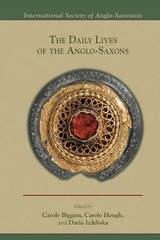 The Daily Lives of the Anglo-Saxons
Carole Biggam
Arizona Center for Medieval and Renaissance Studies, 2017 Essays in Anglo-Saxon Studies v.8 (Glasgow, 2015).
Insights into the lives of any group of historical people are provided by three main types of evidence: their language, their literature and their material culture. The contributors to this volume draw on all three types of evidence in order to present new research into the lives of the Anglo-Saxons. The particular focus is on daily life – the ordinary rather than the extraordinary, the normal rather than the exceptional. Rather than attempting an overview, the essays address individual scenarios in greater depth, but with an emphasis on shared experience.
The following scholars have contributed essays to this collection:
Martha Bayless
University of Oregon
Carole P. Biggam
University of Glasgow
Paul Cavill
University of Nottingham
Amy W. Clark
University of California, Berkeley
James Graham-Campbell
University College London
Antonina Harbus
Macquarie University, Sydney
Carole Hough
University of Glasgow
Daria Izdebska
Liverpool Hope University
Karen Louise Jolly
University of Hawai‘i at Mānoa
Alexandra Lester-Makin
University of Manchester
Elisabeth Okasha
University College, Cork
Phyllis Portnoy
University of Manitoba
Jane Roberts
University of London
Daily Living in the Twelfth Century
Urban Tigner Holmes, Jr.
University of Wisconsin Press, 1962 “This useful reference work is a model of compact scholarship. Its modest format encloses a wealth of information. . . . Holmes shows an easy familiarity with the vast major and minor source materials centering upon 1150–1200.”—Speculum
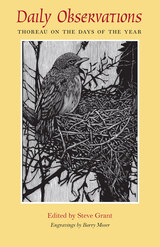 Daily Observations: Thoreau on the Days of the Year
Steve Grant
University of Massachusetts Press, 2005 How many a man has dated a new era in his life from the reading of a book, wrote Henry David Thoreau in Walden. Today that book continues to provoke, inspire, and change lives all over the world, and each rereading is fresh and challenging. Yet as Thoreau's countless admirers know, there is more to the man than Walden. An engineer, poet, teacher, naturalist, lecturer, and political activist, he truly had multiple lives to lead, and each one speaks forcefully to us today.Sponsored by the Thoreau Society, the brief, handsomely presented books in this series offer the thoughts of a great writer on a variety of topics, some that we readily associate with him, some that may be surprising. Each volume includes selections from his familiar published works as well as from less well known lectures, letters, and journal entries. The books include original engravings by renowned illustrator and book artist Barry Moser.
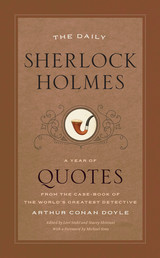 The Daily Sherlock Holmes: A Year of Quotes from the Case-Book of the World’s Greatest Detective
Arthur Conan Doyle
University of Chicago Press, 2019 Keep Holmes and Watson by your side every day with this delightful book of quotable, memorable, evocative daily entries from the adventures of the world's greatest detective!
“Dr. Watson, Mr. Sherlock Holmes,” said Stamford, introducing us.
“How are you?” he said cordially, gripping my hand with a strength for which I should hardly have given him credit. “You have been in Afghanistan, I perceive.”
“How on earth did you know that?” I asked in astonishment.
“Never mind,” said he, chuckling to himself.
At that first sight of Watson, Sherlock Holmes made brilliant deductions. But even he couldn’t know that their meeting was inaugurating a friendship that would make himself and the good Doctor cultural icons, as popular as ever more than a century after their 1887 debut. Through four novels and fifty-six stories, Arthur Conan Doyle led the pair through dramatic adventures that continue to thrill readers today, offering an unmatched combination of skillful plotting, period detail, humor, and distinctive characters. For a Holmes fan, there are few pleasures comparable to returning to his richly imagined world—the gaslit streets of Victorian London, the companionable clutter of 221B Baker Street, the reliable fuddlement (and nerves of steel) of Watson, the perverse genius of Holmes himself.
It’s all there in The Daily Sherlock Holmes, the perfect bedside companion for fans of the world’s only consulting detective. Within these pages readers will find a quotation for every day of the year, drawn from across the Conan Doyle canon. Beloved characters and familiar lines recall favorite stories and scenes, while other passages remind us that Conan Doyle had a way with description and a ready wit. Moriarty and Mycroft, Lestrade and Mrs. Hudson; the Hound, the Red-Headed League, the Speckled Band, and the dread Reichenbach Falls—it’s all here, anchored, of course, in that unforgettable duo of Holmes and Watson. No book published this year will bring a Holmes fan more pleasure. Come, readers. The game is afoot.
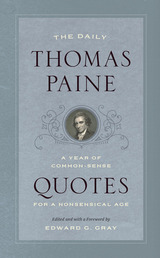 The Daily Thomas Paine: A Year of Common-Sense Quotes for a Nonsensical Age
Thomas Paine
University of Chicago Press, 2020 Thomas Paine was the spark that ignited the American Revolution. More than just a founding father, he was a verbal bomb-thrower, a rationalist, and a rebel. In his influential pamphlets Common Sense and The American Crisis, Paine codified both colonial outrage and the intellectual justification for independence, arguing consistently and convincingly for Enlightenment values and the power of the people. Today, we are living in times that, as Paine famously said, “try men’s souls.” Whatever your politics, if you’re seeking to understand the political world we live in, where better to look than Paine?
The Daily Thomas Paine offers a year’s worth of pithy and provocative quotes from this quintessentially American figure. Editor Edward G. Gray argues that we are living in a moment that Thomas Paine might recognize—or perhaps more precisely, a moment desperate for someone whose rhetoric can ignite a large-scale social and political transformation. Paine was a master of political rhetoric, from the sarcastic insult to the diplomatic aperçu, and this book offers a sleek and approachable sampler of some of the sharpest bits from his oeuvre. As Paine himself says in the entry for January 20: “The present state of America is truly alarming to every man who is capable of reflexion.” The Daily Thomas Paine should prove equally incendiary and inspirational for contemporary readers with an eye for politics, even those who prefer the tweet to the pamphlet.
Dairy Hollow House Soup & Bread: Thirtieth Anniversary Edition
Crescent Dragonwagon
University of Arkansas Press, 2021 For nearly two decades, Dairy Hollow House—a country inn and restaurant tucked into the Ozark Mountain resort town of Eureka Springs, Arkansas—welcomed guests from all over the world. Praised by the New York Times, Southern Living, Bon Appetit, and Good Morning America alike, the much-loved inn offered sparklingly fresh, innovative “nouveau’zarks” cuisine—respectful contemporary interpretations of local traditional cooking infused with seasonal ingredients. Although the famed inn is now closed, you can still enjoy the satisfying and life-affirming dishes by the James Beard Award–winning writer/restaurateur Crescent Dragonwagon in this thirtieth-anniversary edition of Dairy Hollow House Soup & Bread, a story rich cookbook as gutsy and distinctive as a steaming bowl of Gumbo Zeb.
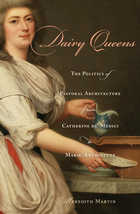 Dairy Queens: The Politics of Pastoral Architecture from Catherine de' Medici to Marie-Antoinette
Meredith Martin
Harvard University Press, 2011 In a lively narrative that spans more than two centuries, Meredith Martin tells the story of a royal and aristocratic building type that has been largely forgotten today: the pleasure dairy of early modern France. These garden structures—most famously the faux-rustic, white marble dairy built for Marie-Antoinette’s Hameau at Versailles—have long been dismissed as the trifling follies of a reckless elite. Martin challenges such assumptions and reveals the pivotal role that pleasure dairies played in cultural and political life, especially with respect to polarizing debates about nobility, femininity, and domesticity. Together with other forms of pastoral architecture such as model farms and hermitages, pleasure dairies were crucial arenas for elite women to exercise and experiment with identity and power.
Opening with Catherine de’ Medici’s lavish dairy at Fontainebleau (c. 1560), Martin’s book explores how French queens and noblewomen used pleasure dairies to naturalize their status, display their cultivated tastes, and proclaim their virtue as nurturing mothers and capable estate managers. Pleasure dairies also provided women with a site to promote good health, by spending time in salubrious gardens and consuming fresh milk. Illustrated with a dazzling array of images and photographs, Dairy Queens sheds new light on architecture, self, and society in the ancien régime.
Dairylandia: Dispatches from a State of Mind
Steve Hannah
University of Wisconsin Press, 2022 Years ago, Steve Hannah’s chance detour through the Midwest cut short a planned cross-country trip. He found himself in Wisconsin, a distinctly different place from the east coast where he was born and raised. Charmingly beautiful and full of welcoming people, America’s dairyland would soon become his home.
Dairylandia recounts Steve Hannah’s burgeoning love for his adopted state through the writings of his long-lived column, “State of Mind.” He profiles the lives of the seemingly ordinary, yet quite (and quietly) extraordinary folks he met and befriended on his travels. From Norwegian farmers to rattlesnake hunters to a woman who kept her favorite dead bird in the freezer, Hannah was charmed and fascinated by practically everyone he met. These captivating vignettes are by turns humorous, tragic, and remarkable—and remind us of our shared humanity.
 Daisy: Poems
Rachel Feder
Northwestern University Press, 2025 A narrative-poetic retelling of The Great Gatsby from the perspective of a 1990s teen poet
Daisy: Poems is a captivating and imaginative take on The Great Gatsby that puts F. Scott Fitzgerald’s 1925 classic in the hands of a messy, ambitious, and possibly devious teen poet. From her privileged yet precarious perch in the roaring 1990s, Daisy navigates the expectations of her parents, boyfriend, and lover, alongside her own artistic ambitions, as she explores whether freedom is what she truly desires—and wonders if it’s even possible. Rachel Feder puts a new spin on beloved characters: Jay, longtime and secret lover; Nick, somewhat mysterious and always meddling cousin; and Jordyn, best friend and companion in doomed relationships. A meditation on juvenilia, constructions of femininity, the purity myth, and canonical literary silences, Daisy is told in sparse, evocative verse that pulsates with youthful passion and offers a new elegy for our lost American dreams.
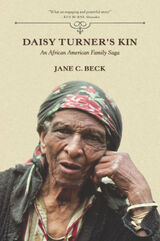 Daisy Turner's Kin: An African American Family Saga
Jane C. Beck
University of Illinois Press, 2015 A daughter of freed African American slaves, Daisy Turner became a living repository of history. The family narrative entrusted to her--"a well-polished artifact, an heirloom that had been carefully preserved"--began among the Yoruba in West Africa and continued with her own century and more of life.
In 1983, folklorist Jane Beck began a series of interviews with Turner, then one hundred years old and still relating four generations of oral history. Beck uses Turner's storytelling to build the Turner family saga, using at its foundation the oft-repeated touchstone stories at the heart of their experiences: the abduction into slavery of Turner's African ancestors; Daisy's father Alec Turner learning to read; his return as a soldier to his former plantation to kill his former overseer; and Daisy's childhood stand against racism. Other stories re-create enslavement and her father's life in Vermont--in short, the range of life events large and small, transmitted by means so alive as to include voice inflections. Beck, at the same time, weaves in historical research and offers a folklorist's perspective on oral history and the hazards--and uses--of memory.
Publication of this book is supported by grants from the Andrew W. Mellon Foundation and the L. J. and Mary C. Skaggs Folklore Fund.
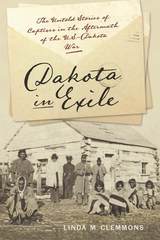 Dakota in Exile: The Untold Stories of Captives in the Aftermath of the U.S.-Dakota War
Linda M. Clemmons
University of Iowa Press, 2019 Robert Hopkins was a man caught between two worlds. As a member of the Dakota Nation, he was unfairly imprisoned, accused of taking up arms against U.S. soldiers when war broke out with the Dakota in 1862. However, as a Christian convert who was also a preacher, Hopkins’s allegiance was often questioned by many of his fellow Dakota as well. Without a doubt, being a convert—and a favorite of the missionaries—had its privileges. Hopkins learned to read and write in an anglicized form of Dakota, and when facing legal allegations, he and several high-ranking missionaries wrote impassioned letters in his defense. Ultimately, he was among the 300-some Dakota spared from hanging by President Lincoln, imprisoned instead at Camp Kearney in Davenport, Iowa, for several years. His wife, Sarah, and their children, meanwhile, were forced onto the barren Crow Creek reservation in Dakota Territory with the rest of the Dakota women, children, and elderly. In both places, the Dakota were treated as novelties, displayed for curious residents like zoo animals.
Historian Linda Clemmons examines the surviving letters from Robert and Sarah; other Dakota language sources; and letters from missionaries, newspaper accounts, and federal documents. She blends both the personal and the historical to complicate our understanding of the development of the Midwest, while also serving as a testament to the resilience of the Dakota and other indigenous peoples who have lived in this region from time immemorial.
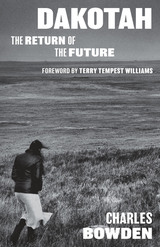 Dakotah: The Return of the Future
By Charles Bowden; foreword by Terry Tempest Williams
University of Texas Press, 2019 “On a bend, I will see it, a piece of ground off to the side. I will know the feel of this place: the leaves stir slowly on the trees, dry air smells like dust, birds dart and the trails are made by beasts living free.” When award-winning author Charles Bowden died in 2014, he left behind a trove of unpublished manuscripts. Dakotah marks the landmark publication of the first of these texts, and the fourth installment in his acclaimed “Unnatural History of America.” Bowden uses America’s Great Plains as a lens—sometimes sullied, sometimes shattered, but always sharp—for observing pivotal moments in the lives of anguished figures, including himself. In scenes that are by turns wrenching and poetic, Bowden describes the Sioux’s forced migrations and rebellions alongside his own ancestors’ migrations from Europe to Midwestern acres beset by unforgiving winters. He meditates on the lives of his resourceful mother and his philosophical father, who rambled between farm communities and city life. Interspersed with these images are clear-eyed, textbook-defying anecdotes about Lewis and Clark, Daniel Boone, and, with equal verve, twentieth-century entertainers “Pee Wee” Russell, Peggy Lee, and other musicians. The result is a kaleidoscopic journey that penetrates the senses and redefines the notion of heartland. Dakotah is a powerful ode to loss from one of our most fiercely independent writers.
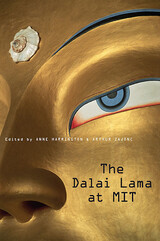 The Dalai Lama at MIT
Anne Harrington
Harvard University Press, 2008 Their meeting captured headlines; the waiting list for tickets was nearly 2000 names long. If you were unable to attend, this book will take you there. Including both the papers given at the conference, and the animated discussion and debate that followed, The Dalai Lama at MIT reveals scientists and monks reaching across a cultural divide, to share insights, studies, and enduring questions.
Is there any substance to monks’ claims that meditation can provide astonishing memories for words and images? Is there any neuroscientific evidence that meditation will help you pay attention, think better, control and even eliminate negative emotions? Are Buddhists right to make compassion a fundamental human emotion, and Western scientists wrong to have neglected it?
The Dalai Lama at MIT shows scientists finding startling support for some Buddhist claims, Buddhists eager to participate in neuroscientific experiments, as well as misunderstandings and laughter. Those in white coats and those in orange robes agree that joining forces could bring new light to the study of human minds.
 The Dalai Lama's Smile: Stories
Paula Closson Buck
Acre Books, 2025 In eight short stories, travelers and locals become entangled in situations that send their moral compasses spinning.
A grieving American father visits Dharamsala to investigate the murder of the son he’s never understood and finds himself delving into the mystery of the young man’s life. A Turkish-Cypriot teacher is tasked with making an inventory of household goods in an occupied tourist resort the inhabitants have fled. A Greek sculptor whose marriage is failing covers for a student from the US who, instead of learning the art, engages in an affair. A Buddhist nun enlists the help of a Peace Corps worker to kill a suffering dog. A wannabe eco-activist in Kentucky writes confessional letters to Boyan Slat, the young CEO of The Ocean Cleanup. A woman in a Rajasthan tourist caravan bears helpless witness to a dire culture clash.
As Closson Buck’s characters encounter circumstances that challenge their understanding of themselves and the world around them, they are forced to negotiate fallout stemming from religious dogma, environmental crisis, and political violence. Ranging from fabulism to realism, the stories in The Dalai Lama’s Smile invite us to explore the perils and the possibilities that come from engaging the unknown.
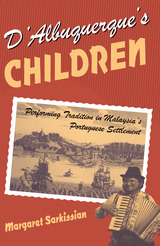 D'Albuquerque's Children: Performing Tradition in Malaysia's Portuguese Settlement
Margaret Sarkissian
University of Chicago Press, 2000 When the Portuguese seafarer Afonso de Albuquerque conquered the bustling port of Malacca in 1511, he effectively gained control of the entire South China Sea spice trade. Although their dominance lasted only 130 years, the Portuguese legacy lies at the heart of a burgeoning tourist attraction on the outskirts of the city, in which performers who believe they are the descendants of swashbuckling Portuguese conquerors encapsulate their "history" in a cultural stage show.
Using historical and ethnographic data, Margaret Sarkissian reveals that this music and dance draws on an eclectic array of influences that span the Portuguese diaspora (one song conjures up images of Lucille Ball impersonating Carmen Miranda on "I Love Lucy"). Ironically, she shows, what began as a literate tradition in the 1950s has now become an oral one so deeply rooted in Settlement life that the younger generation, like the tourists, now see it as an unbroken heritage stretching back almost 500 years. A fascinating case of "orientalism in reverse," D'Albuquerque's Children illuminates the creative ways in which one community has adapted to life in a postcolonial world.
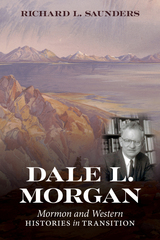 Dale L. Morgan: Mormon and Western Histories in Transition
Richard L. Saunders
University of Utah Press, 2023 This is the first biography of Dale L. Morgan, preeminent Western historian of the fur trade, historic trails, and the Latter Day Saint movement. The book explores how, despite personal struggles, Morgan committed his life to tracking down sources and interpreting the past on the strength of documentary evidence. Connecting Morgan’s life with some of the broad cultural changes that shaped his experiences, this book engages with methodological shifts in the historical profession, the mid-twentieth-century collision of interpretations within Latter Day Saint history, and the development of a descriptive, scholarly approach to that history.
Morgan’s body of work and commitment to serious scholarship signaled the start of new ways of understanding, studying, and retelling history, and he motivated a generation of historians from the 1930s to the 1970s to transform their historical approaches. Sounding board, mentor, and close friend to Nels Anderson, Fawn Brodie, Juanita Brooks, Bernard DeVoto, Wallace Stegner, and Leonard Arrington, Dale Morgan is the common factor linking this influential generation of mid-twentieth-century historians of western America.
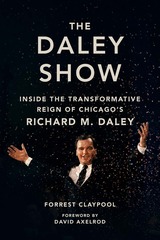 The Daley Show: Inside the Transformative Reign of Chicago's Richard M. Daley
Forrest Claypool; Foreword by David Axelrod
University of Illinois Press, 2024 “You have to have passion. You have to have honesty in office. You have to love the people.” Those words summed up the outlook, if not always the actions, of Chicago Mayor Richard M. Daley. Elected to govern a city roiled by racial and economic crises, Daley adroitly wielded the tools of power in the rough-and-tumble world of Chicago politics. Under his rule, Chicago rebuilt a dying downtown, becoming a cultural and tourism mecca punctuated by construction of the iconic Millenium Park. To drive growth, he engineered a massive expansion of O’Hare Airport. To correct a historical injustice, he razed the city’s notorious public housing high rises as part of a sweeping plan to transform the lives of the city’s poorest residents. Yet corruption and graft, City Hall’s role in calamities like the 1995 heat wave, and Daley’s inaction in the face of evidence of police torture, tarnished his many accomplishments. A two-time Daley chief-of-staff, Forrest Claypool draws on his long career in local government to examine the lasting successes, ongoing dramas, and disastrous failures that defined Daley’s twenty-two years in City Hall. Throughout, Claypool uses Daley’s career to illustrate how effectual political leadership relies on an adept and unapologetic use of power--and how wielding that power without challenge inevitably pulls government toward corruption. A warts-and-all account of a pivotal figure in Chicago history, The Daley Show tells the story of how Richard M. Daley became the quintessential big city mayor.
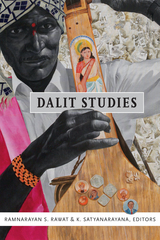 Dalit Studies
Ramnarayan S. Rawat and K. Satyanarayana, editors
Duke University Press, 2016 The contributors to this major intervention into Indian historiography trace the strategies through which Dalits have been marginalized as well as the ways Dalit intellectuals and leaders have shaped emancipatory politics in modern India. Moving beyond the anticolonialism/nationalism binary that dominates the study of India, the contributors assess the benefits of colonial modernity and place humiliation, dignity, and spatial exclusion at the center of Indian historiography. Several essays discuss the ways Dalits used the colonial courts and legislature to gain minority rights in the early twentieth century, while others highlight Dalit activism in social and religious spheres. The contributors also examine the struggle of contemporary middle-class Dalits to reconcile their caste and class, intercaste tensions among Sikhs, and the efforts by Dalit writers to challenge dominant constructions of secular and class-based citizenship while emphasizing the ongoing destructiveness of caste identity. In recovering the long history of Dalit struggles against caste violence, exclusion, and discrimination, Dalit Studies outlines a new agenda for the study of India, enabling a significant reconsideration of many of the Indian academy's core assumptions. Contributors: D. Shyam Babu, Laura Brueck, Sambaiah Gundimeda, Gopal Guru, Rajkumar Hans, Chinnaiah Jangam, Surinder Jodhka, P. Sanal Mohan, Ramnarayan Rawat, K. Satyanarayana
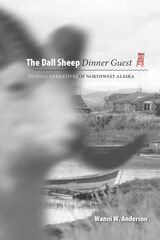 The Dall Sheep Dinner Guest: Inupiaq Narratives of Northwest Alaska
Wanni Anderson
University of Alaska Press, 2023 The rich storytelling tradition of the Inupiat of Alaska is showcased in this remarkable collection of over eighty stories. Meticulously compiled from six villages in Northwest Alaska between 1966 and 1987, the stories are presented as part of a living tradition, complete with biographies, photos, and introductory remarks by Native storytellers. Each story provides insight into the Iñupiaq worldview, human-animal relationships, and the organization of family life.
The Dall Sheep Dinner Guest includes a new version of the Qayaq cycle, one of the best-known legends from the region, as well as stories such as “The Fast Runner.” A major contribution to the Native literature of Alaska, this collection includes two introductory essays by Wanni W. Anderson that provide historical background and a foundation for understanding gender, age, and regional differences and the narrative context of storytelling. Stories include The Girl Who Had No Wish to Marry by Willie Goodwin, Sr., The Goose Maiden by Nora Norton, The Last War with the Indians by Wesley Woods, The Orphan with No Clothes by Emma Skin, The Qayaq Cycle by Nora Norton, and Raven Who Brought Back the Land by Robert Cleveland (selected Iñupiaq Storyteller by the Inupiat of Northwest Alaska).
Additional storytellers include John Brown, Leslie Burnett, Flora Cleveland, Lois Cleveland, Maude Cleveland, Kitty Foster, Sarah Goode, Minnie Gray, Beatrice Mouse, Nellie Russell, and Andrew Skin.
 The Dallas Myth: The Making and Unmaking of an American City
Harvey J. Graff
University of Minnesota Press, 2010 The ninth largest city in the United States, Dallas is exceptional among American cities for the claims of its elites and boosters that it is a "city with no limits" and a "city with no history." Home to the Dallas Cowboys, self-styled as "America's Team," setting for the television series that glamorized its values of self-invention and success, and site of the assassination of John F. Kennedy, Dallas looms disproportionately large in the American imagination. Yet it lacks an identity of its own.
In The Dallas Myth, Harvey J. Graff presents a novel interpretation of a city that has proudly declared its freedom from the past. He scrutinizes the city's origin myth and its governance ideology, known as the "Dallas Way," looking at how these elements have shaped Dallas and served to limit democratic participation and exacerbate inequality. Advancing beyond a traditional historical perspective, Graff proposes an original, integrative understanding of the city's urban fabric and offers an explicit critique of the reactionary political foundations of modern Dallas: its tolerance for right-wing political violence, the endemic racism and xenophobia, and a planning model that privileges growth and monumental architecture at the expense of the environment and social justice.
Revealing the power of myths that have defined the city for so long, Graff presents a new interpretation of Dallas that both deepens our understanding of America's urban landscape and enables its residents to envision a more equitable, humane, and democratic future for all.
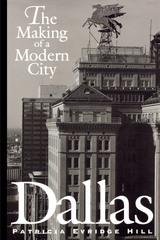 Dallas: The Making of a Modern City
By Patricia Evridge Hill
University of Texas Press, 1996 From the ruthless deals of the Ewing clan on TV's "Dallas" to the impeccable customer service of Neiman-Marcus, doing business has long been the hallmark of Dallas. Beginning in the 1920s and 1930s, Dallas business leaders amassed unprecedented political power and civic influence, which remained largely unchallenged until the 1970s. In this innovative history, Patricia Evridge Hill explores the building of Dallas in the years before business interests rose to such prominence (1880 to 1940) and discovers that many groups contributed to the development of the modern city. In particular, she looks at the activities of organized labor, women's groups, racial minorities, Populist and socialist radicals, and progressive reformers—all of whom competed and compromised with local business leaders in the decades before the Great Depression. This research challenges the popular view that business interests have always run Dallas and offers a historically accurate picture of the city's development. The legacy of pluralism that Hill uncovers shows that Dallas can accommodate dissent and conflict as it moves toward a more inclusive public life. Dallas will be fascinating and important reading for all Texans, as well as for all students of urban development.
 Dam Politics: Restoring America's Rivers
William R. Lowry
Georgetown University Press, 2003 The politics of building dams and levees and other structures are just part of the policies determining how American rivers are managed or mismanaged. America's well-being depends upon the health of those rivers and important decisions go beyond just dam-building or dam removal. American rivers are suffering from poor water quality, altered flows, and diminished natural habitat. Current efforts by policymakers to change the ways American rivers are managed range from the removal of dams to the simulation of seasonal flows to the restoration of habitat, all with varying degrees of success. Efforts to restore American rivers are clearly delineated by William Lowry in Dam Politics as he looks at how public policy and rivers interact, examines the physical differences in rivers that affect policies, and analyzes the political differences among the groups that use them. He argues that we are indeed moving into an era of restoration (defined in part as removing dams but also as restoring the water quality, seasonal flows, and natural habitat that existed before structural changes to the rivers), and seeks to understand the political circumstances that affect the degree of restoration. Lowry presents case studies of eight river restoration efforts, including dam removals on the Neuse and Kennebec rivers, simulation of seasonal flows on the Colorado river, and the failed attempt to restore salmon runs on the Snake river. He develops a typology of four different kinds of possible change—dependent on the parties involved and the physical complexity of the river—and then examines the cases using natural historical material along with dozens of interviews with key policymakers. Policy approaches such as conjunctive water management, adaptive management, alternative licensing processes, and water marketing are presented as possible ways of using our rivers more wisely. Dam Politics provides a useful and systematic account of how American waterways are managed and how current policies are changing. American rivers are literally the lifeblood of our nation. Lowry has written a lively and accessible book that makes it clear as a mountain stream that it matters deeply how those rivers are managed.
 Damage
Jacqueline Vaught Brogan
University of Notre Dame Press, 2003 Jacque Vaught Brogan's new collection of poems, Damage, examines a variety of cultural, natural, and personal damages in a lyrical voice ironically marked by intense beauty. This disjunction is precisely what makes the volume so disturbing and yet so tantalizing. The first section, "Windows," examines the public sphere of failures and violence, including the simple cyclical decay of nature itself. The next section, "Blue Waters," shifts the focus from the public to the personal, in poems frought with betrayal and desire, disillusionment and erotic bondings. In the last section, "Notes from the Body," Brogan braids these two spheres into a strikingly original and risky series of poems which fearlessly addresses the modern emotional terrain or what might be called the genuinely "body politic."
JACQUE VAUGHT BROGAN is professor of English and American literature at the University of Notre Dame. She has been the featured poet in several journals, including Connotations, The E.E. Cummings Journal, and Poetry International. Her other works include Stevens and Simile, Part of the Climate, The Violence Within/The Violence Without, and Women Poets of the America, co-edited with Cordelia Candelaria and published by the University of Notre Dame Press.
----------
"There are many beautiful moments in Jacque Vaught Brogan's work, moments of striking imagination and music. Brogan has a talent, an ear, an eye, and knowledge of the tradition . . . readers will be charmed by the fresh imagery, the passion, and the tightness of her poems." --Aliki Barnstone, University of Nevada, Las Vegas
"Damage is remarkably fearless in its address of the modern emotional terrain. Brogan's writing is scintillating, rich, and exciting in its vision. We hear a fresh voice at work in these poems." --Cynthia Hogue, Bucknell University
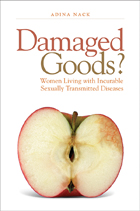 Damaged Goods?: Women Living With Incurable Sexually Transmitted Diseases
Adina Nack
Temple University Press, 2008 How do women living with genital herpes and/or HPV (human papilloma virus) infections see themselves as sexual beings, and what choices do they make about sexual health issues? Adina Nack, a medical sociologist who specializes in sexual health and social psychology, conducted in-depth interviews with 43 women about their identities and sexuality in regards to chronic illness. The result is a fascinating book about an issue that affects over 15 million Americans, but is all too little discussed. Damaged Goods adds to our knowledge of how women are affected by living with chronic STDs and reveals the stages of their sexual- self transformation. From the anxiety of being diagnosed with an STD to issues of blame and shame, Nack-herself diagnosed with a cervical HPV infection-shows why these women feeling that they are "damaged goods," question future relationships, marriage, and their ability to have healthy children.
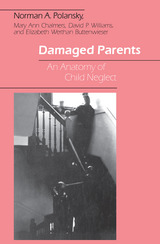 Damaged Parents: An Anatomy of Child Neglect
Norman A. Polansky, Mary Ann Chalmers, Elizabeth Werthan Buttenwieser, and David P. Williams
University of Chicago Press, 1983 "Most of us are unaware of child neglect even when we are witnessing it. . . . Neglect is a matter of things undone, of inaction compounded by indifference. Since it goes on at home, it is a very private sin. . . . It is little wonder that most of the public is unaware of poor child caring. Its ignorance is even greater as to how widespread the problem is. But this is not a blissful ignorance. The public may not want to attend to child neglect, but it lives with the distortions of human personality that are left in its wake."—from chapter 1 of Damaged Parents
"Norman Polansky and his colleagues have produced a truly remarkable book. . . . One of the consequences of [the] relative invisibility of child neglect is that we also know less about it. But this book will help to correct that for it contains reports of findings from two systematic efforts to define, measure, classify, and understand child neglect."—Thomas M. Young, Social Service Review
Damasio's Error and Descartes' Truth: An Inquiry into Consciousness, Metaphysics, and Epistemology
Andrew Gluck
University of Scranton Press, 2007 The question of the relationship between mind and body as posed by Descartes, Spinoza, and others remains a fundamental debate for philosophers. In Damasio’s Error and Descartes’ Truth, Andrew Gluck constructs a pluralistic response to the work of neurologist Antonio Damasio. Gluck critiques the neutral monistic assertions found in Descartes’ Error and Looking for Spinoza from a philosophical perspective, advocating an adaptive theory—physical monism in the natural sciences, dualism in the social sciences, and neutral monism in aesthetics. Gluck’s work is a significant and refreshing take on a historical debate.
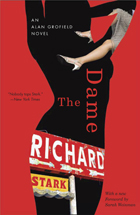 The Dame: An Alan Grofield Novel
Richard Stark
University of Chicago Press, 2012 An action-packed, classic crime novel by a master starring Parker's associate Alan Grofield
Donald E. Westlake is one of the greats of crime fiction. Under the pseudonym Richard Stark, he wrote twenty-four fast-paced, hardboiled novels featuring Parker, a shrewd career criminal with a talent for heists. Using the same nom de plume, Westlake also completed a separate series in the Parker universe, starring Alan Grofield, an occasional colleague of Parker. While he shares events and characters with several Parker novels, Grofield is less calculating and more hot-blooded than Parker; think fewer guns, more dames. Not that there isn’t violence and adventure aplenty. The Dame finds Grofield in Puerto Rico protecting a rich, demanding woman in her isolated jungle villa, and reluctantly assuming the role of detective. A rare Westlake take on a whodunit, The Dame features a cast of colorful characters and a suspenseful—and memorable—climax. With a new foreword by Sarah Weinman that situates the Grofield series within Westlake’s work as a whole, this novel is an exciting addition to any crime fiction fan’s library.
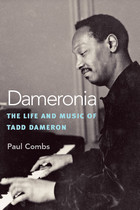 Dameronia: The Life and Music of Tadd Dameron
Paul Combs
University of Michigan Press, 2013 Dameronia is the first authoritative biography of Tadd Dameron, an important and widely influential figure in jazz history as one of the most significant composers and arrangers of jazz, swing, bebop, and big band. He arranged for names like Count Basie, Artie Shaw, Jimmie Lunceford, and Dizzy Gillespie and played with Bull Moose Jackson and Benny Golson. This book sets out to clarify Dameron's place in the development of jazz in the post–World War II era. It also attempts to shed light on the tragedy of his retreat from the center of jazz activity in the 1950s. By tracing Dameron's career, one finds that until 1958, when he was incarcerated for drug related offenses, he was at the forefront of developments in jazz, sometimes anticipating trends that would not develop fully for several years. Dameron was also an important influence on several high-profile musicians, including Miles Davis, Benny Golson, and Frank Foster. Dameron was a very private man, and while in some aspects of his life he will probably remain an enigma, this book manages to give an intimate portrait of his life at a couple of key stages: the height of his career in 1949 and the brief but productive period between his release from prison and his death.
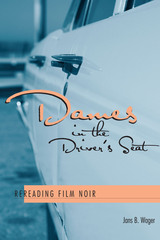 Dames in the Driver's Seat: Rereading Film Noir
By Jans B. Wager
University of Texas Press, 2005 With its focus on dangerous, determined femmes fatales, hardboiled detectives, and crimes that almost-but-never-quite succeed, film noir has long been popular with moviegoers and film critics alike. Film noir was a staple of classical Hollywood filmmaking during the years 1941-1958 and has enjoyed a resurgence in popularity since the 1990s. Dames in the Driver's Seat offers new views of both classical-era and contemporary noirs through the lenses of gender, class, and race. Jans Wager analyzes how changes in film noir's representation of women's and men's roles, class status, and racial identities mirror changes in a culture that is now often referred to as postmodern and postfeminist. Following introductory chapters that establish the theoretical basis of her arguments, Wager engages in close readings of the classic noirs The Killers, Out of the Past, and Kiss Me Deadly and the contemporary noirs L. A. Confidential, Mulholland Falls, Fight Club, Twilight, Fargo, and Jackie Brown. Wager divides recent films into retro-noirs (made in the present, but set in the 1940s and 1950s) and neo-noirs (made and set in the present but referring to classic noir narratively or stylistically). Going beyond previous studies of noir, her perceptive readings of these films reveal that retro-noirs fulfill a reactionary social function, looking back nostalgically to outdated gender roles and racial relations, while neo-noirs often offer more revisionary representations of women, though not necessarily of people of color.
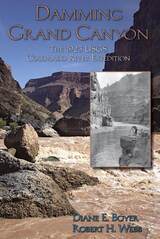 Damming Grand Canyon: The 1923 USGS Colorado River Expedition
Diane E Boyer and Robert H. Webb
Utah State University Press, 2007 In 1923, America paid close attention, via special radio broadcasts, newspaper headlines, and cover stories in popular magazines, as a government party descended the Colorado to survey Grand Canyon. Fifty years after John Wesley Powell's journey, the canyon still had an aura of mystery and extreme danger. At one point, the party was thought lost in a flood. Something important besides adventure was going on. Led by Claude Birdseye and including colorful characters such as early river-runner Emery Kolb, popular writer Lewis Freeman, and hydraulic engineer Eugene La Rue, the expedition not only made the first accurate survey of the river gorge but sought to decide the canyon's fate. The primary goal was to determine the best places to dam the Grand. With Boulder Dam not yet built, the USGS, especially La Rue, contested with the Bureau of Reclamation over how best to develop the Colorado River. The survey party played a major role in what was known and thought about Grand Canyon. The authors weave a narrative from the party's firsthand accounts and frame it with a thorough history of water politics and development and the Colorado River. The recommended dams were not built, but the survey both provided base data that stood the test of time and helped define Grand Canyon in the popular imagination. Also by Robert Webb: Lee's Ferry
 Damming the Gila: The Gila River Indian Community and the San Carlos Irrigation Project, 1900–1942
David H. DeJong
University of Arizona Press, 2024 Unraveling a complex web of tension, distrust, and political maneuvering, Damming the Gila continues the story of the Gila River Indian Community’s struggle for the restoration of its water rights.
This volume continues to chronicle the history of water rights and activities on the Gila River Indian Reservation. Centered on the San Carlos Irrigation Project and Coolidge Dam, it details the history and development of the project, including the Gila Decree and the Winters Doctrine. Embedded in the narrative is the underlying tension between tribal growers on the Gila River Indian Reservation and upstream users. Told in seven chapters, the story underscores the idea that the Gila River Indian Community believed the San Carlos Irrigation Project was first and foremost for their benefit and how the project and the Gila Decree fell short of restoring their water and agricultural economy.
Damming the Gila is the third in a trio of important documentary works, beginning with DeJong’s Stealing the Gila and followed by Diverting the Gila. It continues the story of the Gila River Indian Community’s fight to regain access to their water.
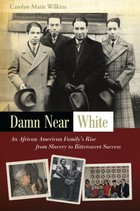 Damn Near White: An African American Family's Rise from Slavery to Bittersweet Success
Carolyn Marie Wilkins
University of Missouri Press, 2010 Carolyn Wilkins grew up defending her racial identity. Because of her light complexion and wavy hair, she spent years struggling to convince others that she was black. Her family’s prominence set Carolyn’s experiences even further apart from those of the average African American. Her father and uncle were well-known lawyers who had graduated from Harvard Law School. Another uncle had been a child prodigy and protégé of Albert Einstein. And her grandfather had been America's first black assistant secretary of labor.
Carolyn's parents insisted she follow the color-conscious rituals of Chicago's elite black bourgeoisie—experiences Carolyn recalls as some of the most miserable of her entire life. Only in the company of her mischievous Aunt Marjory, a woman who refused to let the conventions of “proper” black society limit her, does Carolyn feel a true connection to her family's African American heritage.
When Aunt Marjory passes away, Carolyn inherits ten bulging scrapbooks filled with family history and memories. What she finds in these photo albums inspires her to discover the truth about her ancestors—a quest that will eventually involve years of research, thousands of miles of travel, and much soul-searching.
Carolyn learns that her great-grandfather John Bird Wilkins was born into slavery and went on to become a teacher, inventor, newspaperman, renegade Baptist minister, and a bigamist who abandoned five children. And when she discovers that her grandfather J. Ernest Wilkins may have been forced to resign from his labor department post by members of the Eisenhower administration, Carolyn must confront the bittersweet fruits of her family's generations-long quest for status and approval.
Damn Near White is an insider’s portrait of an unusual American family. Readers will be drawn into Carolyn’s journey as she struggles to redefine herself in light of the long-buried secrets she uncovers. Tackling issues of class, color, and caste, Wilkins reflects on the changes of African American life in U.S. history through her dedicated search to discover her family’s powerful story.
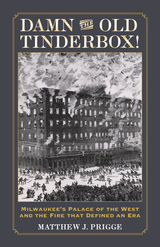 Damn the Old Tinderbox!: Milwaukee’s Palace of the West and the Fire that Defined an Era
Matthew J. Prigge
Wisconsin Historical Society Press, 2019 In the dead of an unassuming January night in 1883, Milwaukee’s Newhall House hotel was set on fire. Two hours later, the building—once among the tallest in the nation—lay in ruins and over seventy people were dead. It was a tragedy that brought global notice to Milwaukee, with daring escapes and rescues and heart-wrenching tales of victims burned to death or killed as they leapt from the burning building. From the great horror emerged an even greater string of mysteries: Who had set the fire and who was to blame for the staggering loss of life? The Newhall’s hard-luck barkeeper? A gentleman arsonist? What of the many other unexplained fires at the hotel? Had the Newhall’s management neglected fire safety to boost their profits?
Damn the Old Tinderbox! is the gripping tale of one of the Gilded Age’s forgotten calamities, a fire that remains among the deadliest unsolved arsons in American history, and a significant chapter in both the history of Milwaukee and the Midwest.
The Damnation of Theron Ware
Harold Frederic
Harvard University Press This Faustian tale of the spiritual disintegration of a young minister, written in the 1890s, deals subtly and powerfully with the impact of science on innocence and the collective despair that marked the transition into the modern age. In its realism, The Damnation of Theron Ware foreshadows Howells; in its conscious imagery it prefigures Norris, Crane, Henry James, and the "symbolic realism" of the twentieth century. Its author, Harold Frederic, internationally famous as London correspondent for the New York Times, wrote the novel two years before his death.
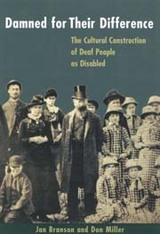 Damned for Their Difference: The Cultural Construction of Deaf People as Disabled
Jan Branson
Gallaudet University Press, 2002 Until the recent recognition of Deaf culture and the legitimacy of signed languages, majority societies around the world have classified Deaf people as “disabled,” a term that separates all persons so designated from the mainstream in a disparaging way. Damned for Their Difference offers a well-founded explanation of how this discrimination came to be through a discursive exploration of the cultural, social, and historical contexts of these attitudes and behavior toward deaf people, especially in Great Britain.
Authors Jan Branson and Don Miller examine the orientation toward and treatment of deaf people as it developed from the 17th century through the 20th century. Their wide-ranging study explores the varied constructions of the definition of “disabled,” a term whose meaning hinges upon constant negotiation between parties, ensuring that no finite meaning is ever established. Damned for Their Difference provides a sociological understanding of disabling practices in a way that has never been seen before.
 A Damned Iowa Greyhound: The Civil War Letters of William Henry Harrison Clayton
Donald C. Elder, III
University of Iowa Press, 1998 William Henry Harrison Clayton was one of nearly 75,000 soldiers from Iowa to join the Union ranks during the Civil War. Possessing a high school education and superior penmanship, Clayton served as a company clerk in the 19th Infantry, witnessing battles in the Trans-Mississippi theater. His diary and his correspondence with his family in Van Buren County form a unique narrative of the day-to-day soldier life as well as an eyewitness account of critical battles and a prisoner-of-war camp. Clayton participated in the siege of Vicksburg and took part in operations against Mobile, but his writings are unique for the descriptions he gives of lesser-known but pivotal battles of the Civil War in the West. Fighting in the Battle of Prairie Grove, the 19th Infantry sustained the highest casualties of any federal regiment on the field. Clayton survived that battle with only minor injuries, but he was later captured at the Battle of Stirling's Plantation and served a period of ten months in captivity at Camp Ford, Texas. Clayton's writing reveals the complicated sympathies and prejudices prevalent among Union soldiers and civilians of that period in the country's history. He observes with great sadness the brutal effects of war on the South, sympathizing with the plight of refugees and lamenting the destruction of property. He excoriates draft evaders and Copperheads back home, conveying the intra-sectional acrimony wrought by civil war. Finally, his racist views toward blacks demonstrate a common but ironic attitude among Union soldiers whose efforts helped lead to the abolition of slavery in the United States.
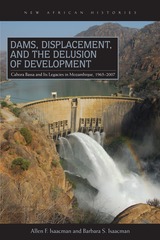 Dams, Displacement, and the Delusion of Development: Cahora Bassa and Its Legacies in Mozambique, 1965–2007
Allen F. Isaacman
Ohio University Press, 2013 Cahora Bassa Dam on the Zambezi River, built in the early 1970s during the final years of Portuguese rule, was the last major infrastructure project constructed in Africa during the turbulent era of decolonization. Engineers and hydrologists praised the dam for its technical complexity and the skills required to construct what was then the world’s fifth-largest mega-dam. Portuguese colonial officials cited benefits they expected from the dam—from expansion of irrigated farming and European settlement, to improved transportation throughout the Zambezi River Valley, to reduced flooding in this area of unpredictable rainfall. “The project, however, actually resulted in cascading layers of human displacement, violence, and environmental destruction. Its electricity benefited few Mozambicans, even after the former guerrillas of FRELIMO (Frente de Libertação de Moçambique) came to power; instead, it fed industrialization in apartheid South Africa.” (Richard Roberts) This in-depth study of the region examines the dominant developmentalist narrative that has surrounded the dam, chronicles the continual violence that has accompanied its existence, and gives voice to previously unheard narratives of forced labor, displacement, and historical and contemporary life in the dam’s shadow.
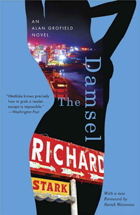 The Damsel: An Alan Grofield Novel
Richard Stark
University of Chicago Press, 2012 Donald E. Westlake is one of the greats of crime fiction. Under the pseudonym Richard Stark, he wrote twenty-four fast-paced, hardboiled novels featuring Parker, a shrewd career criminal with a talent for heists. Using the same nom de plume, Westlake also completed a separate series in the Parker universe, starring Alan Grofield, an occasional colleague of Parker. While he shares events and characters with several Parker novels, Grofield is less calculating and more hot-blooded than Parker; think fewer guns, more dames.
Not that there isn’t violence and adventure aplenty. The Damsel begins directly after the Parker novel The Handle. Following a wounded Grofield and his damsel on a scenic, action-packed road trip from Mexico City to Acapulco, The Damsel is full of wit, adrenaline, and political intrigue. With a new foreword by Sarah Weinman that situates the Grofield series within Westlake’s work as a whole, these novels are an exciting addition to any crime fiction fan’s library.
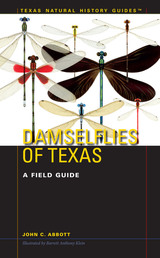 Damselflies of Texas: A Field Guide
By John C. Abbott
University of Texas Press, 2011 On any warm summer day, you can easily observe damselflies around a vegetated pond or the rocks along the banks of a stream. Like the more familiar dragonfly, damselflies are among the most remarkably distinctive insects in their appearance and biology, and they have become one of the most popular creatures sought by avocational naturalists. Damselflies of Texas is the first field guide dedicated specifically to the species found in Texas. It covers 77 of the 138 species of damselflies known in North America, making it a very useful guide for the entire United States. Each species account includes: - illustrations of as many forms (male, female, juvenile, mature, and color morphs) as possible
- common and scientific names, with pronunciation
- distribution map
- key features
- identifying characteristics
- discussion of similar species
- status in Texas
- habitat, seasonality, and general comments
In addition to photographing damselflies in the wild, the author and illustrator have developed a new process for illustrating each species by scanning preserved specimens and digitally painting them. The resulting illustrations show detail that is not visible in photographs. The book also contains chapters on damselfly anatomy, life history, conservation, names, and photography, as well as a list of species that may eventually be discovered in Texas, state and global conservation rankings, seasonality of all species in chronological order, and additional resources and publications on the identification of damselflies.
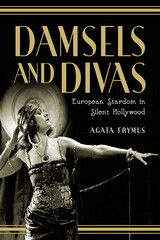 Damsels and Divas: European Stardom in Silent Hollywood
Agata Frymus
Rutgers University Press, 2020 2020 Best Early Career Research Monograph, Monash University Malaysia
Damsels and Divas investigates the meanings of Europeanness in Hollywood during the 1920s by charting professional trajectories of three movie stars: Pola Negri, Vilma Bánky and Jetta Goudal. It combines the investigation of American fan magazines with the analysis of studio documents, and the examination of the narratives of their films, to develop a thorough understanding of the ways in which Negri, Bánky and Goudal were understood within the realm of their contemporary American culture. This discussion places their star personae in the context of whiteness, femininity and Americanization. Every age has its heroines, and they reveal a lot about prevailing attitudes towards women in their respective eras. In the United States, where the stories of rags-to-riches were especially potent, stars could offer models of successful cultural integration.
 The Dana Guide to Brain Health: A Practical Family Reference from Medical Experts
Edited by Floyd E. Bloom, M.D.; M. Flint Beal, M.D.; and, David J. Kupfer, M.D.
Dana Press, 2006
A child crashes to the ground from the monkey bars head-first. A high school student prepares for months to take the SAT. A grandmother slowly slips away from her family through the deadly progression of Alzheimer’s Disease. Whether we realize it or not, the importance of brain health to our daily lives goes far beyond just being able to walk and talk. The Dana Guide to Brain Health offers the first comprehensive home medical reference book on the brain, providing an unparalleled, authoritative guide to improving the fitness of our brains and, ultimately, enriching our lives.
With contributions from over one hundred of the most prominent scientists and clinicians in the United States, The Dana Guide to Brain Health is an extensive and wholly accessible manual on the workings of the human brain. This richly illustrated volume contains a wealth of facts and advice, on simple yet effective ways to take care of our brains; the intimate connection between brain health and body health; brain development from the prenatal period through adulthood; and how we learn, remember, and imagine.
The brain is far too important to be excluded any longer from our daily health concerns. The Dana Guide to Brain Health remedies this oversight with a clearly written, definitive map to our brains that reveals how we can take care of them in order to sustain a long and rich life.
Dance: A Creative Art Experience
Margaret N. H'Doubler; with a new essay by Mary Alice Brennan
University of Wisconsin Press, 1959 A landmark book in dance education is now back in print, its message as valid today as it was more than fifty years ago
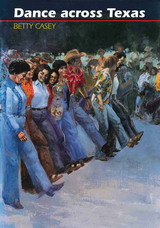 Dance across Texas
By Betty Casey
University of Texas Press, 1985 Generations of Texans have believed that “to dance is to live.” At rustic “play parties” and elegant cotillions, in tiny family dance halls and expansive urban honky-tonks, from historic beginnings to next Saturday night, Texans have waltzed, polkaed, schottisched, and shuffled their way across the state. In Dance across Texas, internationally known dance instructor and writer Betty Casey takes an informal look at the history of Texas dancing and, in clear diagrams, photos, and detailed instructions, tells “how to” do more than twenty Texas dances. Previously, little had been recorded about the history of dancing on the frontier. Journal and diary entries, letters, and newspaper clippings preserve enticing, if sketchy, descriptions of the types of dances that were popular. Casey uses a variety of sources, including interviews and previously unpublished historical materials, such as dance cards, invitations, and photographs, to give us a delightful look at the social context of dance. The importance of dance to early Texans is documented through colorful descriptions of clothing worn to the dances, of the various locations where dances were held, ranging from a formal hall to a wagon sheet spread on the ground, and of the hardships endured to get to a dance. Also included in the historical section of Dance across Texas are notes on the “morality” of dance, the influence of country music on modern dance forms, and the popularity of such Texas dance halls and clubs as Crider’s and Gilley’s. The instruction section of the book diagrams twenty-two Texas dances, including standard waltzes and two-steps as well as the Cotton-Eyed Joe, Put Your Little Foot, Herr Schmidt, the Western Schottische, and such “whistle’” or mixer dances as Paul Jones, Popcorn, and Snowball. Clear and detailed directions for each dance, along with suggested musical selections, accompany the diagrams and photos. Dance and physical education teachers and students will find this section invaluable, and aspiring urban cowboys can follow the easy-to-read diagrammed footsteps to a satisfying spin around the honky-tonk floor. Anyone interested in dance or in the history of social customs in Texas will find much to enjoy in this refreshing and often amusing look at a Texas “national” pastime.
 Dance All Night: Those Other Southwestern Swing Bands, Past and Present
Jean A. Boyd
Texas Tech University Press, 2012 Its strains may be haunting, but western swing is alive and on the upswing, enjoying a renaissance among musicians too young to recall or even comprehend its heyday. For them, the term may evoke the nationally known country music of Bob Wills and his Texas Playboys and the Spade Cooley Band. Yet on the local level, western swing bands dominated the airways and dance halls in every town and rural setting throughout the Southwest in the 1930s and by the 1940s had spread their influence and music to California. Jean A. Boyd presents the history and music of those bands that did not garner national fame, but were local sensations to thousands of southwesterners hungry for diversion and good dancing during the depression and World War II. Devoted fans who travel the festival circuit will surely appreciate the histories and recollections Boyd has carefully compiled, while musicologists will welcome her musical analysis and her transcriptions of recorded performances. Performers, as well, may learn new licks and tricks from the ubiquitous swing jazz artists of a time not yet forgotten, preserved here for another generation’s enjoyment and edification.
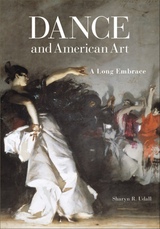 Dance and American Art: A Long Embrace
Sharyn R. Udall
University of Wisconsin Press, 2012 From ballet to burlesque, from the frontier jig to the jitterbug, Americans have always loved watching dance, whether in grand ballrooms, on Mississippi riverboats, or in the streets. Dance and American Art is an innovative look at the elusive, evocative nature of dance and the American visual artists who captured it through their paintings, sculpture, photography, and prints from the early nineteenth century through the mid-twentieth century. The scores of artists discussed include many icons of American art: Winslow Homer, George Caleb Bingham, Mary Cassatt, James McNeill Whistler, Alexander Calder, Joseph Cornell, Edward Steichen, David Smith, and others.
As a subject for visual artists, dance has given new meaning to America’s perennial myths, cherished identities, and most powerful dreams. Their portrayals of dance and dancers, from the anonymous to the famous—Anna Pavlova, Isadora Duncan, Loïe Fuller, Josephine Baker, Martha Graham—have testified to the enduring importance of spatial organization, physical pattern, and rhythmic motion in creating aesthetic form.
Through extensive research, sparkling prose, and beautiful color reproductions, art historian Sharyn R. Udall draws attention to the ways that artists’ portrayals of dance have defined the visual character of the modern world and have embodied culturally specific ideas about order and meaning, about the human body, and about the diverse fusions that comprise American culture.
Dance and Authoritarianism: These Boots are Made for Dancing
Anthony Shay
Intellect Books, 2021 Everyone who watched the opening ceremony of Beijing’s 2008 Summer Olympics can understand the power of dance and mass movement in the service of politics. Public performance and festival at such scale are familiar to us in Nazi Germany, the former Soviet Union, and contemporary North Korea, but this new book addresses lesser-known examples—in Spain, the Dominican Republic, Iran, Croatia, and Uzbekistan—and explores the various political regimes that ruled them.
Using dance as a lens through which to study political, ethnic, and gendered phenomena, Anthony Shay shows us how dance and mass movement have served as important political tools throughout history and across a variety of authoritarian regimes. Dance and Authoritarianism is a significant and original contribution to the scholarship at the intersection of dance, ethnology, anthropology, cultural studies, and history.
 Dance and Ethics: Moving Towards a More Humane Dance Culture
Naomi M. Jackson
Intellect Books, 2022 An introductory study of ethical issues applied to the history and field of Western theatrical dance.
This work examines ethics and the changing values in the world of dance, especially as faced by young dancers entering the profession. Since the 1960s, scholars and practitioners from the fields of dance education, somatics, and the realms of postmodern dance and ballet have increasingly believed that attitudes and practices involving psychological, physical, and sexual mistreatment of students and dancers must be challenged.
Dance and Ethics examines key ethical issues related to the dance field, primarily within the United States, and how those directly impact different aspects of the lives of dance artists throughout their careers. The issues discussed include the basic ethical choices facing a dance artist in terms of whether to care about ethics or separate art from morality; ethical issues involved in student–teacher and dancer–choreographer relationships; how ethical concerns relate to the creation and reception of choreographic work; ethical aspects of the critical assessment of dance and dancers; and ethical issues related to presenting systems and institutional infrastructures within the dance field.
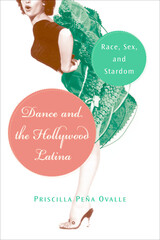 Dance and the Hollywood Latina: Race, Sex, and Stardom
Ovalle, Priscilla P
Rutgers University Press, 2011 Dance and the Hollywood Latina asks why every Latina star in Hollywood history, from Dolores Del Rio in the 1920s to Jennifer Lopez in the 2000s, began as a dancer or danced onscreen. While cinematic depictions of women and minorities have seemingly improved, a century of representing brown women as natural dancers has popularized the notion that Latinas are inherently passionate and promiscuous. Yet some Latina actresses became stars by embracing and manipulating these stereotypical fantasies.
Introducing the concepts of "inbetween-ness" and "racial mobility" to further illuminate how racialized sexuality and the dancing female body operate in film, Priscilla Peña Ovalle focuses on the careers of Dolores Del Rio, Rita Hayworth, Carmen Miranda, Rita Moreno, and Jennifer Lopez. Dance and the Hollywood Latina helps readers better understand how the United States grapples with race, gender, and sexuality through dancing bodies on screen.
Dance And The Lived Body
Sondra Horton Fraleigh
University of Pittsburgh Press, 1996 In her remarkable book, Sondra Horton Fraleigh examines and describes dance through her consciousness of dance as an art, through the experience of dancing, and through the existential and phenomenological literature on the lived body. She describes, with performance photographs, specific imagery in dance masterworks by Doris Humphrey, Anna Sokolow, Viola Farber, Nina Weiner, and Garth Fagan.
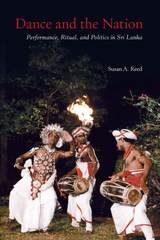 Dance and the Nation: Performance, Ritual, and Politics in Sri Lanka
Susan A. Reed
University of Wisconsin Press, 2010 Around the globe, dances that originate in village, temple, and court rituals have been adapted and transformed to carry secular meanings and serve new national purposes. In stage performances, dance competitions, and festivals worldwide, dance has become an emblem of ethnicity and an index of national identity. But what are the “backstage” stories of those dances chosen to bear such meanings, and what have been the consequences for their communities of origin? In Dance and the Nation, Susan A. Reed brings to light the complexities of aesthetic politics in a multi-faceted exploration and analysis of Kandyan dance in Sri Lanka.
As the national dance of Sri Lanka, Kandyan dance is identified with the majority Sinhala ethnic group and heavily supported by the state. Derived from the kohomba kankariya—an elaborate village ritual performed by men of the hereditary drummer caste—the dance was adopted by the state as a symbol of traditional Sinhala culture in the post-independence period. When state officials introduced the dance into the school curriculum, it was opened to individuals of all castes, and high-caste women have emerged as prominent teachers and performers. Reed’s evocative account traces the history and consequences of this transition from ritual to stage, situating the dance in relation to postcolonial nationalism and ethnic politics and emphasizing the voices and perspectives of the hereditary dancers and of women performers.
Although Kandyan dance is related to other south Asian dance forms, it is unique, distinguished by an elegant, energetic style, and lively displays of acrobatics and agility. The companion DVD includes unparalleled footage of this vibrant dance in ritual, stage, and training contexts, and features the most esteemed performers of the Kandyan region. Special Citation book award, Society for Dance History Scholars
Winner, Outstanding Publication Award, Congress on Research in Dance
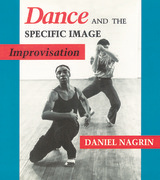 Dance and the Specific Image: Improvisation
Daniel Nagrin
University of Pittsburgh Press, 1994 After an extraordinary career in dance - as a performer, choreographer, and teacher - Daniel Nagrin has now written an extraordinary book. In it he explores the roots of his aesthetic philosophy, influenced by Stanislavski, Helen Tamiris, Joseph Chaikin and the Open Theatre, and his work on and off Broadway as an actor and dancer.
Dance and the Specific Image includes over one hundred improvisational structures that Nagrin created with his new company, the Workgroup, and has taught in dance classes and workshops all over the United States. Designed primarily for dancers, many can be adapted for actors and even musicians.
In the 1960s, at a time when many modern dancers were working with movement as abstraction, Nagrin turned instead toward movement as metaphor. His passionate belief that dance must speak of people led him to found the Workgroup, a small company of dancers who, in the early 1970s, devoted themselves to the practice and performance of improvisation.
Nagrin invites the reader into the mind of a dancer totally absorbed in his art, one who writes with wisdom and authority about what it means to be an artist.
 Dance Between Two Cultures: Latino Caribbean Literature Written in the United States
William Luis
Vanderbilt University Press, 1997 Offers insights on Latino Caribbean writers born or raised in the United States who are at the vanguard of a literary movement that has captured both critical and popular interest. In this groundbreaking study, William Luis analyzes the most salient and representative narrative and poetic works of the newest literary movement to emerge in Spanish American and U.S. literatures. The book is divided into three sections, each focused on representative Puerto Rican American, Cuban American, and Dominican American authors. Luis traces the writers' origins and influences from the nineteenth century to the present, focusing especially on the contemporary works of Oscar Hijuelos, Julia Alvarez, Cristina Garcia, and Piri Thomas, among others. While engaging in close readings of the texts, Luis places them in a broader social, historical, political, and racial perspective to expose the tension between text and context. As a group, Latino Caribbeans write an ethnic literature in English that is born of their struggle to forge an identity separate from both the influences of their parents' culture and those of the United States. For these writers, their parents' country of origin is a distant memory. They have developed a culture of resistance and a language that mediates between their parents' identity and the culture that they themselves live in. Latino Caribbeans are engaged in a metaphorical dance with Anglo Americans as the dominant culture. Just as that dance represents a coming together of separate influences to make a unique art form, so do both Hispanic and North American cultures combine to bring a new literature into being. This new body of literature helps us to understand not only the adjustments Latino Caribbean cultures have had to make within the larger U.S. environment but also how the dominant culture has been affected by their presence.
Dance, Disability and Law: InVisible Difference
Edited by Sarah Whatley, Charlotte Waelde, Shawn Harmon, Abbe Brown, Karen Wood, and Hetty Blades
Intellect Books, 2018 This collection is the first book to focus on the intersection of dance, disability, and the law. Bringing together a range of writers from different disciplines, it considers the question of how we value, validate, and speak about diversity in performance practice, with a specific focus on the experience of differently-abled dance artists within the changing world of the arts in the United Kingdom. Contributors address the legal frameworks that support or inhibit the work of disabled dancers and explore factors that affect their full participation, including those related to policy, arts funding, dance criticism, and audience reception.
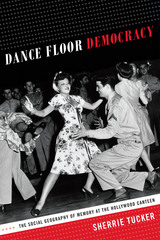 Dance Floor Democracy: The Social Geography of Memory at the Hollywood Canteen
Sherrie Tucker
Duke University Press, 2014 Open from 1942 until 1945, the Hollywood Canteen was the most famous of the patriotic home front nightclubs where civilian hostesses jitterbugged with enlisted men of the Allied Nations. Since the opening night, when the crowds were so thick that Bette Davis had to enter through the bathroom window to give her welcome speech, the storied dance floor where movie stars danced with soldiers has been the subject of much U.S. nostalgia about the "Greatest Generation." Drawing from oral histories with civilian volunteers and military guests who danced at the wartime nightclub, Sherrie Tucker explores how jitterbugging swing culture has come to represent the war in U.S. national memory. Yet her interviewees' varied experiences and recollections belie the possibility of any singular historical narrative. Some recall racism, sexism, and inequality on the nightclub's dance floor and in Los Angeles neighborhoods, dynamics at odds with the U.S. democratic, egalitarian ideals associated with the Hollywood Canteen and the "Good War" in popular culture narratives. For Tucker, swing dancing's torque—bodies sharing weight, velocity, and turning power without guaranteed outcomes—is an apt metaphor for the jostling narratives, different perspectives, unsteady memories, and quotidian acts that comprise social history.
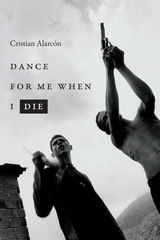 Dance for Me When I Die
Cristian Alarcón
Duke University Press, 2019 On the morning of February 6, 1999, Buenos Aires police officers shot and killed seventeen-year-old Víctor Manuel Vital, better known as Frente, while he was unarmed, hiding under a table, and trying to surrender. Widely known and respected throughout Buenos Aires's shantytowns for his success as a thief, commitment to a code of honor, and generosity to his community, Frente became a Robin Hood--style legend who, in death, was believed to have the power to make bullets swerve and save gang members from shrapnel. In Dance for Me When I Die—first published in Argentina in 2004 and appearing here in English for the first time—Cristian Alarcón tells the story and legacy of Frente's life and death in the context of the everyday experiences of love and survival, murder and addiction, and crime and courage of those living in the slums. Drawing on interviews with Frente's friends, family, and ex-girlfriends, as well as with local thieves and drug dealers, and having immersed himself in Frente's neighborhood for eighteen months, Alarcón captures the world of the urban poor in all of its complexity and humanity.
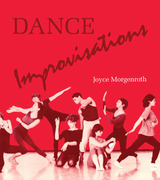 Dance Improvisations
Joyce Morgenroth
University of Pittsburgh Press, 1987
Dance Improvisations is a book for teachers of dance and acting, choreographers, directors, and dance therapists. Systematically offering a complete range of ways to explore dance, it can be used as a syllabus or as a reference for groups of all ages and all levels of experience.
The first chapter in Dance Improvisations introduces ways for a group to practice working together and for the dancers to gain an effective awareness of each other. These preliminaries are followed by a body of improvisational problems, organized into three main areas: Space, Time, and Movement Invention. Each area is presented as a series of topics. Each topic progresses from individual exploration to more formally structured group improvisations, with emphasis on learning to work as a group toward common structural goals.
This book is the first in its field to go beyond the pursuit of physical inventiveness to nurture the development of structural intuition. Joyce Morgenroth has succeeded in presenting improvisation in a way that is rational and methodical as well as inventive and personal - in the conviction that improvisation at its best is comprised of both form and fancy.
The Dance Language and Orientation of Bees
Karl von Frisch and Thomas D. Seeley
Harvard University Press, 1993 Until his death in 1982, Karl von Frisch was the world's most renowned authority on bees. The Dance Language and Orientation of Bees is his masterwork--the culmination of more than fifty years of research. Now available for the first time in paperback, it describes in non-technical language what he discovered in a lifetime of study about honeybees--their methods of orientation, their sensory faculties, and their remarkable ability to communicate with one another. Thomas Seeley's new foreword traces the revolutionary effects of von Frisch's work, not just for the study of bees, but for all subsequent research in animal behavior. This new paperback edition also includes an "Appreciation" of von Frisch by the distinguished biologist Martin Lindauer, who was Frisch's protégé and later his colleague and friend.
The Dance of Freedom: Texas African Americans during Reconstruction
By Barry Crouch
University of Texas Press, 2007 This anthology brings together the late Barry A. Crouch's most important articles on the African American experience in Texas during Reconstruction. Grouped topically, the essays explore what freedom meant to the newly emancipated, how white Texans reacted to the freed slaves, and how Freedmen's Bureau agents and African American politicians worked to improve the lot of ordinary African American Texans. The volume also contains Crouch's seminal review of Reconstruction historiography, "Unmanacling Texas Reconstruction: A Twenty-Year Perspective." The introductory pieces by Arnoldo De Leon and Larry Madaras recapitulate Barry Crouch's scholarly career and pay tribute to his stature in the field of Reconstruction history.
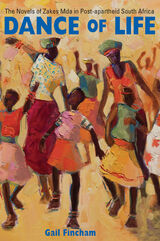 Dance of Life: The Novels of Zakes Mda in Post-apartheid South Africa
Gail Fincham
Ohio University Press, 2012 In recent years, the work of Zakes Mda—novelist, painter, composer, theater director and filmmaker—has attracted worldwide critical attention. Gail Fincham’s book examines the five novels Mda has written since South Africa’s transition to democracy: Ways of Dying (1995), The Heart of Redness (2000), The Madonna of Excelsior (2002), The Whale Caller (2005), and Cion (2007). Dance of Life explores how refigured identity is rooted in Mda’s strongly painterly imagination that creates changed spaces in memory and culture. Through a combination of magic realism, African orature, and intertextuality with the Western canon, Mda rejects dualistic thinking of the past and the present, the human and the nonhuman, the living and the dead, the rural and the urban. He imbues his fictional characters with the power to orchestrate a reconfigured subjectivity that is simultaneously political, social, and aesthetic.
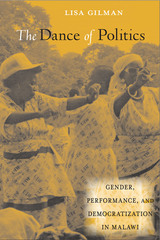 The Dance of Politics: Gender, Performance, and Democratization in Malawi
Lisa Gilman
Temple University Press, 2011 Election campaigns, political events, and national celebration days in Malawi usually feature groups of women who dance and perform songs of praise for politicians and political parties. These lively performances help to attract and energize throngs of prospective voters. However, as Lisa Gilman explains, “praise performing” is one of the only ways that women are allowed to participate in a male-dominated political system. Although political performances by women are not unique to Malawi, the case in Malawi is complicated by the fact that until 1994 all Malawianwomen were required to perform on behalf of the long-reigning political party and its self-declared “President for Life,” Dr. Hastings Kamuzu Banda+. This is the first book to examine the present-day situation, where issues of gender, economics and politics collide in surprising ways. Along with its solid grounding in the relevant literature, The Dance of Politics draws strength from Gilman’s first-hand observations and her interviews with a range of participants in the political process, from dancers to politicians.
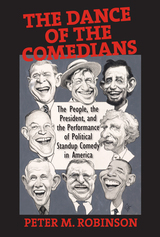 The Dance of the Comedians: The People, the President, and the Performance of Political Standup Comedy in America
Peter M. Robinson
University of Massachusetts Press, 2010 Why did Barack Obama court Jon Stewart and trade jokes with Stephen Colbert during the campaign of 2008? Why did Sarah Palin forgo the opportunity to earn votes on the Sunday morning political talk shows but embrace the chance to get laughs on Saturday Night Live? The Dance of the Comedians examines the history behind these questions—the merry, mocking, and highly contested anarchies of standup political comedy that have locked humorists, presidents, and their fellow Americans in an improvisational three-way "dance" since the early years of the American republic.
Peter M. Robinson shows how the performance of political humor developed as a celebration of democracy and an expression of political power, protest, and commercial profit. He places special significance on the middle half of the twentieth century, when presidents and comedians alike—from Calvin Coolidge to Ronald Reagan, from Will Rogers to Saturday Night Live's "Not Ready for Prime Time Players"—developed modern understandings of the power of laughter to affect popular opinion and political agendas, only to find the American audience increasingly willing and able to get in on the act. These years put the long-standing traditions of presidential deference profoundly in play as all three parties to American political humor—the people, the presidents, and the comedy professionals—negotiated their way between reverence for the office of the presidency and ridicule of its occupants.
Although the focus is on humor, The Dance of the Comedians illuminates the process by which Americans have come to recognize that the performance of political comedy has serious and profound consequences for those on all sides of the punch line.
The Dance of the Deep-Blue Scorpion
Akram Musallam
Seagull Books, 2021 An experimental novel that explores the complexity of Palestinian identity through extended metaphor and dark humor.
On a plastic chair in a parking lot in Ramallah sits a young man writing a novel, reflecting on his life: working in a dance club on the Israeli side of the border, scratching his father’s amputated leg, dreaming nightly of a haunting scorpion, witnessing the powerful aura of his mountain-lodging aunt. His work in progress is a meditation on absence, loss, and emptiness. He poses deep questions: What does it mean to exist? How can you confirm the existence of a place, a person, a limb? How do we engage with what is no longer there? Absurd at times, raw at others, The Dance of the Deep-Blue Scorpion explores Palestinian identity through Akram Musallam’s extended metaphors in the hope of transcending the loss of territory and erasure of history.
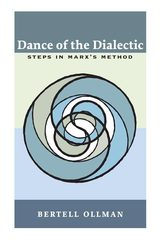 Dance of the Dialectic: STEPS IN MARX'S METHOD
Bertell Ollman
University of Illinois Press, 2003 Bertell Ollman has been hailed as "this country's leading authority on dialectics and Marx's method" by Paul Sweezy, the editor of Monthly Review and dean of America's Marx scholars. In this book Ollman offers a thorough analysis of Marx's use of dialectical method.
Marx made extremely creative use of dialectical method to analyze the origins, operation, and direction of capitalism. Unfortunately, his promised book on method was never written, so that readers wishing to understand and evaluate Marx's theories, or to revise or use them, have had to proceed without a clear grasp of the dialectic in which the theories are framed. The result has been more disagreement over "what Marx really meant" than over the writings of any other major thinker.
In putting Marx's philosophy of internal relations and his use of the process of abstraction--two little-studied aspects of dialectics--at the center of this account, Ollman provides a version of Marx's method that is at once systematic, scholarly, clear and eminently useful.
Ollman not only sheds important new light on what Marx really meant in his varied theoretical pronouncements, but in carefully laying out the steps in Marx's method makes it possible for a reader to put the dialectic to work in his or her own research. He also convincingly argues the case for why social scientists and humanists as well as philosophers should want to do so.
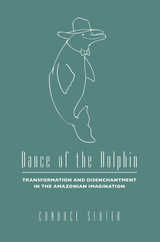 Dance of the Dolphin: Transformation and Disenchantment in the Amazonian Imagination
Candace Slater
University of Chicago Press, 1994 In folktales told throughout much of the Brazilian Amazon, dolphins take human form, attend raucous dances and festivals, seduce men and women, and carry them away to a city beneath the river. They are encantados, or Enchanted Beings, capable of provoking death or madness, but also called upon to help shamanic healers. Male dolphins—accomplished dancers who appear dressed in dapper straw hats, white suits, and with shiny black shoes—reportedly father numerous children. The females are said to lure away solitary fishermen. Both sinister and charming, these characters resist definition and thus domination; greedy and lascivious outsiders, they are increasingly symbolic of a distinctly Amazonian culture politically, socially, economically, and environmentally under seige.
Candace Slater examines these stories in Dance of the Dolphin, both as folk narratives and as representations of culture and conflict in Amazonia. Her engaging study discusses the tales from the viewpoints of genre, performance, and gender, but centers on them as responses to the great changes sweeping the Amazon today. According to Slater, these surprisingly widespread tales reflect Amazonians' own mixed reactions to the ongoing destruction of the rainforest and the resulting transformations in the social as well as physical landscape. Offering an informed view of Brazilian culture, this book crosses the boundaries of folklore, literature, anthropology, and Latin American studies. It is one of the very few studies to offer an overview of the changes taking place in Amazonia through the eyes of ordinary people.
"This book is a rich collection of stories about the transformation of dolphins in the city of enchantment. . . . The joy in this book is not just its vibrant analysis and careful relating of tradition and lore, but also its uncanny accurateness in capturing the very essence of Amazonia."-Darrell Posey, Journal of Latin American Studies
"Slater's fluid prose reads like a novel for those interested in Amazonian culture and folklore, while her integrated approach makes this a must read for those interested in innovative methodology."-Lisa Gabbert, Western Folklore
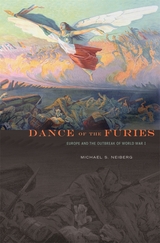 Dance of the Furies: Europe and the Outbreak of World War I
Michael S. Neiberg
Harvard University Press, 2011 The common explanation for the outbreak of World War I depicts Europe as a minefield of nationalism, needing only the slightest pressure to set off an explosion of passion that would rip the continent apart. But in a crucial reexamination of the outbreak of violence, Michael S. Neiberg shows that ordinary Europeans, unlike their political and military leaders, neither wanted nor expected war during the fateful summer of 1914. By training his eye on the ways that people outside the halls of power reacted to the rapid onset and escalation of the fighting, Neiberg dispels the notion that Europeans were rabid nationalists intent on mass slaughter. He reveals instead a complex set of allegiances that cut across national boundaries.
Neiberg marshals letters, diaries, and memoirs of ordinary citizens across Europe to show that the onset of war was experienced as a sudden, unexpected event. As they watched a minor diplomatic crisis erupt into a continental bloodbath, they expressed shock, revulsion, and fear. But when bargains between belligerent governments began to crumble under the weight of conflict, public disillusionment soon followed. Yet it was only after the fighting acquired its own horrible momentum that national hatreds emerged under the pressure of mutually escalating threats, wartime atrocities, and intense government propaganda.
Dance of the Furies gives voice to a generation who found themselves compelled to participate in a ghastly, protracted orgy of violence they never imagined would come to pass.
 Dance of the Furies: Europe and the Outbreak of World War I
Michael S. Neiberg
Harvard University Press The common explanation for the outbreak of World War I depicts Europe as a minefield of nationalism, needing only the slightest pressure to set off an explosion of passion that would rip the continent apart. But in a crucial reexamination of the outbreak of violence, Michael S. Neiberg shows that ordinary Europeans, unlike their political and military leaders, neither wanted nor expected war during the fateful summer of 1914. By training his eye on the ways that people outside the halls of power reacted to the rapid onset and escalation of the fighting, Neiberg dispels the notion that Europeans were rabid nationalists intent on mass slaughter. He reveals instead a complex set of allegiances that cut across national boundaries.
Neiberg marshals letters, diaries, and memoirs of ordinary citizens across Europe to show that the onset of war was experienced as a sudden, unexpected event. As they watched a minor diplomatic crisis erupt into a continental bloodbath, they expressed shock, revulsion, and fear. But when bargains between belligerent governments began to crumble under the weight of conflict, public disillusionment soon followed. Yet it was only after the fighting acquired its own horrible momentum that national hatreds emerged under the pressure of mutually escalating threats, wartime atrocities, and intense government propaganda.
Dance of the Furies gives voice to a generation who found themselves compelled to participate in a ghastly, protracted orgy of violence they never imagined would come to pass.
The Dance of the Intellect: Studies in the Poetry of the Pound Tradition
Marjorie Perloff
Northwestern University Press, 1996 Must poetic form be, as Yeats demanded, "full, sphere-like, single," or can it accommodate the impurities Yeats and his Modernist generation found so problematic? Sixty years later, these are still open questions, questions Marjorie Perloff addresses in these essays.
Dance of the Returned
Devon A. Mihesuah
University of Arizona Press, 2022 The disappearance of a young Choctaw leads Detective Monique Blue Hawk to investigate a little-known ceremonial dance. As she traces the steps of the missing man, she discovers that the seemingly innocuous Renewal Dance is not what it appears to be. After Monique embarks on a journey that she never thought possible, she learns that the past and future can converge to offer endless possibilities for the present. She must also accept her own destiny of violence and peacekeeping.
Dance of the Sleepwalkers: The Dance Marathon Fad
Frank M. Calabria
University of Wisconsin Press, 1993 Dance marathons were a phenomenally popular fad during the manic 1920s and depressive 1930s. What began as a craze soon developed into a money-making business which lasted 30 years. Some 20,000 contestants and show personnel participated in these events; audiences, the majority women, totalled in the millions. "A Poor Man's Nightclub," dance marathons were the dog-end of American show business, a bastard form of entertainment which borrowed from vaudeville, burlesque, night club acts and sports.
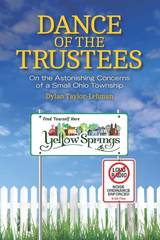 Dance of the Trustees: On the Astonishing Concerns of a Small Ohio Township
Dylan Taylor-Lehman
Ohio State University Press, 2018 On September 9, 2015, in the quirky village of Yellow Springs, Ohio, the Miami Township Board of Trustees arbitrated a dispute concerning an area bed and breakfast that was apparently causing problems in the neighborhood where it was located. People were irate: the B&B was considered too loud by some but unfairly under attack by others, while township officials were called incompetent by both sides for not ruling in their favor. The trustees were amused, concerned, and baffled at the situation before them.
This quaint debate represents just one of many fascinating problems the trustees deal with on a daily basis. While Miami Township is small, the concerns are myriad—from cemeteries filled with unknown remains to a fire department to oversee to legal action required against properties clogged with junk. The responsibilities are doubly impressive considering no trustees have backgrounds in public office.
This book combines entertaining nonfiction vignettes with well-researched township history—including a history of religious cults and the possibility that Lee Harvey Oswald was once in town—and elucidates the processes behind an entire civic division. Dance of the Trustees documents twenty-first-century small-town life with humor, warmth, and erudition.
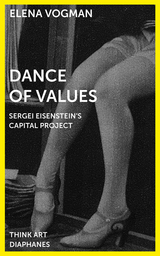 Dance of Values: Sergei Eisenstein’s Capital Project
Elena Vogman
Diaphanes, 2018 Sergei Eisenstein’s cinematic adaptation of Karl Marx’s Capital was never realized, yet it has haunted the imagination of many filmmakers, historians, and philosophers to the present day. Dance of Values aims to conjure the phantom of Eisenstein’s Capital, presenting for the first time material from the full scope of the film project’s archival body. This “visual instruction in the dialectical method,” as Eisenstein called it, comprises more than five hundred pages of notes, drawings, press clippings, diagrams, negatives, theoretical reflections, and extensive quotations. Dance of Values explores the internal formal necessity underlying Eisenstein’s artistic choices, and argues that its brilliant adaptation of Marx’s Capital relied on the fragmentary and nonlinear state of its material. Published here for the first time, sequences from Eisenstein’s archival materials are presented in this volume not as mere illustrations but as arguments in their own right, a visual theorization of value.
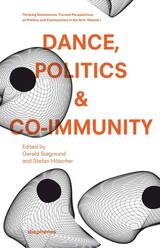 Dance, Politics & Co-Immunity: Current Perspectives on Politics and Communities in the Arts Vol. 1
Edited by Stefan Hölscher and Gerald Siegmund
Diaphanes, 2013 This volume is dedicated to the question of how dance, both in its historical and in its contemporary manifestations, is intricately linked to conceptualisations of the political. Whereas in this context the term "policy" means the reproduction of hegemonic power relations within already existing institutional structures, politics refers to those practices which question the space of policy as such by inscribing that into its surface which has had no place before. The art of choreography consists in distributing bodies and their relations in space. It is a distribution of parts that within the field of the visible and the sayable allocates positions to specific bodies. Yet in the confrontation between bodies and their relations, a deframing and dislocating of positions may take place. The essays included in this book are aimed at the multiple connections between politics, community, dance, and globalisation from the perspective of e.g. Dance and Theatre Studies, History, Philosophy, and Sociology.
Dance, Sex, and Gender: Signs of Identity, Dominance, Defiance, and Desire
Judith Lynne Hanna
University of Chicago Press, 1988 "Ambitious in its scope and interdisciplinary in its purview. . . . Without doubt future researchers will want to refer to Hanna's study, not simply for its rich bibliographical sources but also for suggestions as to how to proceed with their own work. Dance, Sex, and Gender will initiate a discussion that should propel a more methodologically informed study of dance and gender."—Randy Martin, Journal of the History of Sexuality
Dance, Somatics and Spiritualities: Contemporary Sacred Narratives
Edited by Amanda Williamson, Glenna Batson, Sarah Whatley, and Rebecca Weber
Intellect Books, 2014 Presenting a rich mosaic of embodied contemporary narratives in spirituality and movement studies, this book explicitly studies the relationship between spirituality and the field of Somatic Movement Dance Education. It is the first scholarly text to focus on contemporary spirituality within the domain of dance and somatic movement studies. Dance, Somatics and Spiritualities brings together prominent authors and practitioners in order to elucidate how a wide range of sacred narratives/spiritualities are informing pedagogy, educational and therapeutic practice. As well as providing new insights and promoting creative/artistic awareness, this seminal text de-mystifies the spiritual/sacred and brings clarity and academic visibility to this largely uncharted and often misrepresented subject.
 Dance Studies in China: Selected Writings from the Journal of Beijing Dance Academy
Edited by Deng Youling and Zhang Yanjie
Intellect Books, 2022 Translated journal articles, available in English for the first time.
Officially founded in 1978, the Beijing Dance School was the first professional dance school established after the creation of the People’s Republic of China. In the years since, the Beijing Dance Academy has become the only institution of higher learning for professional dance education in the country, as well as the largest prestigious dance school in the world. It is a full-time institution of higher learning with commitments to developing excellent professional dancers, choreographers, and dance researchers. Dance Studies in China is a collection of articles selected from issues of the Journal of Beijing Dance Academy, the only academic journal of dance studies in China. The collection also includes an interview with Shen Wei, the Chinese American choreographer, painter, and director living in New York.
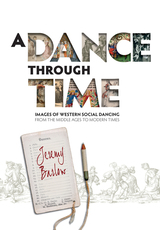 A Dance Through Time: Images of Western Social Dancing from the Middle Ages to Modern Times
Jeremy Barlow
Bodleian Library Publishing, 2012 A knees-up at the county fair. A duo of dancing ogres. A celebratory circle dance at London’s Piccadilly Circus. All of these lively scenarios feature in this enchanting survey of dance illustration throughout the centuries. But what can these vibrant—and often irreverent—images reveal to us about the history of dance and our changing attitudes toward it over time?
Drawing on a range of materials from the Bodleian Library, including manuscripts, visual art, dance cards, and invitations to balls, A Dance Through Time explores the imaginative ways in which artists and illustrators have responded to the challenge of creating a sense of movement. Social dancing reveals a dynamic tension between decorum and disregard, and for centuries artists have conveyed this in a highly stylized manner that makes use of curved forms to mimic gracious gestures and angular lines to represent those deemed showy or uncouth. Here, each illustration is carefully analyzed for what it shows us about the behavioral expectations of the time.
Lavishly illustrated, this book takes readers on a captivating journey through the changing fashions in European dance—from the waltz to the cha cha to the unbridled energy of rock and roll—providing ample insight into its history and colorful imagery.
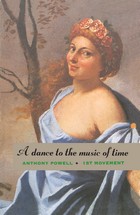 A Dance to the Music of Time: First Movement
Anthony Powell
University of Chicago Press, 1995 Read the novel that is #43 on the Modern Library's 100 Best of the 20th Century list and the Guardian called "a comic masterpiece" and the New York Times praised as "immensely entertaining."
A Dance to the Music of Time is a landmark work of fiction, praised by readers and critics and other novelists throughout the 75 years since the first volume was published. Equal parts funny and heartbreaking, clever and moving, Anthony Powell's universally acclaimed epic encompasses a four-volume panorama of twentieth century London.
Hailed by Time as "brilliant literary comedy as well as a brilliant sketch of the times," A Dance to the Music of Time opens just after World War I and carries through the 1950s, with all the changes of society, characters, and relationships that those shifting eras bring.
Four very different young men on the threshold of manhood dominate this opening volume of A Dance to the Music of Time. The narrator, Jenkins—a budding writer—shares a room with Templer, already a passionate womanizer, and Stringham, aristocratic and reckless. Widmerpool, as hopelessly awkward as he is intensely ambitious, lurks on the periphery of their world. Amid the fever of the 1920s and the first chill of the 1930s, these four gain their initiations into sex, society, business, and art. A masterpiece of modern fiction, Powell's epic creates a rich portrait of life in England between the wars.
"Reading Powell," says the New York Times, "is like living someone else's life, inextricably entangled with your own." Give this first volume a try, and you'll find characters and scenes and insights that will stay with you for the rest of your life.
Includes these novels:
A Question of Upbringing
A Buyer's Market
The Acceptance World
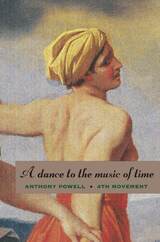 A Dance to the Music of Time: Fourth Movement
Anthony Powell
University of Chicago Press, 1995 Read the novel that is #43 on the Modern Library's 100 Best of the 20th Century list and the Guardian called "a comic masterpiece" and the New York Times praised as "immensely entertaining."
A Dance to the Music of Time is a landmark work of fiction, praised by readers and critics and other novelists throughout the 75 years since the first volume was published. Equal parts funny and heartbreaking, clever and moving, Anthony Powell's universally acclaimed epic encompasses a four-volume panorama of twentieth century London. Hailed by Time as "brilliant literary comedy as well as a brilliant sketch of the times," A Dance to the Music of Time opens just after World War I and carries through the 1950s, with all the changes to society, character, and relationships those shifting eras bring.
In this final volume of A Dance to the Music of Time, Nick Jenkins describes a world of ambition, intrigue, and dissolution. England has won the war, but its costs, physical and moral, were vast. Widmerpool's wife sets a snare for the young writer X. Trapnel, while her husband suffers private agony and public humiliation. Set against a background of politics, business, high society, and the counterculture in England and Europe, this magnificent work of art sounds an unforgettable requiem for an age.
"Reading Powell," says the New York Times, "is like living someone else's life, inextricably entangled with your own." Give this first volume a try, and you'll find characters and scenes and insights that will stay with you for the rest of your life.
Includes these novels:
Books Do Furnish a Room
Temporary Kings
Hearing Secret Harmonies
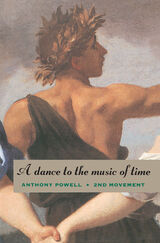 A Dance to the Music of Time: Second Movement
Anthony Powell
University of Chicago Press, 1995 Read the novel that is #43 on the Modern Library's 100 Best of the 20th Century list and the Guardian called "a comic masterpiece" and the New York Times praised as "immensely entertaining."
A Dance to the Music of Time is a landmark work of fiction, praised by readers and critics and other novelists throughout the 75 years since the first volume was published. Equal parts funny and heartbreaking, clever and moving, Anthony Powell's universally acclaimed epic encompasses a four-volume panorama of twentieth century London. Hailed by Time as "brilliant literary comedy as well as a brilliant sketch of the times," A Dance to the Music of Time opens just after World War I and continues through the 1950s.
In the background of this second volume of A Dance to the Music of Time, the rumble of distant events in Germany and Spain presages the storm of World War II. In England, even as the whirl of marriages and adulteries, fashions and frivolities, personal triumphs and failures gathers speed, men and women find themselves on the brink of fateful choices.
"Reading Powell," says the New York Times, "is like living someone else's life, inextricably entangled with your own." Give this first volume a try, and you'll find characters and scenes and insights that will stay with you for the rest of your life
Includes these novels:
At Lady Molly's
Casanova's Chinese Restaurant
The Kindly Ones
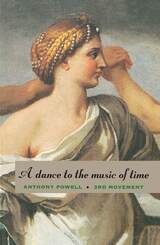 A Dance to the Music of Time: Third Movement
Anthony Powell
University of Chicago Press, 1995 Read the novel that is #43 on the Modern Library's 100 Best of the 20th Century list and the Guardian called "a comic masterpiece" and the New York Times praised as "immensely entertaining."
A Dance to the Music of Time is a landmark work of fiction, praised by readers and critics and other novelists throughout the 75 years since the first volume was published. Equal parts funny and heartbreaking, clever and moving, Anthony Powell's universally acclaimed epic encompasses a four-volume panorama of twentieth century London. Hailed by Time as "brilliant literary comedy as well as a brilliant sketch of the times," A Dance to the Music of Time opens just after World War I and continues through the 1950s and all the changes to life, society, and relationships those shifting eras bring.
In this third volume of A Dance to the Music of Time, we again meet Widmerpool, doggedly rising in rank; Jenkins, shifted from one dismal army post to another; Stringham, heroically emerging from alcoholism; Templer, still on his eternal sexual quest. Here, too, we are introduced to Pamela Flitton, one of the most beautiful and dangerous women in modern fiction. Wickedly barbed in its wit, uncanny in its seismographic recording of human emotions and social currents, this saga stands as an unsurpassed rendering of England's finest yet most costly hour.
"Reading Powell," says the New York Times, "is like living someone else's life, inextricably entangled with your own." Give Dance a try, and you'll find characters and scenes and insights that will stay with you for the rest of your life.
Includes these novels:
The Valley of Bones
The Soldier's Art
The Military Philosophers
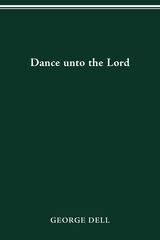 DANCE UNTO THE LORD
GEORGE DELL
Ohio State University Press, 2001 George Dell’s Dance unto the Lord is a compelling fusion of history and fiction. Set in 1848 to 1852, when Ohio was considered to be the West, Dance unto the Lord transports the readers to Union Village, a Shaker community in southwestern Ohio. The novel traces the coming of age of Richard and Ruth, young people who wish to marry but are forbidden to do so by Richard’s parents. In desperation, Richard runs away to Cincinnati. Ruth, too, leaves her family. She settles in Union Village and eventually becomes a teacher at the Shaker school. Torn between her desire for freedom and the security of life with the Shakers, Ruth becomes increasingly more immersed in the Shaker society while dreaming of Richard and a life outside the community. Meanwhile, through his experiences with an ill-fated blacksmith’s shop and its owners, Richard learns that life in the city can be complicated and painful. As he traces Richard’s and Ruth’s experiences, Dell vividly re-creates the texture of rural and city life in mid-nineteenth-century Ohio, providing a fascinating, well-researched account of a long-gone era. Dance unto the Lord provides wonderfully detailed descriptions of a Shaker community and life style. This book will be compelling reading for anyone interested in the time period, the Shakers, or simply a good story.
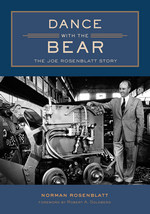 Dance with the Bear: The Joe Rosenblatt Story
Norman Rosenblatt
University of Utah Press, 2013 This carefully researched and illuminating biography recounts a pivotal period in Utah’s history as revealed by the life of businessman, community activist, and statesman Joe Rosenblatt. After successfully building Eimco Corporation, his manufacturing and construction business, into an industry leader—and, by the 1950s, Utah’s largest privately owned company—Rosenblatt spent the better part of his time following his retirement in 1963 as a devoted public servant. He served as chairman of the “Little Hoover Commission,” charged by Utah governor Calvin Rampton in 1965 to investigate the operation of the executive branch of the state’s government. He would go on to serve on more than fifty boards and commissions.
The “Little Hoover Commission” was modeled after the 1947 initiative of President Harry Truman, who created the Commission on Organization of the Executive Branch of Government to recommend administrative changes and appointed former president Herbert Hoover to chair it. Rosenblatt, a perceptive and outspoken figure, brought a much-needed dose of urgency and pragmatism to the Utah process and formulated a number of far-reaching suggestions to the legislature—many of which were adopted and still exist to this day. His work with the commission coupled with his later role on the San Francisco Federal Reserve Board did much to modernize Utah. Rosenblatt’s legacy as a perpetual champion of the community is further exemplified by his role as cultural conduit between Salt Lake’s Jewish community and the leaders of the Church of Jesus Christ of Latter-day Saints.
This readable work will serve as an integral addition to Utah business and political history, enriching the library of anyone looking for an engaging story of a remarkable and transformative figure.
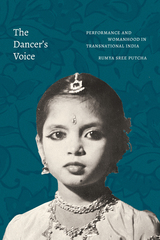 The Dancer's Voice: Performance and Womanhood in Transnational India
Rumya Sree Putcha
Duke University Press, 2023 In The Dancer’s Voice Rumya Sree Putcha theorizes how the Indian classical dancer performs the complex dynamics of transnational Indian womanhood. Putcha argues that the public persona of the Indian dancer has come to represent India in the global imagination—a representation that supports caste hierarchies and Hindu ethnonationalism, as well as white supremacist model minority narratives. Generations of Indian women have been encouraged to embody the archetype of the dancer, popularized through film cultures from the 1930s to the present. Through analyses of films, immigration and marriage laws, histories of caste and race, advertising campaigns, and her own family’s heirlooms, photographs, and memories, Putcha reveals how women’s citizenship is based on separating their voices from their bodies. In listening closely to and for the dancer’s voice, she offers a new way to understand the intersections of body, voice, performance, caste, race, gender, and nation.
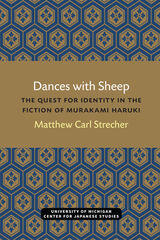 Dances with Sheep: The Quest for Identity in the Fiction of Murakami Haruki
Matthew Carl Strecher
University of Michigan Press, 2002 As a spokesman for disaffected youth of the post-1960s, Murakami Haruki has become one of the most important voices in contemporary Japanese literature, and he has gained a following in the United States through translations of his works. In Dances with Sheep, Matthew Strecher examines Murakami’s fiction—and, to a lesser extent, his nonfiction—for its most prevalent structures and themes. Strecher also delves into the paradoxes in Murakami’s writings that confront critics and casual readers alike. Murakami writes of “serious” themes yet expresses them in a relatively uncomplicated style that appeals to high school students as well as scholars; and his fictional work appears to celebrate the pastiche of postmodern expression, yet he rejects the effects of the postmodern on contemporary culture as dangerous. Strecher’s methodology is both historical and cultural as he utilizes four distinct yet interwoven approaches to analyze Murakami’s major works: the writer’s “formulaic” structure with serious themes; his play with magical realism; the intense psychological underpinnings of his literary landscape; and his critique of language and its capacity to represent realities, past and present. Dances with Sheep links each of these approaches with Murakami’s critical focus on the fate of individual identity in contemporary Japan. The result is that the simplicity of the Murakami hero, marked by lethargy and nostalgia, emerges as emblematic of contemporary humankind, bereft of identity, direction, and meaning. Murakami’s fiction is reconstructed in Dances with Sheep as a warning against the dehumanizing effects of late-model capitalism, the homogenization of the marketplace, and the elimination of effective counterculture in Japan.
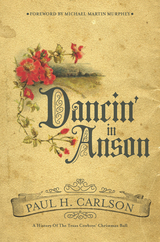 Dancin' in Anson: A History of the Texas Cowboys' Christmas Ball
Paul H. Carlson
Texas Tech University Press, 2014 Celebrating the celebration of the Old West
In the 1880s, there wasn't much in Anson, Texas, in the way of entertainment for the area’s cowhands. But Star Hotel operator M. G. Rhodes changed that when he hosted a Grand Ball the weekend before Christmas. A restless traveling salesman, rancher, and poet from New York named William Lawrence Chittenden, a guest at the Star Hotel, was so impressed with the soiree that he penned his observances in the poem “The Cowboys’ Christmas Ball.”
Reenacted annually since 1934 based on Chittenden’s poem, the contemporary dances attract people from coast to coast, from Canada, and from across Europe and elsewhere. Since 1993 Grammy Award-winning musical artist Michael Martin Murphey has played at the popular event.
Far more than a history of the Jones County dance, Paul Carlson analyzes the long poem, defining the many people and events mentioned and explaining the Jones County landscape Chittenden lays out in his celebrated work. The book covers the evolution of cowboy poetry and places Chittenden and his poem chronologically within the ever-changing western genre.
Dancin’ in Anson: A History of the Texas Cowboys' Christmas Ball is a novel but refreshing look at a cowboy poet, his poem, and a joyous Christmas-time family event that traces its roots back nearly 130 years.
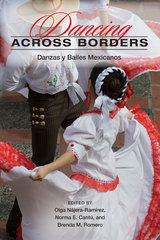 Dancing across Borders: Danzas y Bailes Mexicanos
Edited by Olga Najera-Ramirez, Norma E. Cantu, and Brenda M. Romero
University of Illinois Press, 2009 Dancing across Borders: Danzas y Bailes Mexicanos focuses specifically on Mexican dance practices on both sides of the U.S.-Mexico border. The essays explore various types of Mexican popular and traditional dances and address questions of authenticity, aesthetics, identity, interpretation, and research methodologies in dance performance. Contributors include not only noted scholars from a variety of disciplines but also several dance practitioners who reflect on their engagement with dance and reveal subtexts of dance culture. Capturing dance as a living expression, the volume's ethnographic approach highlights the importance of the cultural and social contexts in which dances are practiced. Contributors are Norma E. Cantú, Susan Cashion, María Teresa Ceseña, Xóchitl C. Chávez, Adriana Cruz-Manjarrez, Renée de la Torre Castellanos, Peter J. García, Rudy F. García, Chris Goertzen, Martha González, Elisa Diana Huerta, Sydney Hutchinson, Marie "Keta" Miranda, Olga Nájera-Ramírez, Shakina Nayfack, Russell Rodríguez, Brenda M. Romero, Nancy Lee Chalfa Ruyter, José Sánchez Jiménez, and Alberto Zárate Rosales.
Dancing across the Page: Narrative and Embodied Ways of Knowing
Karen Barbour
Intellect Books, 2011 An innovative exploration of understanding through dance, Dancing across the Page draws on the frameworks of phenomenology, feminism, and postmodernism to offer readers an understanding of performance studies that is grounded in personal narrative and lived experience. Through accounts of contemporary dance making, improvisation, and dance education, Karen Barbour explores a diversity of themes, including power; activism; and cultural, gendered, and personal identity. An intimate yet rigorous investigation of creativity in dance, Dancing across the Page emphasizes embodied knowledge and imagination as a basis for creative action in the world.
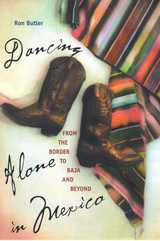 Dancing Alone in Mexico: From the Border to Baja and Beyond
Ron Butler
University of Arizona Press, 2000 Can a man have a love affair with a foreign land? Ron Butler never dreamed Mexico would capture his heart and his soul. But when his ex-wife moved to Guadalajara with their children in the wake of divorce, he found himself crisscrossing the country, seduced by its charms and moved by its rhythms and its melodies. Like the diver of an old Mexican legend who lives beneath the sea seeking the best pearl, Butler lost himself in Mexico and found the hidden treasures of every tiny hamlet and big metropolis. He writes about the endangered monarch butterflies of El Rosario, the street bands of Zacatecas, and the mummies of Guanajuato. He takes a magical night ferry ride from Mazatlán and a train excursion into Copper Canyon—a chasm four times larger than the Grand Canyon—in Mexico's most mysterious mountains. He goes off the beaten path in such tourist havens as Acapulco and Cancún. And he walks in the footsteps of movie stars and artists who too have been enamored of Mexico. Poking into the nooks and crannies of Mexico, Butler indulges in tasty Mexican specialties at both the finest restaurants and out-of-the-way street stands. He finds the best tequila in the town named Tequila, the world's most delicious cup of coffee in Veracruz, the sweetest dulce in Morelia, and the best mole—a Mayan chile and chocolate sauce embellished by nuns anxious to please a visiting Spanish viceroy—in Puebla. Sharing his considerable knowledge of art, Butler also uncovers the best of Mexico's museums and advises shoppers about folk crafts. Informative and helpful as the best travel guide, Dancing Alone in Mexico will help even seasoned travelers to get the most out of their trips to Mexico. Casual and lively as the best travel memoir, the book will also delight the armchair traveler with south-of-the-border stories and adventures that come only to those who dance not alone but with an entire land.
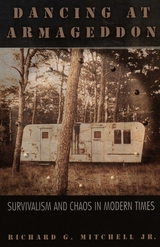 Dancing at Armageddon: Survivalism and Chaos in Modern Times
Richard G. Mitchell Jr.
University of Chicago Press, 2001 Winner of the Charles H. Cooley Award from the Society for the Study of Symbolic Interaction.
Richard G. Mitchell Jr. spent more than a dozen years among survivalists at public conferences, private meetings, and clandestine training camps across America. He takes us inside a compelling, hidden world more connected to the chaos of modern life many of us experience than the label "separatist" suggests. In survivalism Mitchell found a profound and meaningful critique of contemporary industrial society, a subculture in which the real evil is not repressive government but the far more insidious influence of a "Planet Microsoft" mentality with its abundance of empty choices. Survivalists, Mitchell shows us, are seeking resistance, not struggling against it; they are looking for ways to define themselves and test their talents in a society that is becoming devitalized and formless.
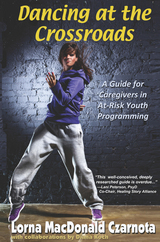 Dancing at the Crossroads: A Guide for Caregivers in At-Risk Youth Programs
Lorna Czarnota
Parkhurst Brothers, Inc., 2014 An anthology of traditional and original stories with commentary for using the stories to help troubled teens in need of character formation and re-formation. Also for use in general classrooms and youth activities to undergird healthy character formation in the pre-teen and teen years. Mentoring teens can be a wild dance. As adults we count and measure our movements but teens have created their own music and their own steps, they dance to the cycle of adolescent change in an effort to become one of us, though they would never admit that.
The books Dancing at the Crossroads: Stories for Mentoring At-Risk Youth, Practitioner’s Guidebook and Caregiver’s Guidebook are packed with the lessons of fifteen years in the field working with at-risk populations in runaway shelters, group homes, residential treatment facilities and one-on one with youth and parents. Out of a real understanding of these young people and their needs, and a passion for helping guide them into the adult circle, Lorna MacDonald Czarnota has compiled a collection of time-tested stories with activities, advice and information for parents and families, and a series of programs that storytellers, mental health workers, counselors, therapists, and others can utilize with groups of their own.
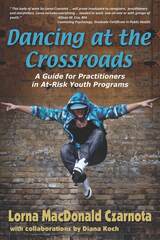 Dancing at the Crossroads: A Guide for Practitioners in At-Risk Youth Programs
Lorna Czarnota
Parkhurst Brothers, Inc., 2014 An anthology of traditional and original stories with commentary for using the stories to help troubled teens in need of character formation and re-formation. Also for use in general classrooms and youth activities to undergird healthy character formation in the pre-teen and teen years. Mentoring teens can be a wild dance. As adults we count and measure our movements but teens have created their own music and their own steps, they dance to the cycle of adolescent change in an effort to become one of us, though they would never admit that.
The books Dancing at the Crossroads: Stories for Mentoring At-Risk Youth, Practitioner’s Guidebook and Caregiver’s Guidebook are packed with the lessons of fifteen years in the field working with at-risk populations in runaway shelters, group homes, residential treatment facilities and one-on one with youth and parents. Out of a real understanding of these young people and their needs, and a passion for helping guide them into the adult circle, Lorna MacDonald Czarnota has compiled a collection of time-tested stories with activities, advice and information for parents and families, and a series of programs that storytellers, mental health workers, counselors, therapists, and others can utilize with groups of their own.
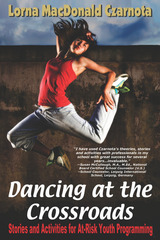 Dancing At The Crossroads: Stories and Activities for At-Risk Youth Programming
Lorna Czarnota
Parkhurst Brothers, Inc., 2014 An anthology of traditional and original stories with commentary for using the stories to help troubled teens in need of character formation and re-formation. Also for use in general classrooms and youth activities to undergird healthy character formation in the pre-teen and teen years. Mentoring teens can be a wild dance. As adults we count and measure our movements but teens have created their own music and their own steps, they dance to the cycle of adolescent change in an effort to become one of us, though they would never admit that.
Dancing at the Crossroads: Stories for Mentoring At-Risk Youth, Caregiver’s Guidebook and Practitioner’s Guidebook are packed with the lessons of fifteen years in the field working with at-risk populations in runaway shelters, group homes, residential treatment facilities and one-on one with youth and parents. Out of a real understanding of these young people and their needs, and a passion for helping guide them into the adult circle, Lorna MacDonald Czarnota has compiled a collection of time-tested stories with activities, advice and information for parents and families, and a series of programs that storytellers, mental health workers, counselors, therapists, and others can utilize with groups of their own.
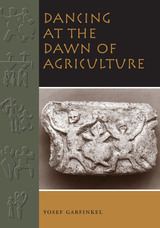 Dancing at the Dawn of Agriculture
By Yosef Garfinkel
University of Texas Press, 2003 As the nomadic hunters and gatherers of the ancient Near East turned to agriculture for their livelihood and settled into villages, religious ceremonies involving dancing became their primary means for bonding individuals into communities and households into villages. So important was dance that scenes of dancing are among the oldest and most persistent themes in Near Eastern prehistoric art, and these depictions of dance accompanied the spread of agriculture into surrounding regions of Europe and Africa. In this pathfinding book, Yosef Garfinkel analyzes depictions of dancing found on archaeological objects from the Near East, southeastern Europe, and Egypt to offer the first comprehensive look at the role of dance in these Neolithic (7000-4000 BC) societies. In the first part of the book, Garfinkel examines the structure of dance, its functional roles in the community (with comparisons to dance in modern pre-state societies), and its cognitive, or symbolic, aspects. This analysis leads him to assert that scenes of dancing depict real community rituals linked to the agricultural cycle and that dance was essential for maintaining these calendrical rituals and passing them on to succeeding generations. In the concluding section of the book, Garfinkel presents and discusses the extensive archaeological data—some 400 depictions of dance—on which his study is based.
 Dancing at the Dead Sea: Tracking the World's Environmental Hotspots
Alanna Mitchell
University of Chicago Press, 2005 One hundred and fifty years after the publication of On the Origin of Species, award-winning environmental reporter Alanna Mitchell set out to retrace the idea of evolution and grapple with the fact that a massive extinction of the planet's species was well under way. So began a three-year odyssey in which Mitchell picked up where Darwin left off, examining not just the origin but also the ultimate fate of our world.
Combining scientific curiosity with travel and adventure, Dancing at the Dead Sea takes the reader on an intimate tour through the world's environmental hotspots. Readers join Mitchell as she tracks the spectacular biodiversity of regions as extraordinary as the island of Madagascar, the rain forests of Suriname, the parched oases of Jordan, the Arctic desert of Banks Island, the volcanic crests of Iceland, and, ultimately, the Galapagos archipelago, where Darwin conducted his famous research. Along the way, Mitchell introduces us to the numerous scientists and conservationists who are working to protect these endangered places. She also chronicles the courageous efforts of everyday men and women in these regions as they try to convince governments to turn the world's hotspots into environmentally protected areas.
Ultimately, Mitchell's travels around the world compel her to ponder our shelf life as a species in the grand evolutionary scheme of the planet. She wonders what Darwin would make of the profound ecological destruction she witnesses. Is the human race suicidal? What can help our species avert extinction? Posing tough and cutting questions such as these, Dancing at the Dead Sea is a must-read for aficionados of good science writing and travel literature alike.
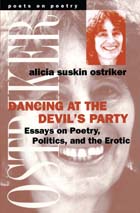 Dancing at the Devil's Party: Essays on Poetry, Politics, and the Erotic
Alicia Suskin Ostriker
University of Michigan Press, 2000 This volume of essays celebrates poetry that aims to change the world, whether through engagement with political issues, reimagining the meanings of love, recasting our relationship with nature; or through new relationships with our spiritual traditions. Alicia Ostriker's opening essay, defining the difference between poetry and propaganda, surveys the artistic accomplishments of the women's poetry movement. Succeeding essays explore the meaning of politics, love, and the spiritual life in the work of Walt Whitman, Elizabeth Bishop, Sharon Olds, Maxine Kumin, Lucille Clifton, and Allen Ginsberg.
In her work, Ostriker can be controversial, as when she attacks the academic establishment for rejecting the erotic dimension of poetry, or when she meditates on the significance of the black poet Lucille Clifton to herself as a reader, or when she argues that Allen Ginsberg's "Howl"--famous as the primary poem of the Beat Generation--is also a profoundly Jewish poem. Yet her writing is always lively and readable, free of academic jargon, inviting the reader to enjoy a wide range of poetic styles and experiences.
Ostriker's criticism, like her poetry, is both feminist and deeply humane. These essays on American poetry will appeal to students of poetry, scholars of American literature, and anyone who enjoys the work of the poets discussed in the book.
Alicia Ostriker is the author of nine books of poetry, including The Imaginary Lover, which won the William Carlos Williams Award and The Crack in Everything, which was a National Book award finalist in 1996, and which received the Paterson Prize in 1997 and the San Fransisco State Poetry Center Award in 1998. She is Distinguished Professor of English at Rutgers University.
Dancing Bahia: Essays on Afro-Brazilian Dance, Education, Memory, and Race
Edited by Lucia M. Suarez, Amélia Conrado and Yvonne Daniel
Intellect Books, 2018 Dancing Bahia is an edited collection that draws together the work of leading scholars, artists, and dance activists from Brazil, Canada, and the United States to examine the particular ways in which dance has responded to socio-political notions of race and community, resisting stereotypes, and redefining African Diaspora and Afro-Brazilian traditions. Using the Brazilian city of Salvador da Bahia as its focal point, this volume brings to the fore questions of citizenship, human rights, and community building. The essays within are informed by both theory and practice, as well as black activism that inspires and grounds the research, teaching, and creative output of dance professionals from, or deeply connected to, Bahia.
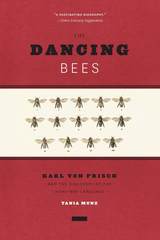 The Dancing Bees: Karl von Frisch and the Discovery of the Honeybee Language
Tania Munz
University of Chicago Press, 2016 We think of bees as being among the busiest workers in the garden, admiring them for their productivity. But amid their buzzing, they are also great communicators—and unusual dancers. As Karl von Frisch (1886–1982) discovered during World War II, bees communicate the location of food sources to each other through complex circle and waggle dances. For centuries, beekeepers had observed these curious movements in hives, and others had speculated about the possibility of a bee language used to manage the work of the hive. But it took von Frisch to determine that the bees’ dances communicated precise information about the distance and direction of food sources. As Tania Munz shows in this exploration of von Frisch’s life and research, this important discovery came amid the tense circumstances of the Third Reich.
The Dancing Bees draws on previously unexplored archival sources in order to reveal von Frisch’s full story, including how the Nazi government in 1940 determined that he was one-quarter Jewish, revoked his teaching privileges, and sought to prevent him from working altogether until circumstances intervened. In the 1940s, bee populations throughout Europe were facing the devastating effects of a plague (just as they are today), and because the bees were essential to the pollination of crops, von Frisch’s research was deemed critical to maintaining the food supply of a nation at war. The bees, as von Frisch put it years later, saved his life. Munz not only explores von Frisch’s complicated career in the Third Reich, she looks closely at the legacy of his work and the later debates about the significance of the bee language and the science of animal communication.
This first in-depth biography of von Frisch paints a complex and nuanced portrait of a scientist at work under Nazi rule. The Dancing Bees will be welcomed by anyone seeking to better understand not only this chapter of the history of science but also the peculiar waggles of our garden visitors.
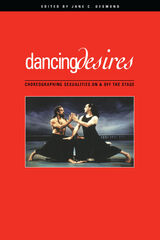 Dancing Desires: Choreographing Sexualities On And Off The Stage
Jane C. Desmond
University of Wisconsin Press, 2001 What happens to the writing of dance history when issues of sexuality and sexual identity are made central? What happens to queer theory, and to other theoretical constructs of gender and sexuality, when a dancing body takes center stage? Dancing Desires asks these questions, exploring the relationship between dancing bodies and sexual identity on the concert stage, in nightclubs, in film, in the courts, and on the streets. From Nijinsky’s balletic prowess to Charlie Chaplin's lightfooted "Little Tramp," from lesbian go-go dancers to the swans of Swan Lake, from the postmodern works of Bill T. Jones to the dangers of same-sex social dancing at Disneyland and the ecstatic Mardi Gras dance parties of Sydney, Australia, this book tracks the intersections of dance and human sexuality in the twentieth century as the definition of each has shifted and expanded.
The contributors come from a number of fields (literature, history, theater, dance, film studies, legal studies, critical race studies) and employ methodologies ranging from textual analysis and film theory to ethnography. By embracing dance, and bodily movement more generally, as a crucial focus for investigation, together they initiate a new agenda for tracking the historical kinesthetics of sexuality.
Dancing Fools and Weary Blues: The Great Escape of the Twenties
Edited by Lawrence R. Broer and John D. Walther
University of Wisconsin Press, 1990 Often, the decade of the 1920s has been stereotyped with such labels as “The Roaring Twenties,” “The Jazz Age,” or “The Lost Generation.” Historical perspective has forced reevaluation of this decade. Articles in this collection are presented in the most definitive anthology dealing with 1920s America.
The contributors have put aside stereotypes to offer a valuable critique of the American dream during a time of major crises. Dancing Fools and Weary Blues also presents its readers a picture of the continual redemption and revitalization of that dream, and reasserts its basic democratic values.
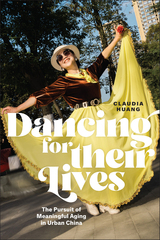 Dancing for Their Lives: The Pursuit of Meaningful Aging in Urban China
Claudia Huang
Rutgers University Press, 2025 Dancing for Their Lives explores the vibrant world of retired Chinese women known as "dancing grannies” who seek fulfillment and companionship amidst societal upheaval. These women, part of China’s “lost generation,” gather in parks and public squares to reclaim their lives through dance in the wake of Chinese economic and cultural transformations. The book challenges prevailing narratives of aging societies, portraying old age as a site of social innovation rather than decline. Based on ethnographic research conducted in Chengdu, China, Dancing for Their Lives reveals how retirees learn to navigate shifting social norms and values while actively creating new models for growing older. The book’s insights resonate beyond Chinese society, offering lessons on resilience and the pursuit of meaning in any aging population. Dancing for Their Lives underscores the human capacity to craft purposeful lives amid uncertainty, transcending geographical boundaries to illuminate the universal quest for fulfillment in later years.
Dancing from Past to Present: Nation, Culture, Identities
Edited by Theresa Jill Buckland
University of Wisconsin Press, 2007 This groundbreaking collection combines ethnographic and historic strategies to reveal how dance plays crucial cultural roles in various regions of the world, including Tonga, Java, Bosnia-Herzegovina, New Mexico, India, Korea, Macedonia, and England. The essays find a balance between past and present and examine how dance and bodily practices are core identity and cultural creators. Reaching beyond the typically Eurocentric view of dance, Dancing from Past to Present opens a world of debate over the role dance plays in forming and expressing cultural identities around the world.
Dancing Ghosts: Native American And Christian Syncretism In Mary Austin'S Work
Mark T. Hoyer
University of Nevada Press, 1998 A significant and innovative contribution to Austin studies. How did an Illinois Methodist homesteader in the West come to create one of the most significant cosmological syntheses in American literature? In this study, Hoyer draws on his own knowledge of biblical religion and Native American cultures to explore Austin's creation of the "mythology of the American continent" she so valued. Austin lived in and wrote about "the land of little rain," semiarid and arid parts of California and Nevada that were home to the Northern Paiute, Shoshone, Interior Chumash, and Yokut peoples. Hoyer makes new and provocative connections between Austin and spiritual figures like Wovoka, the prophet of the Ghost Dance religion, and writers like Zitkala-sa and Mourning Dove, and he provides a particularly fine reading of Cogowea.
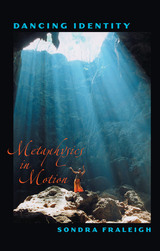 Dancing Identity: Metaphysics In Motion
Sondra Horton Fraleigh
University of Pittsburgh Press, 2004
Combining critical analysis with personal history and poetry, Dancing Identity presents a series of interconnected essays composed over a period of fifteen years. Taken as a whole, these meditative reflections on memory and on the ways we perceive and construct our lives represent Sondra Fraleigh's journey toward self-definition as informed by art, ritual, feminism, phenomenology, poetry, autobiography, and-always-dance.
Fraleigh's brilliantly inventive fusions of philosophy and movement clarify often complex philosophical issues and apply them to dance history and aesthetics. She illustrates her discussions with photographs, dance descriptions, and stories from her own past in order to bridge dance with everyday movement. Seeking to recombine the fractured and bifurcated conceptions of the body and of the senses that dominate much Western discourse, she reveals how metaphysical concepts are embodied and presented in dance, both on stage and in therapeutic settings.
Examining the role of movement in personal and political experiences, Fraleigh reflects on her major influences, including Moshe Feldenkrais, Kazuo Ohno, and Twyla Tharp. She draws on such varied sources as philosophers Simone de Beauvoir and Martin Heidegger, the German expressionist dancer Mary Wigman, Japanese Butoh founder Tatsumi Hijikata, Hitler, the Bomb, Miss America, Balanchine, and the goddess figure of ancient cultures. Dancing Identity offers new insights into modern life and its reconfigurations in postmodern dance.
Dancing in Odessa
Ilya Kaminsky
Tupelo Press, 2004 Winner of the 2002 Dorset Prize, and recipient of the Ruth Lilly Fellowship, Ilya Kaminsky is a recent Russian immigrant and rising poetic star. Despite the fact that he is a non-native speaker, Kaminksy's sense of rhythm and lyic surpasses that of most contemporary poets in the English language. This magical, musical book of poems draws readers into its unforgettable heart, and Carolyn Forché wrties simply "I'm in awe of his gifts."
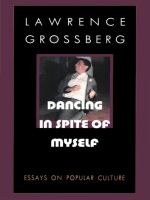 Dancing in Spite of Myself: Essays on Popular Culture
Lawrence Grossberg
Duke University Press, 1997 In Dancing in Spite of Myself, Lawrence Grossberg—well known as a pioneering figure in cultural studies—has collected essays written over the past twenty years that have also established him as one of the leading theorists of popular culture and, specifically, of rock music. Grossberg offers an original and sophisticated view of the growing power of popular culture and its increasing inseparability from contemporary structures of economic and political power and from our everyday lives.
In the course of conducting this exploration into the meaning of "popularity," he investigates the nature of fandom, the social effects of rock music and youth culture, and the possibilities for understanding the history of popular texts and practices. Describing what he calls "the postmodernity of everyday life," Grossberg offers important insights into the relation of pop music to issues of postmodernity and inton the growing power of the new cultural conservatism and its relationship to "the popular." Exploring the limits of existing theories of hegemony in cultural studies, Grossberg reveals the ways in which popular culture is being mobilized in the service of economic and political struggles. In articulating his own critical practice, Grossberg surveys and challenges some of the major assumptions of popular culture studies, including notions of domination and resistance, mainstream and marginality, and authenticity and incorporation.
Dancing in Spite of Myself provides an introduction to contemporary theories of popular culture and a clear statement of relationships among theories of the nature of rock music, postmodernity, and conservative hegemony.
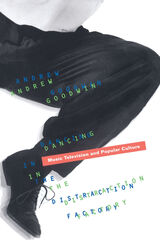 Dancing In The Distraction Factory: Music Television and Popular Culture
Andrew Goodwin
University of Minnesota Press, 1992 Cultural Studies “Entertaining proof that good sense means good theory, this book is the first to treat music TV as vision and sound. Academically, I had most fun applauding Andrew Goodwin’s elegant skewering of postmodernists; as a rock fan I was constantly startled by Goodwin’s exposes of my most deeply held prejudices. I’m now convinced; there’s much more to MTV than meets the eye.”Simon FrithThe John Logie Baird Centre“Dancing in the Distraction Factory is the best study of MTV I have read. At a time when many critics dismiss music videos either as advertisements for interchangeable commodities or as tiny, soundless movies, Goodwin manages both to analyze the business components of this new medium and also to take videos seriously as complex cultural texts involving music, visuals, stars, and much else. Dancing in the Distraction Factory is a smart book; it will have an impact on the debates surrounding popular culture, and also offers a great deal that will interest the pop music fan.”Susan McClaryMcGill University
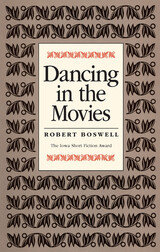 Dancing in the Movies
Robert Boswell
University of Iowa Press, 1986 Encompassing a vast gamut of personalities, situations, and emotions, these stories penetrate our motives for doing what is right. Often there is no right or wrong, and the characters' motives for the choices they make are as diverse as the childhood memories they cherish and abhor. In the end, this book probes individual impulse and responsibility, creating stories so unerringly authentic that they become—irrepressibly—part of everyone who reads them. "The Darkness of Love" narrates three days in the life of a black policeman, distressed by his inner fears of racism and irresistibly attracted by his wife's sister. In "Dancing in the Movies" a college student returns to his hometown, where he finds his girlfriend—a heroin addict—and tries to convince her to overcome her habit. There are stories of men at war, of lovers trying to begin a relationship, of others trying to sustain their love. Each story revolves around characters with a choice to make, and Robert Boswell renders these characters in all of their fine, vulnerable, and relentless attributes. With this prize-winning collection, Boswell proves himself a mature craftsperson, weaving stories both poignant and profound. Each story is a vision of life, alternately dark and joyous, gritty and hopeful.
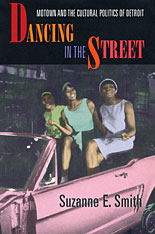 Dancing in the Street: Motown and the Cultural Politics of Detroit
Suzanne E. Smith
Harvard University Press, 2001 Detroit in the 1960s was a city with a pulse: people were marching in step with Martin Luther King, Jr., dancing in the street with Martha and the Vandellas, and facing off with city police. Through it all, Motown provided the beat. This book tells the story of Motown--as both musical style and entrepreneurial phenomenon--and of its intrinsic relationship to the politics and culture of Motor Town, USA.
As Suzanne Smith traces the evolution of Motown from a small record company firmly rooted in Detroit's black community to an international music industry giant, she gives us a clear look at cultural politics at the grassroots level. Here we see Motown's music not as the mere soundtrack for its historical moment but as an active agent in the politics of the time. In this story, Motown Records had a distinct role to play in the city's black community as that community articulated and promoted its own social, cultural, and political agendas. Smith shows how these local agendas, which reflected the unique concerns of African Americans living in the urban North, both responded to and reconfigured the national civil rights campaign.
Against a background of events on the national scene--featuring Martin Luther King, Jr., Langston Hughes, Nat King Cole, and Malcolm X--Dancing in the Street presents a vivid picture of the civil rights movement in Detroit, with Motown at its heart. This is a lively and vital history. It's peopled with a host of major and minor figures in black politics, culture, and the arts, and full of the passions of a momentous era. It offers a critical new perspective on the role of popular culture in the process of political change.
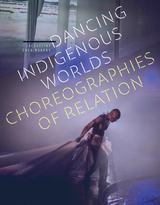 Dancing Indigenous Worlds: Choreographies of Relation
Jacqueline Shea Murphy
University of Minnesota Press, 2023 The vital role of dance in enacting the embodied experiences of Indigenous peoples
In Dancing Indigenous Worlds, Jacqueline Shea Murphy brings contemporary Indigenous dance makers into the spotlight, putting critical dance studies and Indigenous studies in conversation with one another in fresh and exciting new ways. Exploring Indigenous dance from North America and Aotearoa (New Zealand), she shows how dance artists communicate Indigenous ways of being, as well as generate a political force, engaging Indigenous understandings and histories. Following specific dance works over time, Shea Murphy interweaves analysis, personal narrative, and written contributions from multiple dance artists, demonstrating dance’s crucial work in asserting and enacting Indigenous worldviews and the embodied experiences of Indigenous peoples. As Shea Murphy asserts, these dance-making practices can not only disrupt the structures that European colonization feeds upon and strives to maintain, but they can also recalibrate contemporary dance. Based on more than twenty years of relationship building and research, Shea Murphy’s work contributes to growing, and largely underreported, discourses on decolonizing dance studies, and the geopolitical, gendered, racial, and relational meanings that dance theorizes and negotiates. She also includes discussions about the ethics of writing about Indigenous knowledge and peoples as a non-Indigenous scholar, and models approaches for doing so within structures of ongoing reciprocal, respectful, responsible action.
Dancing Into Darkness: Butoh, Zen, and Japan
Sondra Horton Fraleigh
University of Pittsburgh Press, 1999
Dancing Into Darkness is Sondra Horton Fraleigh's chronological diary of her deepening understanding of and appreciation for this art form, as she moves from a position of aesthetic response as an audience member to that of assimilation as a student. As a student of Zen and butoh, Fraleigh witnesses her own artistic and personal transformation through essays, poems, interviews, and reflections spanning twelve years of study, much of it in Japan. Numerous performance photographs and original calligraphy by Fraleigh's Zen teacher Shodo Akane illuminate her words.
The pieces of Dancing Into Darkness cross boundaries, just as butoh anticipates a growing global amalgamation. "Butoh is not an aesthetic movement grafted onto Western dance, " Fraleigh concludes, "and Western dance may be more Eastern than we have been able to see. "
Dancing Ledge
Derek Jarman
University of Minnesota Press, 2010 From his sexual awakening in postwar England to life in the sixties and beyond, Derek Jarman tells his life story with the in-your-face immediacy that became his trademark style in both his films and writing. Accompanied by nearly one hundred photographs of Jarman, his friends, lovers, and inspirations, the candid accounts in Dancing Ledge provide intimate and incredibly vivid glimpses into this iconoclastic filmmaker's life and times.
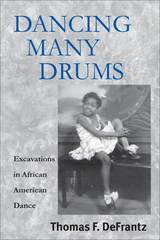 Dancing Many Drums: Excavations In African American Dance
Thomas F. Defrantz
University of Wisconsin Press, 2002 Few will dispute the profound influence that African American music and movement has had in American and world culture. Dancing Many Drums explores that influence through a groundbreaking collection of essays on African American dance history, theory, and practice. In so doing, it reevaluates "black" and "African American " as both racial and dance categories. Abundantly illustrated, the volume includes images of a wide variety of dance forms and performers, from ring shouts, vaudeville, and social dances to professional dance companies and Hollywood movie dancing.
Bringing together issues of race, gender, politics, history, and dance, Dancing Many Drums ranges widely, including discussions of dance instruction songs, the blues aesthetic, and Katherine Dunham’s controversial ballet about lynching, Southland. In addition, there are two photo essays: the first on African dance in New York by noted dance photographer Mansa Mussa, and another on the 1934 "African opera," Kykunkor, or the Witch Woman.
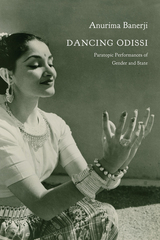 Dancing Odissi: Paratopic Performances of Gender and State
Anurima Banerji
Seagull Books, 2018 Odissi holds iconic status as one of the eight classical dance forms recognized and promoted by the Indian government. This book traces the dance’s transformation from its historical role as a regional artistic practice to its modern incarnation as transnational spectacle, with a focus on the state’s regulation of the dance form and the performances of gender embedded within it. Using an interdisciplinary approach that brings together social history, political theory, and dance and performance studies, the book explores three original themes: the idea of the state as a choreographic agent; the performance of “extraordinary genders,” or those identities and acts that lie outside everyday norms; and the original concept of the “paratopia”—a space of alterity produced by performance. Through an investigation of these themes, the author explores how Odissi has shown the potential to challenge dominant cultural imperatives in India.
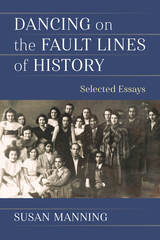 Dancing on the Fault Lines of History: Selected Essays
Susan Manning
University of Michigan Press, 2025 Dancing on the Fault Lines of History collects essential essays by Susan Manning, one of the founders of critical dance studies, recounting her career writing and rewriting the history of modern dance. Three sets of keywords—gender and sexuality, whiteness and Blackness, nationality and globalization—illuminate modern dance histories from multiple angles, coming together in varied combinations, shifting positions from foreground to background. Among the many artists discussed are Isadora Duncan, Vaslav Nijinsky, Ted Shawn, Helen Tamiris, Katherine Dunham, José Limón, Pina Bausch, Reggie Wilson, and Nelisiwe Xaba. Calling for a comparative and transnational historiography, Manning ends with an extended case study of Mary Wigman’s multidimensional exchange with artists from Indonesia, India, China, Korea, and Japan.
Like the artists at the center of her research, Manning’s writing dances on the fault lines of history. Her introduction and annotations to the essays reflect on how and why these keywords became central to her research, revealing the autobiographical resonances of her scholarship as she confronts the cultural politics of the late twentieth and early twenty-first centuries.
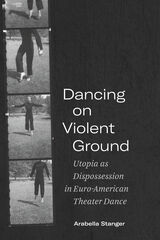 Dancing on Violent Ground: Utopia as Dispossession in Euro-American Theater Dance
Arabella Stanger
Northwestern University Press, 2021 The politics of theater dance is commonly theorized in relation to bodily freedom, resistance, agitation, or repair. This book questions those utopian imaginaries, arguing that the visions and sensations of canonical Euro-American choreographies carry hidden forms of racial violence, not in the sense of the physical or psychological traumas arising in the practice of these arts but through the histories of social domination that materially underwrite them.
Developing a new theory of choreographic space, Arabella Stanger shows how embodied forms of hope promised in ballet and progressive dance modernisms conceal and depend on spatial operations of imperial, colonial, and racial subjection. Stanger unearths dance’s violent ground by interrogating the expansionist fantasies of Marius Petipa’s imperial ballet, settler colonial and corporate land practices in the modern dance of Martha Graham and George Balanchine, reactionary discourses of the human in Rudolf von Laban’s and Oskar Schlemmer’s movement geometries; Merce Cunningham’s experimentalism as a white settler fantasy of the land of the free, and the imperial amnesia of Boris Charmatz’s interventions into metropolitan museums. Drawing on materialist thought, critical race theory, and indigenous studies, Stanger ultimately advocates for dance studies to adopt a position of “critical negativity,” an analytical attitude attuned to how dance’s exuberant modeling of certain forms of life might provide cover for life-negating practices. Bold in its arguments and rigorous in its critique, Dancing on Violent Ground asks how performance scholars can develop a practice of thinking hopefully, without expunging history from their site of analysis.
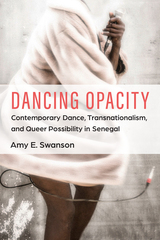 Dancing Opacity: Contemporary Dance, Transnationalism, and Queer Possibility in Senegal
Amy E. Swanson
University of Michigan Press, 2025 Amy Swanson’s Dancing Opacity chronicles the ways in which contemporary dancers in Senegal navigate the global contemporary dance circuit while challenging heteropatriarchal ideologies at home. A longstanding hub of African performing arts, Senegal was at the forefront of the explosion of contemporary dance across the continent at the turn of the twenty-first century. Drawing on ethnographic and historical research, Swanson demonstrates how Senegalese choreographers and dancers contend with entrenched racialized prejudices about Africa outside the continent, while pushing back against repressive regulations of gender and sexuality within Senegal. Swanson employs the concept of opacity, defined as a refusal to adhere to the colonial logic of transparency for dominant gazes and argues that artists create work with multiple layers of meaning that are not meant to be immediately transparent to all viewers. By doing so, these artists evade cultural norms that govern gender and sexual expression in Senegal, while challenging their international audiences to expand their perceptions of African dance. Dancing Opacity highlights the artists’ accounts of their pedagogies, performances, aesthetics, and lived realities, as well as Africanist conceptions of gender, sexuality, and queerness that have yet to be applied to contemporary dance.
The Dancing Other
Suzanne Dracius
Seagull Books The Dancing Other takes readers to France and Martinique to reveal the struggles of people who belong both places, but never quite feel at home in either. Suzanne Dracius tells the story of Rehvana, a woman who feels she is too black to fit in when living in mainland France, yet at the same time not dark-skinned enough to feel truly accepted in the Caribbean. Her sense of dislocation manifests itself at first in a turn to a mythical idea of Mother Africa; later, she moves to Martinique with a new boyfriend and thinks she may have finally found her place—but instead she is soon pregnant, isolated, and lonely. Soon her only reliable companion is her neighbor, Ma Cidalise, who regales her in Creole with supernatural tales of wizards. Rehvana, meanwhile, watches her dream of belonging fade, as she continues to refuse to accept her multicultural heritage.
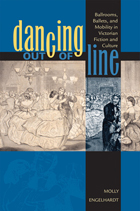 Dancing out of Line: Ballrooms, Ballets, and Mobility in Victorian Fiction and Culture
Molly Engelhardt
Ohio University Press, 2009 Dancing out of Line transports readers back to the 1840s, when the craze for social and stage dancing forced Victorians into a complex relationship with the moving body in its most voluble, volatile form. By partnering cultural discourses with representations of the dance and the dancer in novels such as Jane Eyre, Bleak House, and Daniel Deronda, Molly Engelhardt makes explicit many of the ironies underlying Victorian practices that up to this time have gone unnoticed in critical circles. She analyzes the role of the illustrious dance master, who created and disseminated the manners and moves expected of fashionable society, despite his position as a social outsider of nebulous origins. She describes how the daughters of the social elite were expected to “come out” to society in the ballroom, the most potent space in the cultural imagination for licentious behavior and temptation. These incongruities generated new, progressive ideas about the body, subjectivity, sexuality, and health. Engelhardt challenges our assumptions about Victorian sensibilities and attitudes toward the sexual/social roles of men and women by bringing together historical voices from various fields to demonstrate the versatility of the dance, not only as a social practice but also as a forum for Victorians to engage in debate about the body and its pleasures and pathologies.
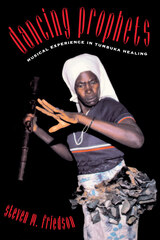 Dancing Prophets: Musical Experience in Tumbuka Healing
Steven M. Friedson
University of Chicago Press, 1996 For the Tumbuka people of Malawi, traditional medical practices are saturated with music. In this groundbreaking ethnography, Steven M. Friedson explores a health care system populated by dancing prophets, singing patients, and drummed spirits.
Tumbuka healers diagnose diseases by enacting divination trances in which they "see" the causes of past events and their consequences for patients. Music is the structural nexus where healer, patient, and spirit meet—it is the energizing heat that fuels the trance, transforming both the bodily and social functioning of the individual. Friedson shows how the sound of the ng'oma drum, the clapping of the choir, call-and-response singing, and the jangle of tin belts and iron anklets do not simply accompany other more important ritual activities—they are the very substance of a sacred clinical reality.
This novel look at the relation between music and mental and biological health will interest medical anthropologists, Africanists, and religious scholars as well as ethnomusicologists.
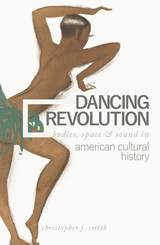 Dancing Revolution: Bodies, Space, and Sound in American Cultural History
Christopher J. Smith
University of Illinois Press, 2019 Throughout American history, patterns of political intent and impact have linked the wide range of dance movements performed in public places. Groups diverse in their cultural or political identities, or in both, long ago seized on street dancing, marches, open-air revival meetings, and theaters, as well as in dance halls and nightclubs, as a tool for contesting, constructing, or reinventing the social order. Dancing Revolution presents richly diverse case studies to illuminate these patterns of movement and influence in movement and sound in the history of American public life. Christopher J. Smith spans centuries, geographies, and cultural identities as he delves into a wide range of historical moments. These include the God-intoxicated public demonstrations of Shakers and Ghost Dancers in the First and Second Great Awakenings; creolized antebellum dance in cities from New Orleans to Bristol; the modernism and racial integration that imbued twentieth-century African American popular dance; the revolutionary connotations behind images of dance from Josephine Baker to the Marx Brothers; and public movement's contributions to hip hop, antihegemonic protest, and other contemporary transgressive communities’ physical expressions of dissent and solidarity. Multidisciplinary and wide-ranging, Dancing Revolution examines how Americans turned the rhythms of history into the movement behind the movements.
Dancing Spirit, Love, and War: Performing the Translocal Realities of Contemporary Fiji
Evadne Kelly
University of Wisconsin Press, 2022 Meke, a traditional rhythmic dance accompanied by singing, signifies an important piece of identity for Fijians. Despite its complicated history of colonialism, racism, censorship, and religious conflict, meke remained a vital part of artistic expression and culture. Evadne Kelly performs close readings of the dance in relation to an evolving landscape, following the postcolonial reclamation that provided dancers with political agency and a strong sense of community that connected and fractured Fijians worldwide.
Through extensive archival and ethnographic fieldwork in both Fiji and Canada, Kelly offers key insights into an underrepresented dance form, region, and culture. Her perceptive analysis of meke will be of interest in dance studies, postcolonial and Indigenous studies, anthropology and performance ethnography, and Pacific Island studies.
 Dancing the Dharma: Religious and Political Allegory in Japanese Noh Theater
Susan Blakeley Klein
Harvard University Press, 2021 Dancing the Dharma examines the theory and practice of allegory by exploring a select group of medieval Japanese noh plays and treatises. Susan Blakeley Klein demonstrates how medieval esoteric commentaries on the tenth-century poem-tale Ise monogatari (Tales of Ise) and the first imperial waka poetry anthology Kokin wakashū influenced the plots, characters, imagery, and rhetorical structure of seven plays (Maiguruma, Kuzu no hakama, Unrin’in, Oshio, Kakitsubata, Ominameshi, and Haku Rakuten) and two treatises (Zeami’s Rikugi and Zenchiku’s Meishukushū). In so doing, she shows that it was precisely the allegorical mode—vital to medieval Japanese culture as a whole—that enabled the complex layering of character and poetic landscape we typically associate with noh. Klein argues that understanding noh’s allegorical structure and paying attention to the localized historical context for individual plays are key to recovering their original function as political and religious allegories. Now viewed in the context of contemporaneous beliefs and practices of the medieval period, noh plays take on a greater range and depth of meaning and offer new insights to readers today into medieval Japan.
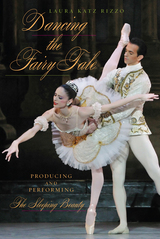 Dancing the Fairy Tale: Producing and Performing The Sleeping Beauty
Laura Katz Rizzo
Temple University Press, 2015 In Dancing the Fairy Tale, Laura Katz Rizzo claims that The Sleeping Beauty is both a metaphor for ballet itself, and a powerful case study for examining ballet and its production and performance. Using Marius Petipa and Pyotr Tchaikovsky's classical dance--specifically as it was staged in Philadelphia over nearly 70 years--Katz Rizzo looks at the gendered nature of women staging, coaching, and reanimating this magnificent ballet, and well as the ongoing push-pull between tradition and innovation within the art form.
Using extensive archival research, dance analysis, and American feminist theory, Dancing the Fairy Tale places women at the center of a historical narrative to reveal how the production and performance of The Sleeping Beauty in the years between 1937 and 2002 made significant contributions to the development and establishment of an American classical ballet. Katz Rizzo highlights not only what women have done not only behind the scenes, as administrators, producers, or directors of ballet companies and schools, but also as active interpreters embodying the ballet's title role.
In the process, Katz Rizzo also emphasizes the importance of regional sites outside of locations traditionally understood as central to the development of ballet in the United States.
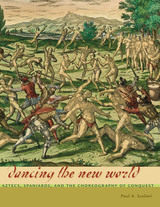 Dancing the New World: Aztecs, Spaniards, and the Choreography of Conquest
By Paul A. Scolieri
University of Texas Press, 2013 Winner, Oscar G. Brockett Book Prize in Dance Research, 2014
Honorable Mention, Sally Banes Publication Prize, American Society for Theatre Research, 2014
de la Torre Bueno® Special Citation, Society of Dance History Scholars, 2013 From Christopher Columbus to “first anthropologist” Friar Bernardino de Sahagún, fifteenth- and sixteenth-century explorers, conquistadors, clerics, scientists, and travelers wrote about the “Indian” dances they encountered throughout the New World. This was especially true of Spanish missionaries who intensively studied and documented native dances in an attempt to identify and eradicate the “idolatrous” behaviors of the Aztec, the largest indigenous empire in Mesoamerica at the time of its European discovery. Dancing the New World traces the transformation of the Aztec empire into a Spanish colony through written and visual representations of dance in colonial discourse—the vast constellation of chronicles, histories, letters, and travel books by Europeans in and about the New World. Scolieri analyzes how the chroniclers used the Indian dancing body to represent their own experiences of wonder and terror in the New World, as well as to justify, lament, and/or deny their role in its political, spiritual, and physical conquest. He also reveals that Spaniards and Aztecs shared an understanding that dance played an important role in the formation, maintenance, and representation of imperial power, and describes how Spaniards compelled Indians to perform dances that dramatized their own conquest, thereby transforming them into colonial subjects. Scolieri’s pathfinding analysis of the vast colonial “dance archive” conclusively demonstrates that dance played a crucial role in one of the defining moments in modern history—the European colonization of the Americas.
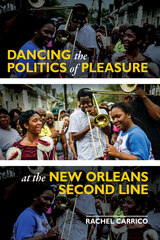 Dancing the Politics of Pleasure at the New Orleans Second Line
Rachel Carrico
University of Illinois Press, 2024 On many Sundays, Black New Orleanians dance through city streets in Second Lines. These processions invite would-be spectators to join in, grooving to an ambulatory brass band for several hours. Though an increasingly popular attraction for tourists, parading provides the second liners themselves with a potent public expression of Black resistance. Rachel Carrico examines the parading bodies in motion as a form of negotiating and understanding power. Seeing pleasure as a bodily experience, Carrico reveals how second liners’ moves link joy and liberation, self and communal identities, play and dissent, and reclamations of place. As she shows, dancers’ choices allow them to access the pleasure of reclaiming self and city through motion and rhythm while expanding a sense of the possible in the present and for the future. In-depth and empathetic, Dancing the Politics of Pleasure at the New Orleans Second Line blends analysis with a chorus of Black voices to reveal an indelible facet of Black culture in the Crescent City.
Dancing to a Black Man's Tune: A Life of Scott Joplin
Susan Curtis
University of Missouri Press, 1994 By using Scott Joplin's life as a window onto American social and cultural development at the turn of the century, this biography dramatizes the role of one brilliant African American musician in defining the culture of a still-young nation.
 Dancing to Transform: How Concert Dance Becomes Religious in American Christianity
Emily Wright
Intellect Books, 2020 In response to a scarcity of writings on the intersections between dance and Christianity, Dancing to Transform examines the religious lives of American Christians who, despite the historically tenuous place of dance within Christianity, are also professional dancers.
Through a multi-site study of four professional dance companies, Wright conducted participant-observations and ethnographic interviews with artistic directors, choreographers, and company members who self-identify as Christian. She then analyzed choreography from each company to determine how concert dance becomes religious and what effects danced religious practices have for these participants. Her research reveals that the participants turn what they perceive as secular professional dance into different kinds of religious practices in order to actualize individual and communal religious identities—they dance to transform.
The Dancing Universe: From Creation Myths to the Big Bang
Marcelo Gleiser
Dartmouth College Press, 2005 Marcelo Gleiser refutes the notion that science and spirituality are irreconcilable. In The Dancing Universe, he traces mystical, philosophical, and scientific ideas about the cosmos through the past twenty-five centuries, from the ancient creation myths of numerous cultures to contemporary theories about an ever-expanding universe. He also explores the lives and ideas of history’s greatest scientists, including Copernicus, Galileo, Kepler, Newton, and Einstein. By exploring how scientists have unlocked the secrets of gravity, matter, time, and space, Gleiser offers fresh perspective on the debate between science and faith.
 Dancing Wisdom: Embodied Knowledge in Haitian Vodou, Cuban Yoruba, and Bahian Candomblé
Yvonne Daniel
University of Illinois Press, 2005 Concentrating on the Caribbean Basin and the coastal area of northeast South America, Yvonne Daniel considers three African-derived religious systems that rely heavily on dance behavior–-Haitian Vodou, Cuban Yoruba, and Bahamian Candomblé.
Combining her background in dance and anthropology to parallel the participant/scholar dichotomy inherent to dancing's "embodied knowledge," Daniel examines these misunderstood and oppressed performative dances in terms of physiology, psychology, philosophy, mathematics, ethics, and aesthetics.
"Dancing Wisdom offers the rare opportunity to see into the world of mystical spiritual belief as articulated and manifested in ritual by dance. Whether it is a Cuban Yoruba dance ritual, slave Ring Shout or contemporary Pentecostal Holy Ghost possession dancing shout, we are able to understand the relationship with spirit through dancing with the Divine. Yvonne Daniel's work synthesizes the cognitive empirical objectivity of an anthropologist with the passionate storytelling of a poetic artist in articulating how dance becomes prayer in ritual for Africans of the Diaspora."
--Leon T. Burrows, Protestant Chaplain, Smith College’
 Dancing with Parkinson's
Sara Houston
Intellect Books, 2019 This book explores the experience and value of dancing for people living with the neurodegenerative disorder Parkinson’s disease. Linking aesthetic values to wellbeing, Sara Houston articulates the importance of the dancing experience for those with Parkinson’s, and argues that the benefits of participatory dance are best understood through the experiences, lives, needs, and challenges of people living with Parkinson’s who have chosen to dance.
Presenting personal narratives from a study that investigates the experience of people with Parkinson’s who dance, intertwined with the social and political contexts in which the dancers live, this volume examines the personal and systemic issues as well as the attitudes and identities that shape people’s relationship to dance. Taking this new primary research as a starting point, Dancing with Parkinson’s builds an argument for how dance becomes a way of helping people live well with Parkinson’s.
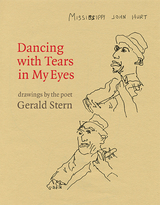 Dancing with Tears in My Eyes
Gerald Stern
University of Iowa Press, 2014 For decades one of our most honored and beloved poets, Gerald Stern is also, it turns out, a prolific doodler. Sometimes charming, sometimes scathing, sometimes both, the odd little figures and scenes here are reproduced from drawings on napkins, hotel stationary, and the margins of what seem to be lecture handouts. These are remarkable expressions of a quirky world and a clear vision.
Long recognized as one of the most original poets in America, Stern is known for his tragi-comic, irascible vision that has been vividly rendered in hundreds of poems. All along, he has also been drafting these whimsical sketches. The Thurber-esque drawings represented here are daft, graphic expressions of Stern’s fearless and shameless sense of self.
In addition to expressing a forgiving and cavalier attitude toward aging, these saucy drawings, until now a well-kept secret of Stern’s creative life, capture something essential about his character. By turns profane and playfully romantic, they are another expression of the cutting wit and inimitable charm of Gerald Stern.
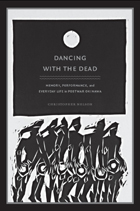 Dancing with the Dead: Memory, Performance, and Everyday Life in Postwar Okinawa
Christopher T. Nelson
Duke University Press, 2008 Challenging conventional understandings of time and memory, Christopher T. Nelson examines how contemporary Okinawans have contested, appropriated, and transformed the burdens and possibilities of the past. Nelson explores the work of a circle of Okinawan storytellers, ethnographers, musicians, and dancers deeply engaged with the legacies of a brutal Japanese colonial era, the almost unimaginable devastation of the Pacific War, and a long American military occupation that still casts its shadow over the islands. The ethnographic research that Nelson conducted in Okinawa in the late 1990s—and his broader effort to understand Okinawans’ critical and creative struggles—was inspired by his first visit to the islands in 1985 as a lieutenant in the U.S. Marine Corps.
Nelson analyzes the practices of specific performers, showing how memories are recalled, bodies remade, and actions rethought as Okinawans work through fragments of the past in order to reconstruct the fabric of everyday life. Artists such as the popular Okinawan actor and storyteller Fujiki Hayato weave together genres including Japanese stand-up comedy, Okinawan celebratory rituals, and ethnographic studies of war memory, encouraging their audiences to imagine other ways to live in the modern world. Nelson looks at the efforts of performers and activists to wrest the Okinawan past from romantic representations of idyllic rural life in the Japanese media and reactionary appropriations of traditional values by conservative politicians. In his consideration of eisā, the traditional dance for the dead, Nelson finds a practice that reaches beyond the expected boundaries of mourning and commemoration, as the living and the dead come together to create a moment in which a new world might be built from the ruins of the old.
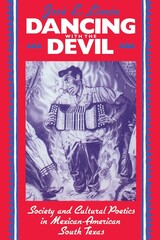 Dancing with the Devil: Society and Cultural Poetics in Mexican-American South Texas
Jose Limon
University of Wisconsin Press, 1994 Combining shrewd applications of current cultural theory with compelling autobiography and elegant prose, José E. Limón works at the intersection of anthropology, folklore, popular culture, history, and literary criticism. A native of South Texas, he renders a historical and ethnographic account of its rich Mexican-American folk culture. This folk culture, he shows—whether expressed through male joking rituals, ballroom polka dances, folk healing, or eating and drinking traditions—metaphorically dances with the devil, both resisting and accommodating the dominant culture of Texas.
Critiquing the work of his precursors— John Gregory Bourke, J. Frank Dobie, Jovita Gonzalez, and Americo Paredes—Limón deftly demonstrates that their accounts of Mexican-Americans in South Texas contain race, class, and gender contradictions, revealed most clearly in their accounts of the folkloric figure of the devil. Limón's own field-based ethnography follows, and again the devil appears as a recurrent motif, signaling the ideological contradictions of folk practices in a South Texas on the verge of postmodernity.
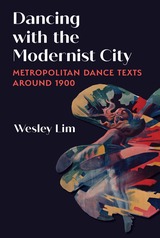 Dancing with the Modernist City: Metropolitan Dance Texts around 1900
Wesley Lim
University of Michigan Press, 2024 As the 20th century dawned, authors, artists, and filmmakers flocked to cities like Paris and Berlin for a chance to experience a bustling urban life and engage with other artists and intellectuals. Among them were German-speaking authors and filmmakers such as Harry Graf Kessler, Rainer Maria Rilke, August Endell, Alfred Döblin, Else Lasker-Schüler, Segundo de Chomón, and the brothers Max and Emil Skladanowsky. In their writing and artistic work from that period, they depicted the perpetual influx of stimuli caused by urban life—including hordes of pedestrians, bustling traffic, and a barrage of advertisements—as well as how these encounters repeatedly paralleled their experiences of watching early twentieth-century dance performances by Loïe Fuller, Ruth St. Denis, and Vaslav Nijinsky. The convergence these writers and filmmakers saw between the unexpected encounters during their urban strolls and experimental dance performances led to writings that interwove the two motifs.
Drawing on cultural, literary, dance, performance, and queer studies, Dancing with the Modernist City analyzes an array of material from 1896 to 1914—essays, novels, short stories, poetry, newspaper articles, photographs, posters, drawings, and early film. It argues that these writers and artists created a genre called the metropolitan dance text, which depicts dancing figures not on a traditional stage, but with the streets, advertising pillars, theaters, cafes, squares, and even hospitals of an urban setting. Breaking away from the historically male, heteronormative view, this posthumanist mode of writing highlights the visual and episodic unexpectedness of urban encounters. These literary depictions question traditional conceptualizations of space and performance by making the protagonist and the reader feel like they embody the dancer and the movement. In doing so, they upset the conventional depictions of performance and urban spaces in ways paralleling modern dance.
 Dancing with the Zapatistas
Diana Taylor and Lorie Novak, editors
Duke University Press Dancing with the Zapatistas brings together scholars, artists, journalists, and activists to respond to the continuing work of the Zapatistas twenty years after their insurrection in 1994. Available online, this open access multimedia digital book includes essays, photo essays, interviews, and spoken word and theatrical performances that offer insights into the workings of the Zapatista Council on Good Government; the murals in the Caracoles; the Escuelita; Subcomandante Marcos; and Zapatista music and celebrations. An exceptionally rich visual resource, this book discusses how Zapatista and Mayan thought permeate the daily life of the Zapatistas, from the way in which their languages configure collective identity to how music affirms the Zapatistas' conception of history. Ultimately, Dancing with the Zapatistas considers how the Zapatistas work with those outside their movement while covering how they have influenced the practices of activists and artists around the globe. Contributors: Brian Batchelor, Henry Castillo, Elvira Colorado, Hortencia Colorado, María Luisa de la Garza, Ricardo Dominguez, Jennifer Flores Sternad Ponce de León, Guillermo Gómez-Peña, Marta Molina, Lorie Novak, Julio Pantoja, Claudia Isabel Serrano Otero, Jacques Servin (a.k.a. Andy Bichlbaum), Alexei Taylor, Diana Taylor, Luis Vargas-Santiago, Moysés Zuñiga Published in collaboration with the Hemispheric Institute of Performance and Politics at New York University
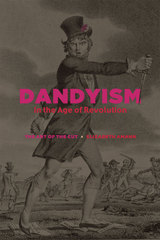 Dandyism in the Age of Revolution: The Art of the Cut
Elizabeth Amann
University of Chicago Press, 2014 From the color of a politician’s tie, to exorbitantly costly haircuts, to the size of an American flag pin adorning a lapel, it’s no secret that style has political meaning. And there was no time in history when the politics of fashion was more fraught than during the French Revolution. In the 1790s almost any article of clothing could be scrutinized for evidence of one’s political affiliation. A waistcoat with seventeen buttons, for example, could be a sign of counterrevolution—a reference to Louis XVII—and earn its wearer a trip to the guillotine.
In Dandyism in the Age of Revolution, Elizabeth Amann shows that in France, England, and Spain, daring dress became a way of taking a stance toward the social and political upheaval of the period. France is the centerpiece of the story, not just because of the significance of the Revolution but also because of the speed with which its politics and fashions shifted. Dandyism in France represented an attempt to recover a political center after the extremism of the Terror, while in England and Spain it offered a way to reflect upon the turmoil across the Channel and Pyrenees. From the Hair Powder Act, which required users of the product to purchase a permit, to the political implications of the feather in Yankee Doodle’s hat, Amann aims to revise our understanding of the origins of modern dandyism and to recover the political context from which it emerged.
Dane County Place-Names
Frederic G. Cassidy; New introduction by Tracy Will; New foreword by David Medaris
University of Wisconsin Press, 2009 Dane County Place-Names is an entertaining record of the heritage of Dane County, Wisconsin’s capital region, from its earliest days through the 1940s. This classic work by the late lexicographer Frederic G. Cassidy is back in print for new generations to enjoy. Cassidy applied his insightful eye to the origins and evolution of local names that reveal a colorful history: Whiskey Creek, Brag Hollow, Marxville, Pancake Valley, Halunkenburg, Skunk Hollow, and Tipple School. This edition features a new introduction by local historian Tracy Will and a foreword by Isthmus journalist David Medaris.
Danes and Icelanders in Michigan
Howard L. Nicholson
Michigan State University Press, 2013 Immigration of Danes and Icelanders to Michigan began in the 1850s and continued well into the twentieth century. Beginning with their origins, this book takes a detailed look at their arrival and settlement in Michigan, answering some key questions: What brought Danes and Icelanders to Michigan? What challenges did they face? How did they adjust and survive here? Where did they settle? What kind of lasting impact have they had on Michigan’s economic and cultural landscape? Extensively researched, this book examines the public and private lives of Danish and Icelandic immigrants in Michigan, drawing from both individual and institutional histories. Shedding new light on the livelihood, traditions, religion, social life, civic organizations, and mutual benefit societies, this thorough, insightful book highlights a small but important population within Michigan’s borders.
Danes in Wisconsin: Revised and Expanded Edition
Frederick Hale
Wisconsin Historical Society Press, 2005 Wisconsin Territory's first Dane arrived in 1829, and by 1860 the state's Danish-born population had reached 1,150. Yet these newcomers remained only a small segment of Wisconsin's increasingly complex cultural mosaic, and the challenges of adapting to life in this new land shaped the Danish experience in the state. In this popular book, now revised and expanded with additional historical photos and documents, Frederick Hale offers a concise introduction to Wisconsin's Danish settlers, exploring their reasons for leaving their homeland, describing their difficult journeys, and examining their adjustments to life on Wisconsin soil. New to this edition are the selected letters of Danish immigrant Andrew Frederickson. These compelling documents, written over a 40-year span, capture the personal observations of one Dane as he made a new life in Wisconsin.
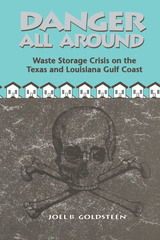 Danger All Around: Waste Storage Crisis on the Texas and Louisiana Gulf Coast
By Joel B. Goldsteen
University of Texas Press, 1993 The problem of where to store waste has grabbed a lot of headlines, but people have been slow to realize that the environmental damage caused by storage sites is an even greater menace. This book makes the danger clear, as Joel Goldsteen offers the first comprehensive look at the selection and environmental impact of municipal and petrochemical waste storage sites along the Texas and Louisiana coasts. Goldsteen has distilled a large landfill-worth of data into a highly readable account of the creation and regulation of waste disposal sites, the health issues that surround them, and the human and natural factors that affect how safe or dangerous they become. Chapters that describe industrial development along the Gulf Coast and the concurrent challenges of wastewater treatment, solid waste management, and hazardous waste control are followed by in-depth descriptions of nine Texas and four Louisiana sites, all representative of problems far beyond the Texas-Louisiana coast.
Danger Cave: Anthropological Papers Number 27
Jesse D Jennings
University of Utah Press, 1999 DANGER CAVE and HOGUP CAVE were milestones in Great Basin archaeological studies. Available again, these volumes explore Danger and Hogup caves, sites that though they are located about sixty miles apart in the Great Salt Lake Desert, are nevertheless archaeologically related. Containing fill dating from approximately 6,400 BC through historic times, the data from both caves present insights into the lifeways of successive peoples who, over thousands of years, adapted to changes in the desert environment. The result of well-controlled excavation methods done under difficult and demanding circumstances, both of these books include thorough scientific analysis of cultural materials and environmental data making them both essential studies of the Deseret West in New World prehistory.
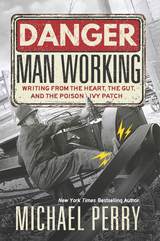 Danger, Man Working: Writing from the Heart, the Gut, and the Poison Ivy Patch
Arenas
Wisconsin Historical Society Press, 2017 "Every writer has advice for aspiring writers. Mine is predicated on formative years spent cleaning my father’s calf pens: Just keep shoveling until you’ve got a pile so big, someone has to notice. The fact that I cast my life’s work as slung manure simply proves that I recognize an apt metaphor when I accidentally stick it with a pitchfork. . . . Poetry was my first love, my gateway drug—still the poets are my favorites—but I quickly realized I lacked the chops or insights to survive on verse alone. But I wanted to write. Every day. And so I read everything I could about freelancing, and started shoveling."
The pieces gathered within this book draw on fifteen years of what Michael Perry calls "shovel time"—a writer going to work as the work is offered. The range of subjects is wide, from musky fishing, puking, and mountain-climbing Iraq War veterans to the frozen head of Ted Williams. Some assignments lead to self-examination of an alarming magnitude (as Perry notes, "It quickly becomes obvious that I am a self-absorbed hypochondriac forever resolving to do better nutritionally and fitness-wise but my follow-through is laughable.") But his favorites are those that allow him to turn the lens outward: "My greatest privilege," he says, "lies not in telling my own story; it lies in being trusted to tell the story of another."
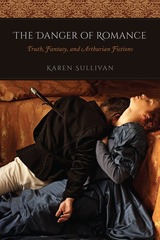 The Danger of Romance: Truth, Fantasy, and Arthurian Fictions
Karen Sullivan
University of Chicago Press, 2018 The curious paradox of romance is that, throughout its history, this genre has been dismissed as trivial and unintellectual, yet people have never ceased to flock to it with enthusiasm and even fervor. In contemporary contexts, we devour popular romance and fantasy novels like The Lord of the Rings, Harry Potter, and Game of Thrones, reference them in conversations, and create online communities to expound, passionately and intelligently, upon their characters and worlds. But romance is “unrealistic,” critics say, doing readers a disservice by not accurately representing human experiences. It is considered by some to be a distraction from real literature, a distraction from real life, and little more.
Yet is it possible that romance is expressing a truth—and a truth unrecognized by realist genres? The Arthurian literature of the Middle Ages, Karen Sullivan argues, consistently ventriloquizes in its pages the criticisms that were being made of romance at the time, and implicitly defends itself against those criticisms. The Danger of Romance shows that the conviction that ordinary reality is the only reality is itself an assumption, and one that can blind those who hold it to the extraordinary phenomena that exist around them. It demonstrates that that which is rare, ephemeral, and inexplicable is no less real than that which is commonplace, long-lasting, and easily accounted for. If romance continues to appeal to audiences today, whether in its Arthurian prototype or in its more recent incarnations, it is because it confirms the perception—or even the hope—of a beauty and truth in the world that realist genres deny.
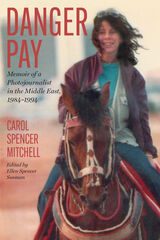 Danger Pay: Memoir of a Photojournalist in the Middle East, 1984-1994
By Carol Spencer Mitchell
University of Texas Press, 2008 An engrossing memoir in which a photojournalist records both the precursors to today’s conflicts in the Middle East and her own deeply felt conviction that news coverage of the region actually increases the conflicts there. "You're going where?" Carol Spencer Mitchell's father demanded as she set off in 1984 to cover the Middle East as a photojournalist for Newsweek and other publications. In this intensely thoughtful memoir, Spencer Mitchell probes the motivations that impelled her—a single Jewish woman—to document the turmoil roiling the Arab world in the 1980s and 1990s, as well as how her experiences as a photojournalist compelled her to set aside her cameras and reexamine the way images are created, scenes are framed, and "real life" is packaged for specific news stories. In Danger Pay, Spencer Mitchell takes us on a harrowing journey to PLO military training camps for Palestinian children and to refugee camps in the Gaza Strip before, during, and after the first intifada. Through her eyes, we experience the media frenzy surrounding the 1985 hijackings of TWA Flight #847 and the Italian cruise liner Achille Lauro. We meet Middle Eastern leaders, in particular Yasser Arafat and King Hussein of Jordan, with whom Spencer Mitchell developed close working relationships. And we witness Spencer Mitchell's growing conviction that the Western media's portrayal of conflicts in the Middle East actually helps to fuel those conflicts—a conviction that eventually, as she says, "shattered [her] career." Although the events that Spencer Mitchell records took place decades ago, their repercussions reverberate in the MIddle Eastern conflicts of today. Likewise, her concern about "the triumph of image over reality" takes on greater urgency as our knowledge of the world becomes ever more filtered by virtual media.
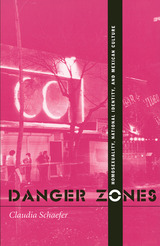 Danger Zones: Homosexuality, National Identity, and Mexican Culture
Claudia Schaefer
University of Arizona Press, 1996 Homosexuality has appeared as a secondary theme in the fictional works of numerous mainstream writers in contemporary Mexico. Here, the author deals with issues of gender identity when they emerge as metaphorical red flags signaling cultural danger zones along the path to harmonious national discourse. By focusing on the representation of homosexuality in a variety of texts produced between 1964 and 1994, the book also delineates complex relationships within Mexican society.
Contents:
1. El diario de José Toledo: The Fantasies of a Middle-Class Bureaucrat
2. The Power of Subversive Imagination: Utopian Discourse in the Novels of Luis Zapata and José Rafael Calva
3. On the Cutting Edge: El jinete azul and the Aesthetics of the Abyss
4. Monobodies, Antibodies, and the Body Politic: Sara Levi Calderón’s Dos mujeres
5. Just Another Material Girl? La hermana secreta de Angélica María and the Seduction of the Popular
6. From "Infernal Realms of Delinquency" to Cozy Cabañas in Cuernavaca: José Joaquín Blanco’s Visions of Homosexuality
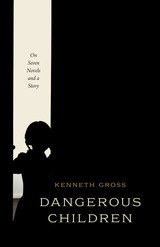 Dangerous Children: On Seven Novels and a Story
Kenneth Gross
University of Chicago Press, 2022 Gross explores our complex fascination with uncanny children in works of fiction.
Ranging from Victorian to modern works—Lewis Carroll’s Alice in Wonderland, Carlo Collodi’s Pinocchio, Henry James’s What Maisie Knew, J. M. Barrie’s Peter and Wendy, Franz Kafka’s “The Cares of a Family Man,” Richard Hughes’s A High Wind in Jamaica, Elizabeth Bowen’s The Death of the Heart, and Vladimir Nabokov’s Lolita—Kenneth Gross’s book delves into stories that center around the figure of a strange and dangerous child.
Whether written for adults or child readers, or both at once, these stories all show us odd, even frightening visions of innocence. We see these children’s uncanny powers of speech, knowledge, and play, as well as their nonsense and violence. And, in the tales, these child-lives keep changing shape. These are children who are often endangered as much as dangerous, haunted as well as haunting. They speak for lost and unknown childhoods. In looking at these narratives, Gross traces the reader’s thrill of companionship with these unpredictable, often solitary creatures—children curious about the adult world, who while not accommodating its rules, fall into ever more troubling conversations with adult fears and desires. This book asks how such imaginary children, objects of wonder, challenge our ways of seeing the world, our measures of innocence and experience, and our understanding of time and memory.
 The Dangerous Class: Crime and Poverty in Columbus, Ohio, 1860–1885
Eric H. Monkkonen
Harvard University Press, 1975 That the city and the factory cause crime and poverty has become an operative assumption for most Americans. This book is a study of an inarticulate group of people whose defining characteristic is the behavior that got them into criminal court or the poorhouse. Nineteenth-century observers tended to group criminals together with poor people into what Charles Loring Brace called “the dangerous class.” The question asked in this book is whether urbanization and industrialization, the two most central social processes in nineteenth-century American history, caused poverty and crime.
Using seldom consulted records of poorhouses and criminal courts, the author shows that the kinds of crime and the structure of crime changed, with very few paupers becoming criminals. Cities and industry affected the quality but not the quantity of crime and impoverishment. Overall no dramatic crime trends are discerned and major crimes were ubiquitous in rural and urban areas. Furthermore, the criminal class declined as Columbus grew and industrialized.
An important work in the new social history, Eric Monkkonen’s research modifies theories that the city drives its inhabitants into deviance and that status and stability inhered in the skilled occupations. He also lends clarity to the views about what kinds of criminal incidents represent pre-political rebellion.
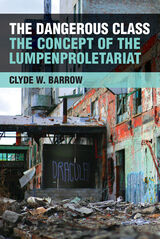 The Dangerous Class: The Concept of the Lumpenproletariat
Clyde W. Barrow
University of Michigan Press, 2020 Marx and Engels’ concept of the “lumpenproletariat,” or underclass (an anglicized, politically neutral term), appears in The Communist Manifesto and other writings. It refers to “the dangerous class, the social scum, that passively rotting mass thrown off by the lowest layers of old society,” whose lowly status made its residents potential tools of the capitalists against the working class. Surprisingly, no one has made a substantial study of the lumpenproletariat in Marxist thought until now. Clyde Barrow argues that recent discussions about the downward spiral of the American white working class (“its main problem is that it is not working”) have reactivated the concept of the lumpenproletariat, despite long held belief that it is a term so ill-defined as not to be theoretical. Using techniques from etymology, lexicology, and translation, Barrow brings analytical coherence to the concept of the lumpenproletariat, revealing it to be an inherent component of Marx and Engels’ analysis of the historical origins of capitalism. However, a proletariat that is destined to decay into an underclass may pose insurmountable obstacles to a theory of revolutionary agency in post-industrial capitalism. Barrow thus updates historical discussions of the lumpenproletariat in the context of contemporary American politics and suggests that all post-industrial capitalist societies now confront the choice between communism and dystopia.
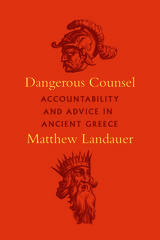 Dangerous Counsel: Accountability and Advice in Ancient Greece
Matthew Landauer
University of Chicago Press, 2019 We often talk loosely of the “tyranny of the majority” as a threat to the workings of democracy. But, in ancient Greece, the analogy of demos and tyrant was no mere metaphor, nor a simple reflection of elite prejudice. Instead, it highlighted an important structural feature of Athenian democracy. Like the tyrant, the Athenian demos was an unaccountable political actor with the power to hold its subordinates to account. And like the tyrant, the demos could be dangerous to counsel since the orator speaking before the assembled demos was accountable for the advice he gave.
With Dangerous Counsel, Matthew Landauer analyzes the sometimes ferocious and unpredictable politics of accountability in ancient Greece and offers novel readings of ancient history, philosophy, rhetoric, and drama. In comparing the demos to a tyrant, thinkers such as Herodotus, Plato, Isocrates, and Aristophanes were attempting to work out a theory of the badness of unaccountable power; to understand the basic logic of accountability and why it is difficult to get right; and to explore the ways in which political discourse is profoundly shaped by institutions and power relationships. In the process they created strikingly portable theories of counsel and accountability that traveled across political regime types and remain relevant to our contemporary political dilemmas.
 Dangerous Dames: Women and Representation in Film Noir and the Weimar Street Film
Jans B. Wager
Ohio University Press, 1999 Both film noir and the Weimar street film hold a continuing fascination for film spectators and film theorists alike. The female characters, especially the alluring femmes fatales, remain a focus for critical and popular attention. In the tradition of such attention, Dangerous Dames focuses on the femme fatale and her antithesis, the femme attrapée. Unlike most theorists, Jans Wager examines these archetypes from the perspective of the female spectator and rejects the persistence of vision that allows a reading of these female characters only as representations of unstable postwar masculinity. Professor Wager suggests that the woman in the audience has always seen and understood these characters as representations of a complex aspect of her existence. Dangerous Dames looks at the Weimar street films The Street, Variety, Asphalt, and M and the film noir movies The Maltese Falcon, Gun Crazy, and The Big Heat. This book opens the doors to spectators and theorists alike, suggesting cinematic pleasures outside the bounds of accepted readings and beyond the narrow categorization of film noir and the Weimar street film as masculine forms.
Dangerous Diagnostics: The Social Power of Biological Information
Dorothy Nelkin and Laurence Tancredi
University of Chicago Press, 1994 Dangerous Diagnostics is a powerful study of the pervasiveness of diagnostic testing and the potential it offers institutions to classify, categorize, and ultimately control individuals. Nelkin and Tancredi explore the ethical, social, and legal implications of cutting-edge technologies that can lead to new forms of discrimination in the name of standardized, objective measurements. They caution against the creation of an underclass deemed unemployable, untrainable, or uninsurable by such diagnostic tests.
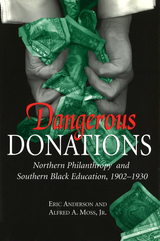 Dangerous Donations: Northern Philanthropy and Southern Black Education, 1902-1930
Eric Anderson & Alfred A. Moss, Jr.
University of Missouri Press, 1999
Eric Anderson and Alfred A. Moss, Jr., offer a new examination of the impact of northern philanthropy on southern black education, giving special attention to the "Ogden movement," the General Education Board, the Rosenwald Fund, and the Episcopal American Church Institute for Negroes. Anderson and Moss present significant reinterpretations of key figures in African American education, including Booker T. Washington, William H. Baldwin, Jr., George Foster Peabody, and Thomas Jesse Jones.
Dangerous Donations explores both the great influence of the philanthropic foundations and the important limitations on their power. White racial radicals were suspicious that the northern agencies sought to undermine the southern system of race relations, "training negroes in the vain hope of social equality with whites." This criticism forced the philanthropists and their agents to move cautiously, seeking white southern cooperation whenever possible. Despite repeated compromises, northern philanthropists maintained a vision of race relations and black potential significantly different from that held by the South’s white majority.
Blacks challenged the foundations, expressing their own educational agendas in a variety of ways, including demands for black teachers, resistance to any distinctive racial curricula, and, in some cases, support for independent black schools. The millions of dollars in self-help philanthropy contributed by African Americans also indicated their refusal to give complete control of their schools to either the white South or distant philanthropists in the North.
No other scholars, according to Louis R. Harlan, "have examined the controversial role of philanthropy with the same coolness, analytical skill, and persistent search for the truth as Eric Anderson and Alfred Moss... [they] have made an outstanding contribution to the history of education for both races in the segregated South of 1900 to 1930."
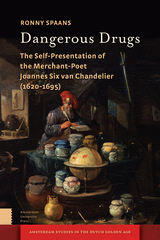 Dangerous Drugs: The Self-Presentation of the Merchant-Poet Joannes Six van Chandelier (1620-1695)
Ronny Spaans
Amsterdam University Press, 2020 In the 17th century, the Dutch Republic was the centre of the world trade in exotic drugs and spices. They were sought after both as medicines, and as luxury objects for the bourgeois class, giving rise to a medical and moral anxiety in the Republic. This ambivalent view on exotic drugs is the theme of the poetry of Joannes Six van Chandelier (1620-1695). Six, who himself ran the drug shop ‘The Gilded Unicorn’ in Amsterdam, addresses a number of exotic medicines in his poems, such as musk, incense, the miracle drug theriac, Egyptian mumia, and even the blood of Charles I of England. In Dangerous Drugs, these texts are studied for the first time. The study shows how Six, through a process of self-presentation as a sober and restrained merchant, but also as a penitent sinner, thirsting for God’s grace, links early modern drug abuse to different desires, such as lust, avarice, pride and curiosity. The book shows also how an early modern debate on exotic drugs contributed to an important shift in early modern natural science, from a drug lore based on mythical and fabulous concepts, to a botany based on observation and systematic examination.
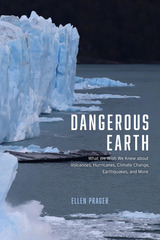 Dangerous Earth: What We Wish We Knew about Volcanoes, Hurricanes, Climate Change, Earthquakes, and More
Ellen Prager
University of Chicago Press, 2020 The Earth is a beautiful and wondrous planet, but also frustratingly complex and, at times, violent: much of what has made it livable can also cause catastrophe. Volcanic eruptions create land and produce fertile, nutrient-rich soil, but they can also bury forests, fields, and entire towns under ash, mud, lava, and debris. The very forces that create and recycle Earth’s crust also spawn destructive earthquakes and tsunamis. Water and wind bring and spread life, but in hurricanes they can leave devastation in their wake. And while it is the planet’s warmth that enables life to thrive, rapidly increasing temperatures are causing sea levels to rise and weather events to become more extreme.
Today, we know more than ever before about the powerful forces that can cause catastrophe, but significant questions remain. Why can’t we better predict some natural disasters? What do scientists know about them already? What do they wish they knew? In Dangerous Earth, marine scientist and science communicator Ellen Prager explores the science of investigating volcanoes, earthquakes, tsunamis, hurricanes, landslides, rip currents, and—maybe the most perilous hazard of all—climate change. Each chapter considers a specific hazard, begins with a game-changing historical event (like the 1980 eruption of Mt. St. Helens or the landfall and impacts of Hurricane Harvey), and highlights what remains unknown about these dynamic phenomena. Along the way, we hear from scientists trying to read Earth’s warning signs, pass its messages along to the rest of us, and prevent catastrophic loss.
A sweeping tour of some of the most awesome forces on our planet—many tragic, yet nonetheless awe-inspiring—Dangerous Earth is an illuminating journey through the undiscovered, unresolved, and in some cases unimagined mysteries that continue to frustrate and fascinate the world’s leading scientists: the “wish-we-knews” that ignite both our curiosity and global change.
Dangerous Exits: Escaping Abusive Relationships in Rural America
DeKeseredy, Walter
Rutgers University Press, 2009 Decade after decade, violence against women has gained more attention from scholars, policy makers, and the general public. Social scientists in particular have contributed significant empirical and theoretical understandings to this issue. Strikingly, scant attention has focused on the victimization of women who want to leave their hostile partners. This groundbreaking work challenges the perception that rural communities are safe havens from the brutality of urban living. Identifying hidden crimes of economic blackmail and psychological mistreatment, and the complex relationship between patriarchy and abuse, Walter S. DeKeseredy and Martin D. Schwartz propose concrete and effective solutions, giving voice to women who have often suffered in silence.
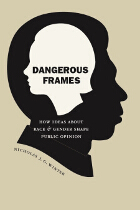 Dangerous Frames: How Ideas about Race and Gender Shape Public Opinion
Nicholas J. G. Winter
University of Chicago Press, 2008 In addition to their obvious roles in American politics, race and gender also work in hidden ways to profoundly influence the way we think—and vote—about a vast array of issues that don’t seem related to either category. As Nicholas Winter reveals in Dangerous Frames, politicians and leaders often frame these seemingly unrelated issues in ways that prime audiences to respond not to the policy at hand but instead to the way its presentation resonates with their deeply held beliefs about race and gender. Winter shows, for example, how official rhetoric about welfare and Social Security has tapped into white Americans’ racial biases to shape their opinions on both issues for the past two decades. Similarly, the way politicians presented health care reform in the 1990s divided Americans along the lines of their attitudes toward gender. Combining cognitive and political psychology with innovative empirical research, Dangerous Frames ultimatelyilluminates the emotional underpinnings of American politics.
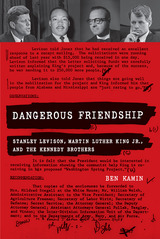 Dangerous Friendship: Stanley Levison, Martin Luther King Jr., and the Kennedy Brothers
Ben Kamin
Michigan State University Press, 2014 The product of long-concealed FBI surveillance documents, Dangerous Friendship chronicles a history of Martin Luther King Jr. that the government kept secret from the public for years. The book reveals the story of Stanley Levison, a well-known figure in the Communist Party–USA, who became one of King’s closest friends and, effectively, his most trusted adviser. Levison, a Jewish attorney and businessman, became King’s pro bono ghostwriter, accountant, fundraiser, and legal adviser. This friendship, however, created many complications for both men. Because of Levison’s former ties to the Communist Party, FBI director J. Edgar Hoover launched an obsessive campaign, wiretapping, tracking, and photographing Levison relentlessly. By association, King was labeled as “a Communist and subversive,” prompting then–attorney general Robert F. Kennedy to authorize secret surveillance of the civil rights leader. It was this effort that revealed King’s sexual philandering and furthered a breakdown of trust between King, Robert F. Kennedy, and eventually President John F. Kennedy. With stunning revelations, this book exposes both the general attitude of the U.S. government toward the privacy rights of American citizens during those difficult years as well as the extent to which King, Levison, and many other freedom workers were hounded by people at the very top of the U.S. security establishment.
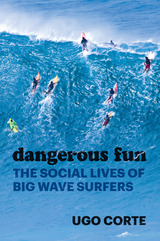 Dangerous Fun: The Social Lives of Big Wave Surfers
Ugo Corte
University of Chicago Press, 2022 A thrilling ethnography of big wave surfing in Hawaii that explores the sociology of fun.
Straight from the beaches of Hawaii comes an exciting new ethnography of a community of big-wave surfers. Oahu’s Waimea Bay attracts the world’s best big wave surfers—men and women who come to test their physical strength, courage, style, knowledge of the water, and love of the ocean. Sociologist Ugo Corte sees their fun as the outcome of social interaction within a community. Both as participant and observer, he examines how mentors, novices, and peers interact to create episodes of collective fun in a dangerous setting; how they push one another’s limits, nourish a lifestyle, advance the sport and, in some cases, make a living based on their passion for the sport.
In Dangerous Fun, Corte traces how surfers earn and maintain a reputation within the field, and how, as innovations are introduced, and as they progress, establish themselves and age, they modify their strategies for maximizing performance and limiting chances of failure.
Corte argues that fun is a social phenomenon, a pathway to solidarity rooted in the delight in actualizing the self within a social world. It is a form of group cohesion achieved through shared participation in risky interactions with uncertain outcomes. Ultimately, Corte provides an understanding of collective effervescence, emotional energy, and the interaction rituals leading to fateful moments—moments of decision that, once made, transform one’s self-concept irrevocably.
 Dangerous Garden: The Quest for Plants to Change Our Lives
David Stuart
Harvard University Press, 2004 As our earliest ancestors migrated out of Africa, they encountered entirely new floras. By sampling these, they found plants that appeared to (and sometimes did) heal wounds, cure maladies, and ease troubled minds. This process of discovery continues today, as multinational pharmaceutical companies bioprospect in the globe's remaining wild places for the next tamoxifen or digitalis.
The gardener and botanist David Stuart tells the fascinating story of botanical medicine, revealing more than soothing balms and heroic cures. Most of the truly powerful and effective medicinal plants are double-edged, with a dark side to balance the light. They can heal or kill, calm or enslave, lift depression or summon our gods and monsters. Often the difference between these polar effects is a simple change in dosage.
Stuart chronicles the tale of how the herbal materia medica of healing and killing plants has sparked wars, helped establish intercontinental trade routes, and seeded fortunes. As plant species traveled the globe, their medicinal uses evolved over miles and through centuries. Plants once believed to be cure-alls are now considered too dangerous for use. Others, once so valuable that they sowed the wealth of empires, are merely spices on the kitchen shelf.
David Stuart recounts engrossing human stories too, not only of the scientists, explorers, and doctors who gathered, named, and prescribed these plants but also the shamans, magicians, and quacks who claimed to possess the ultimate herbal aphrodisiac or elixir.
|
|

